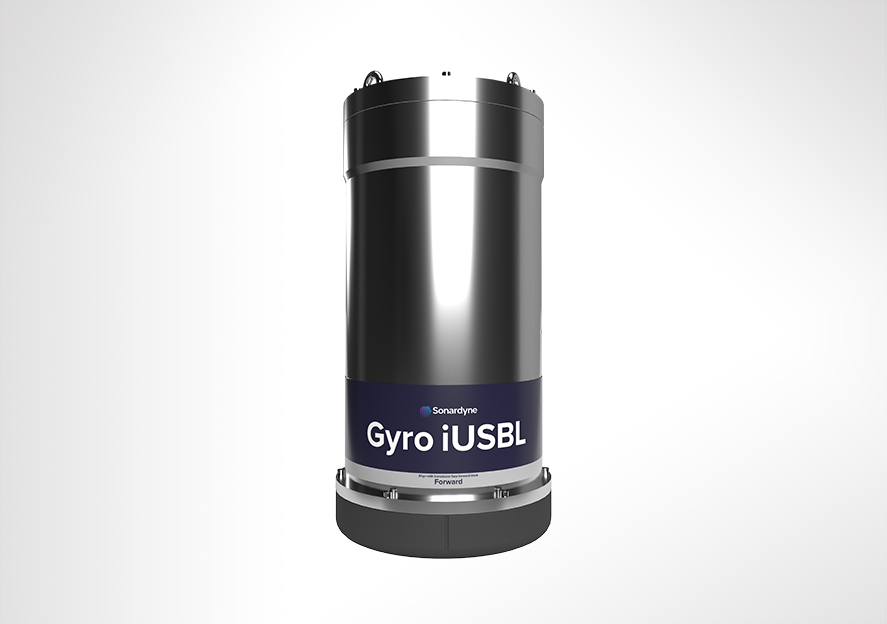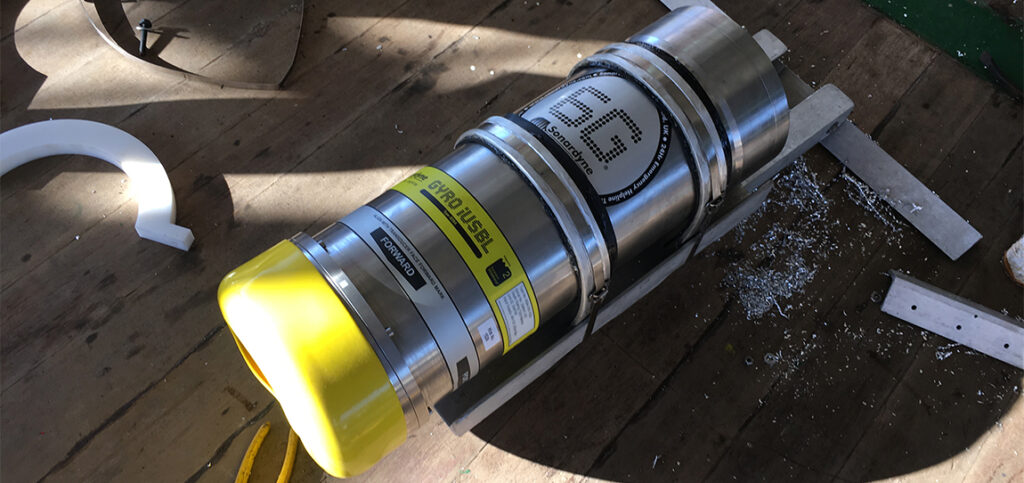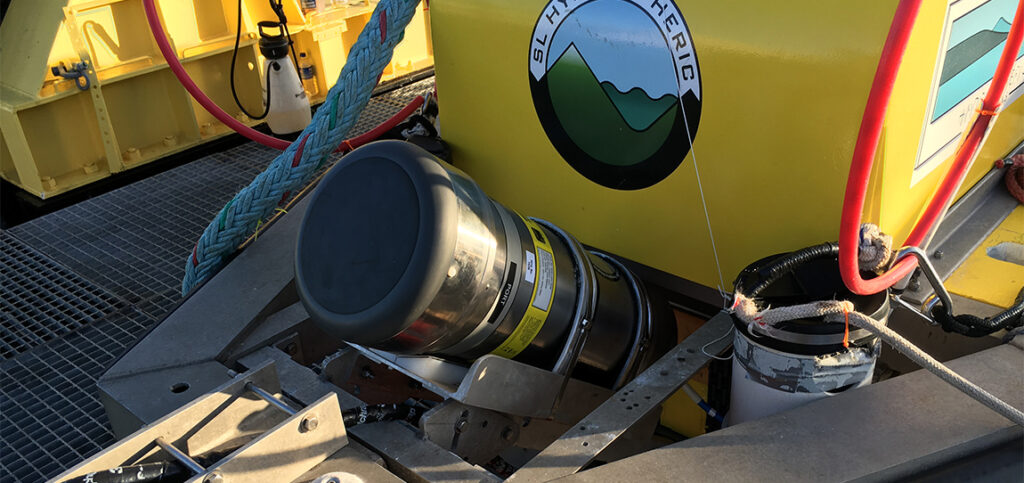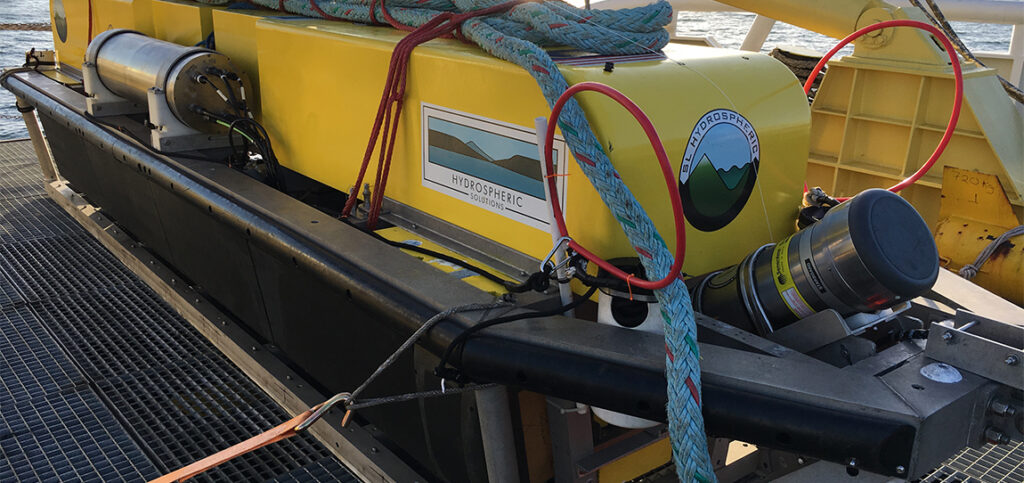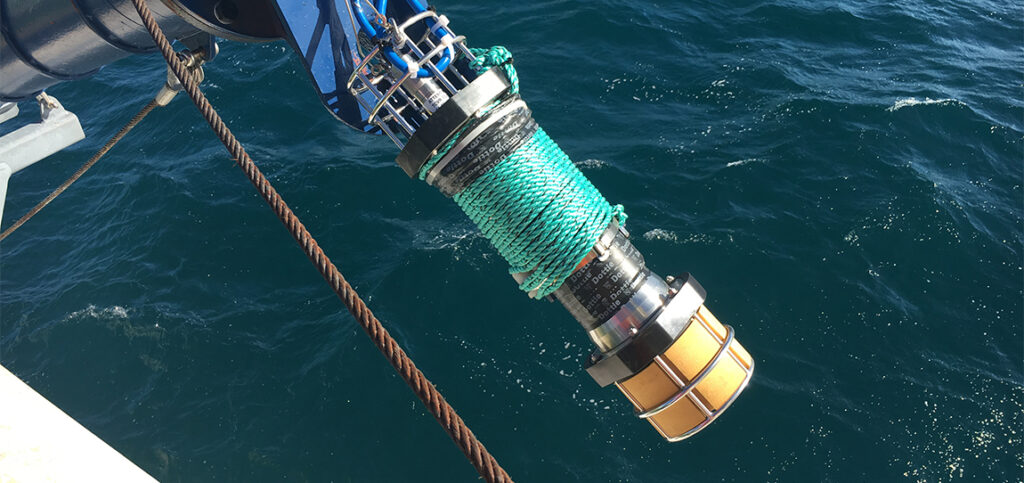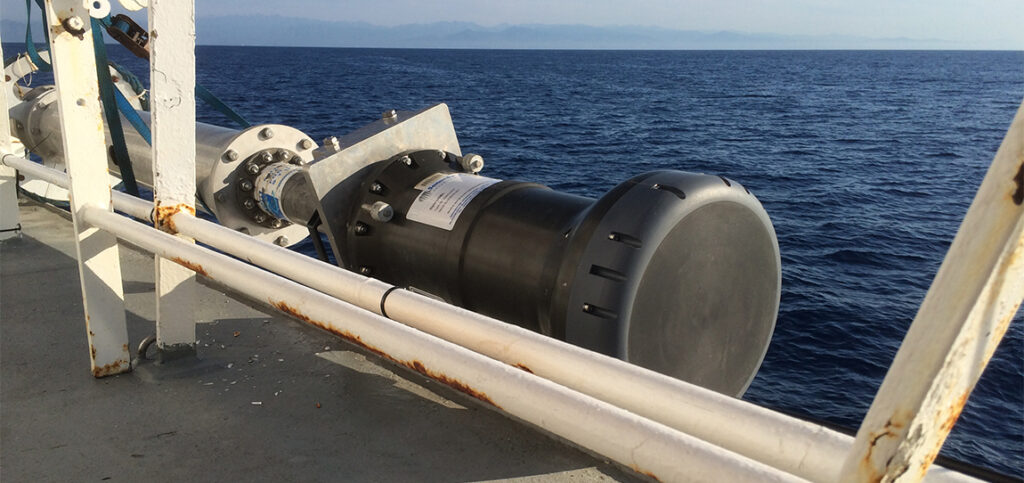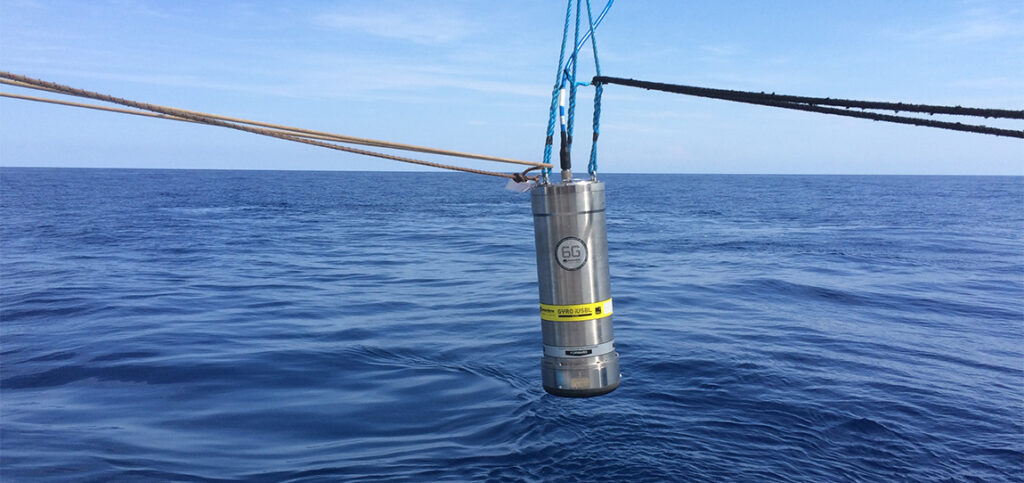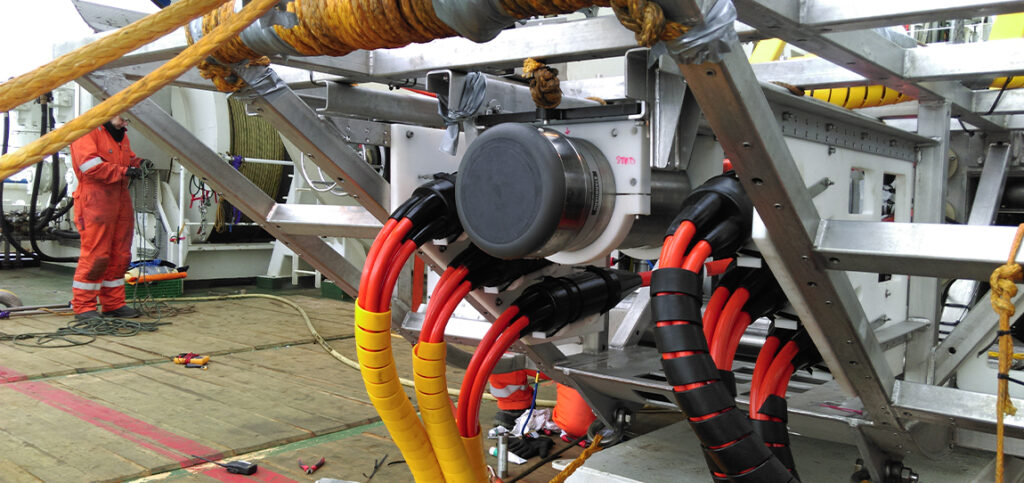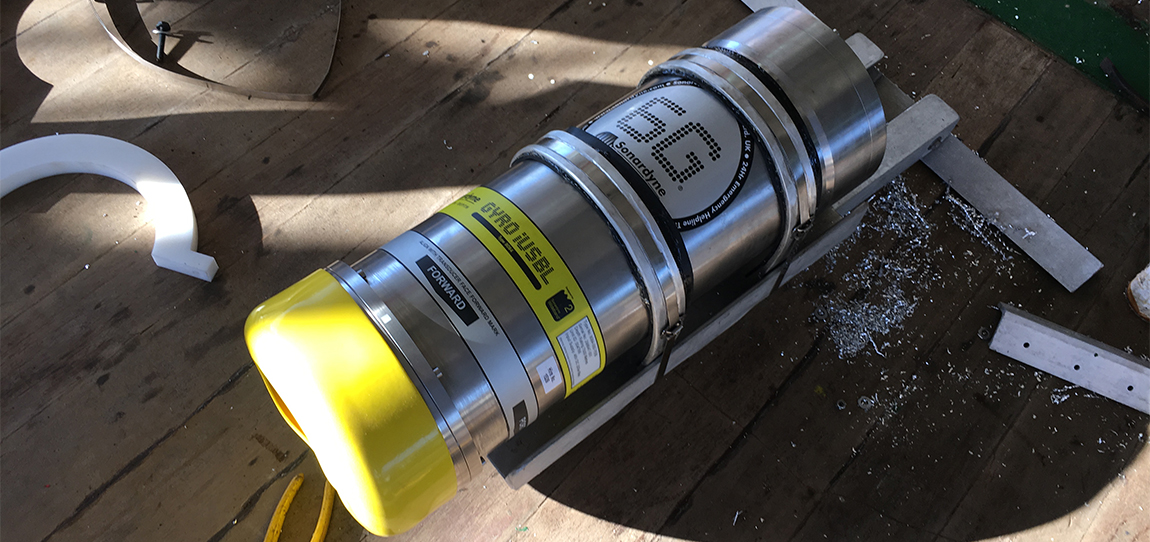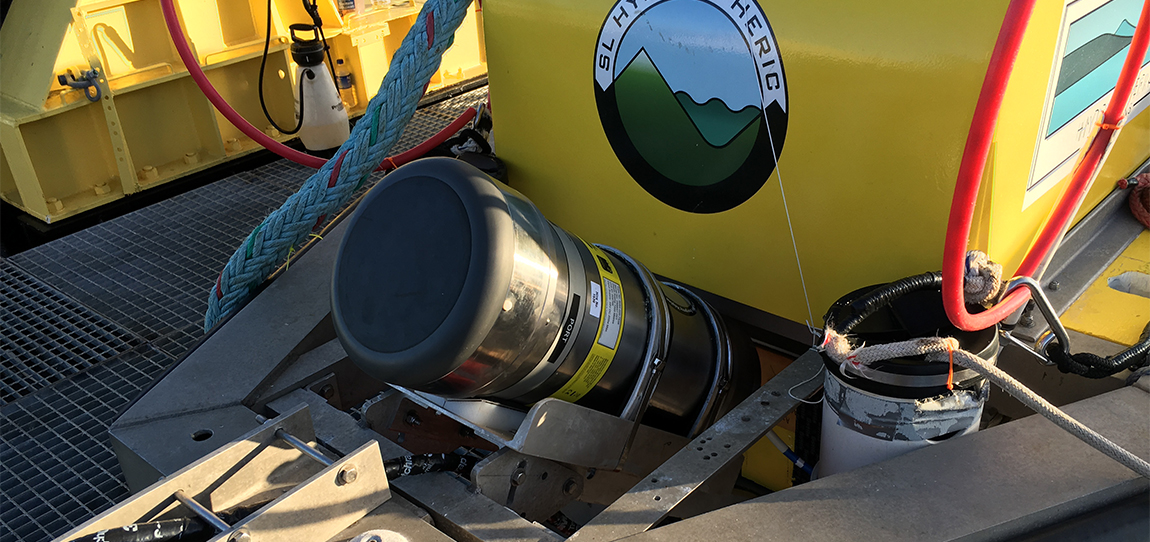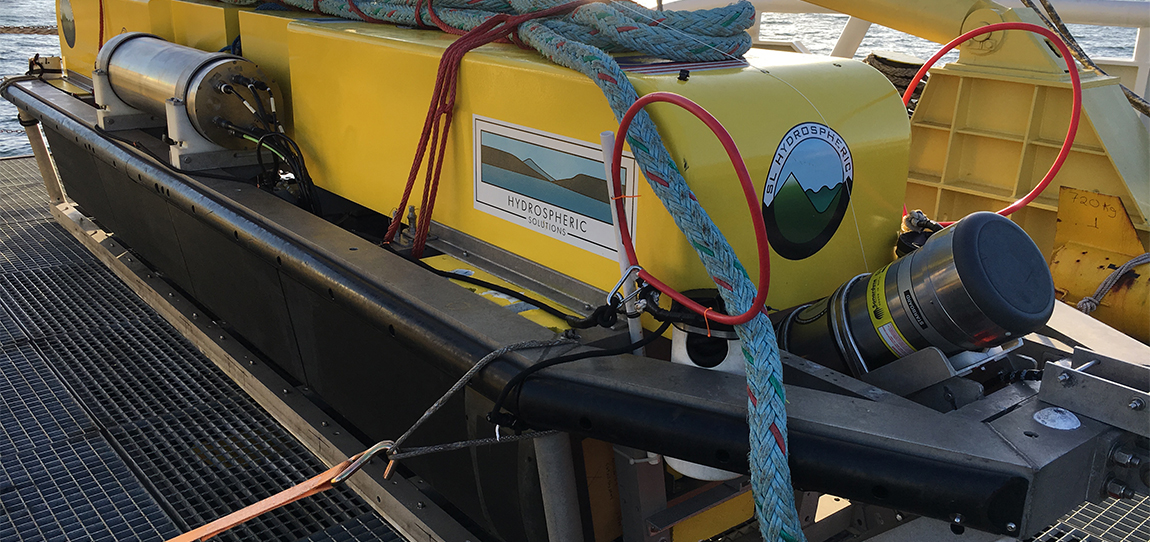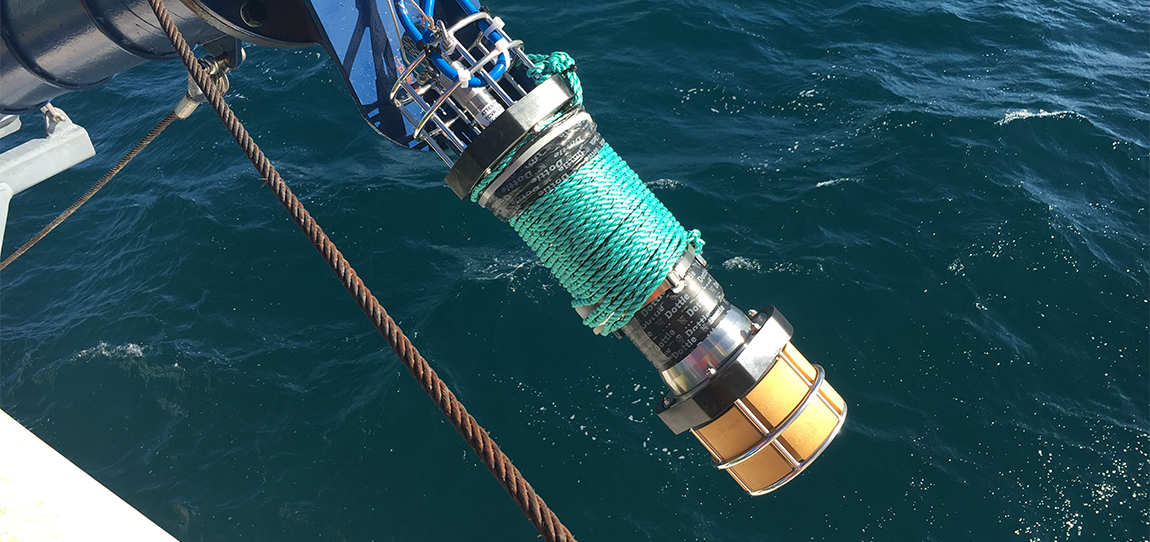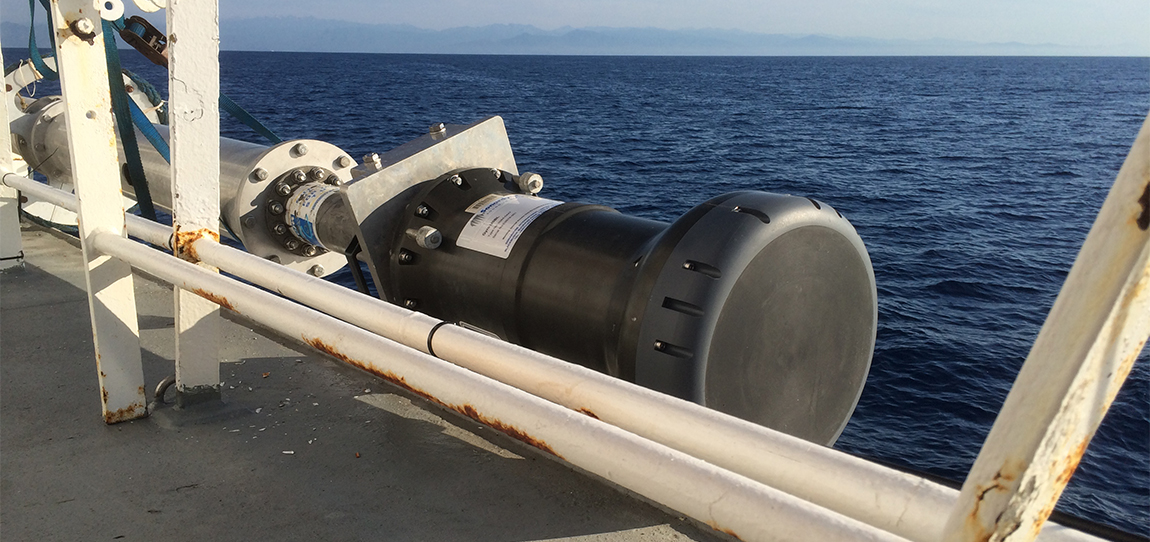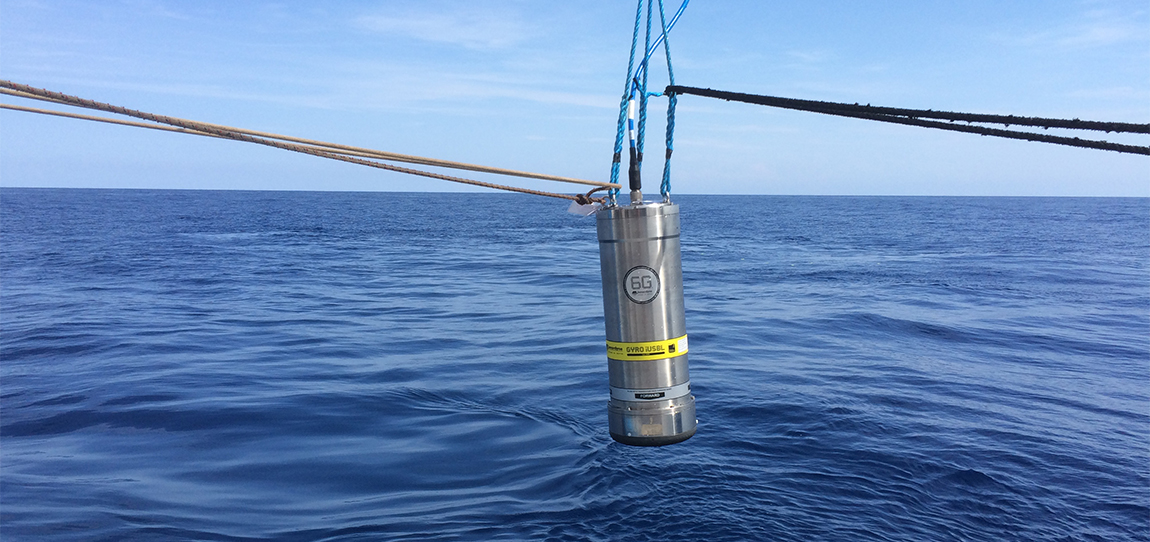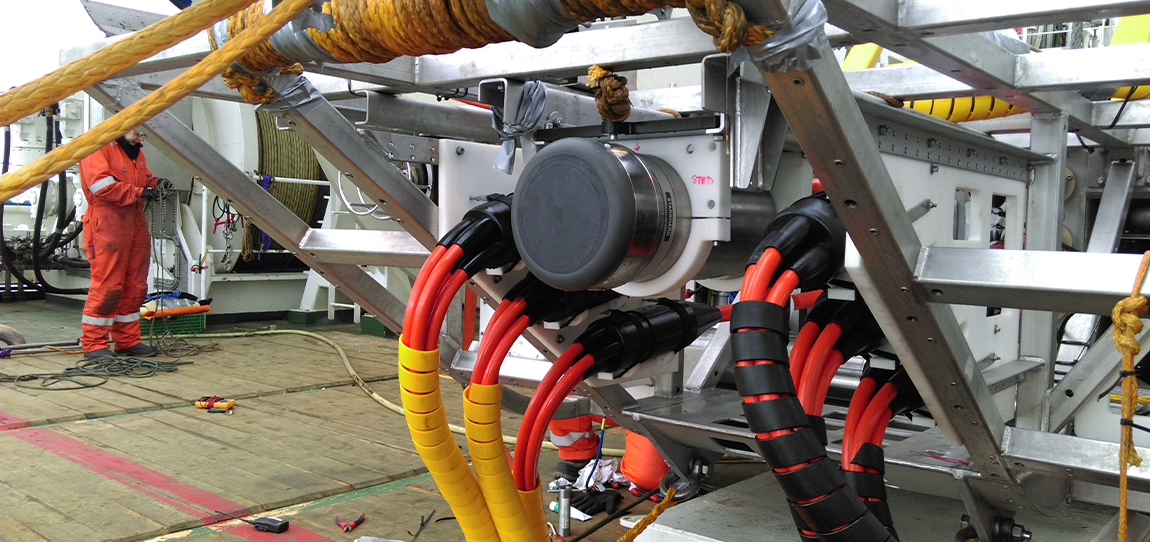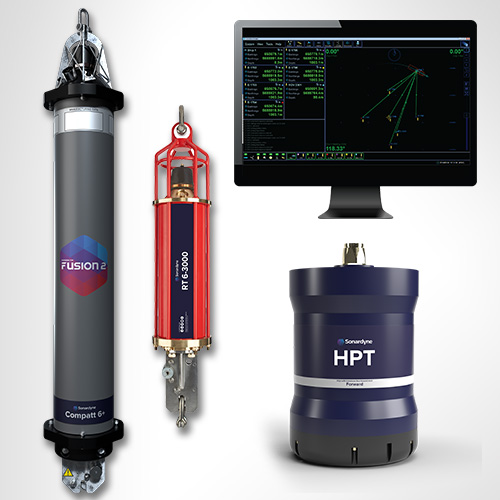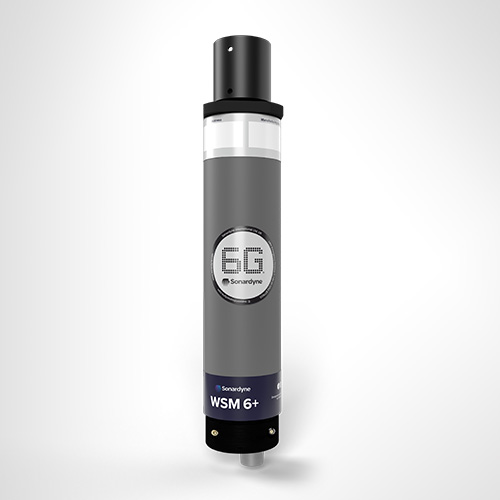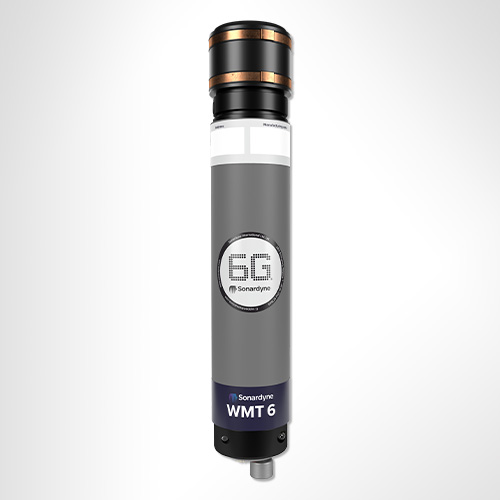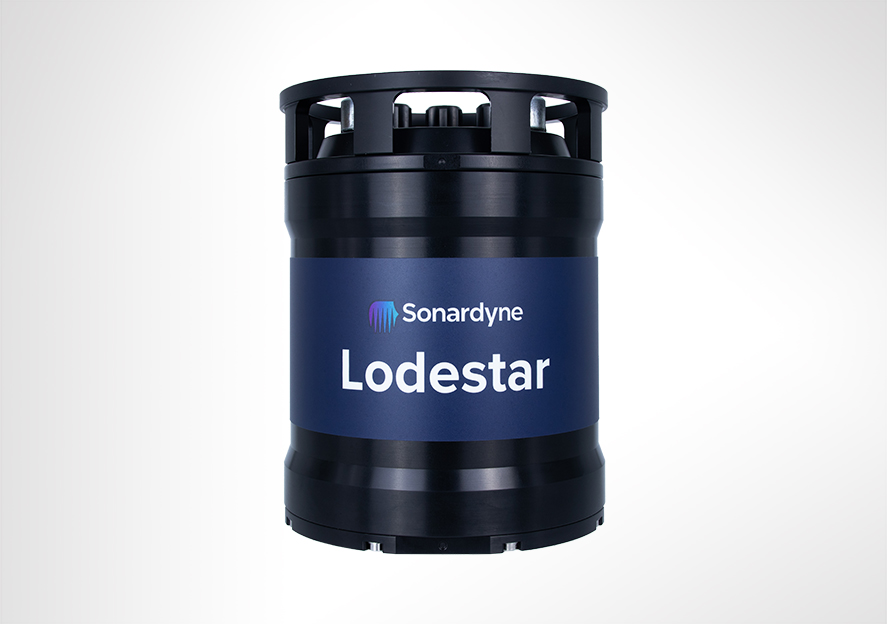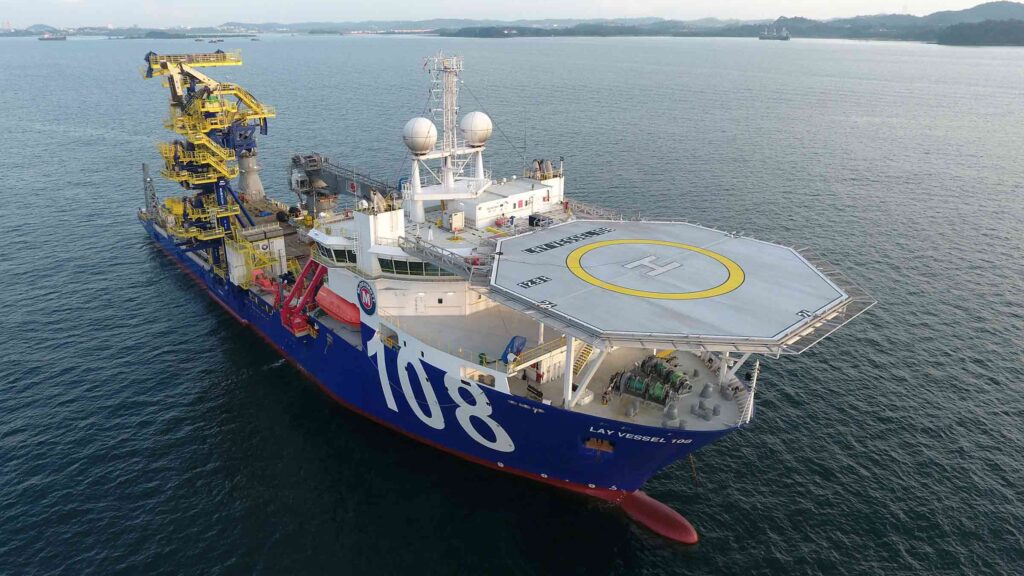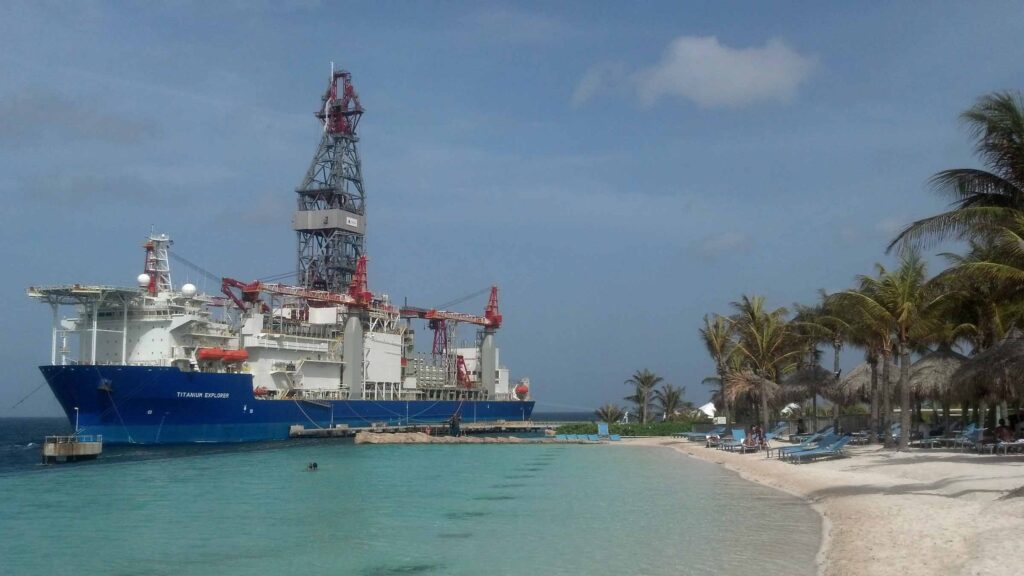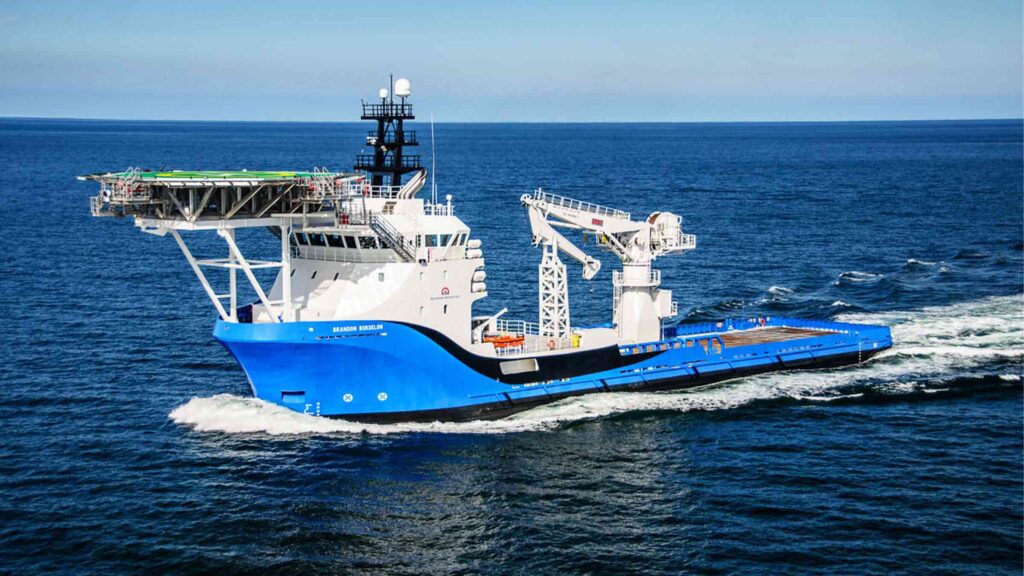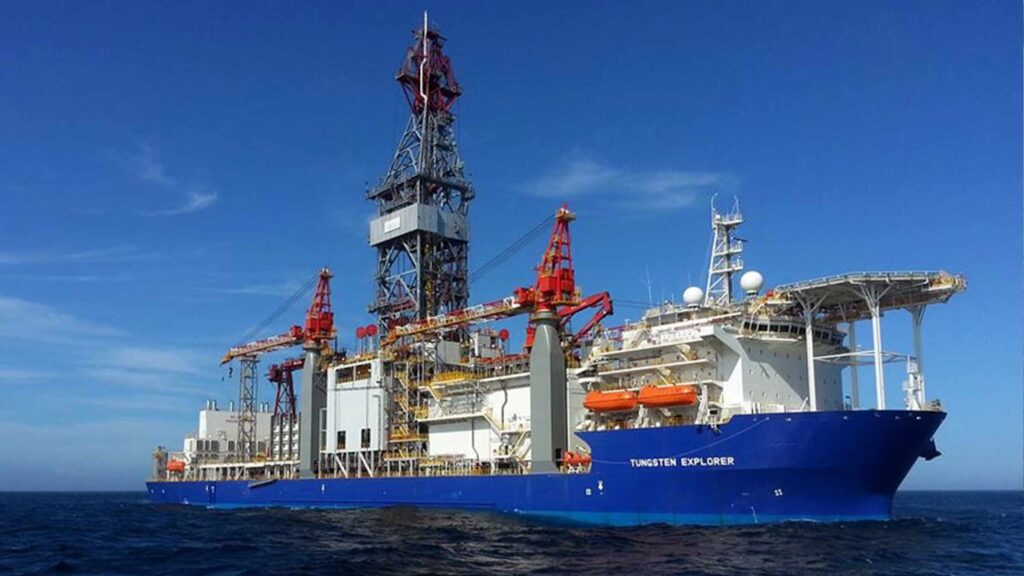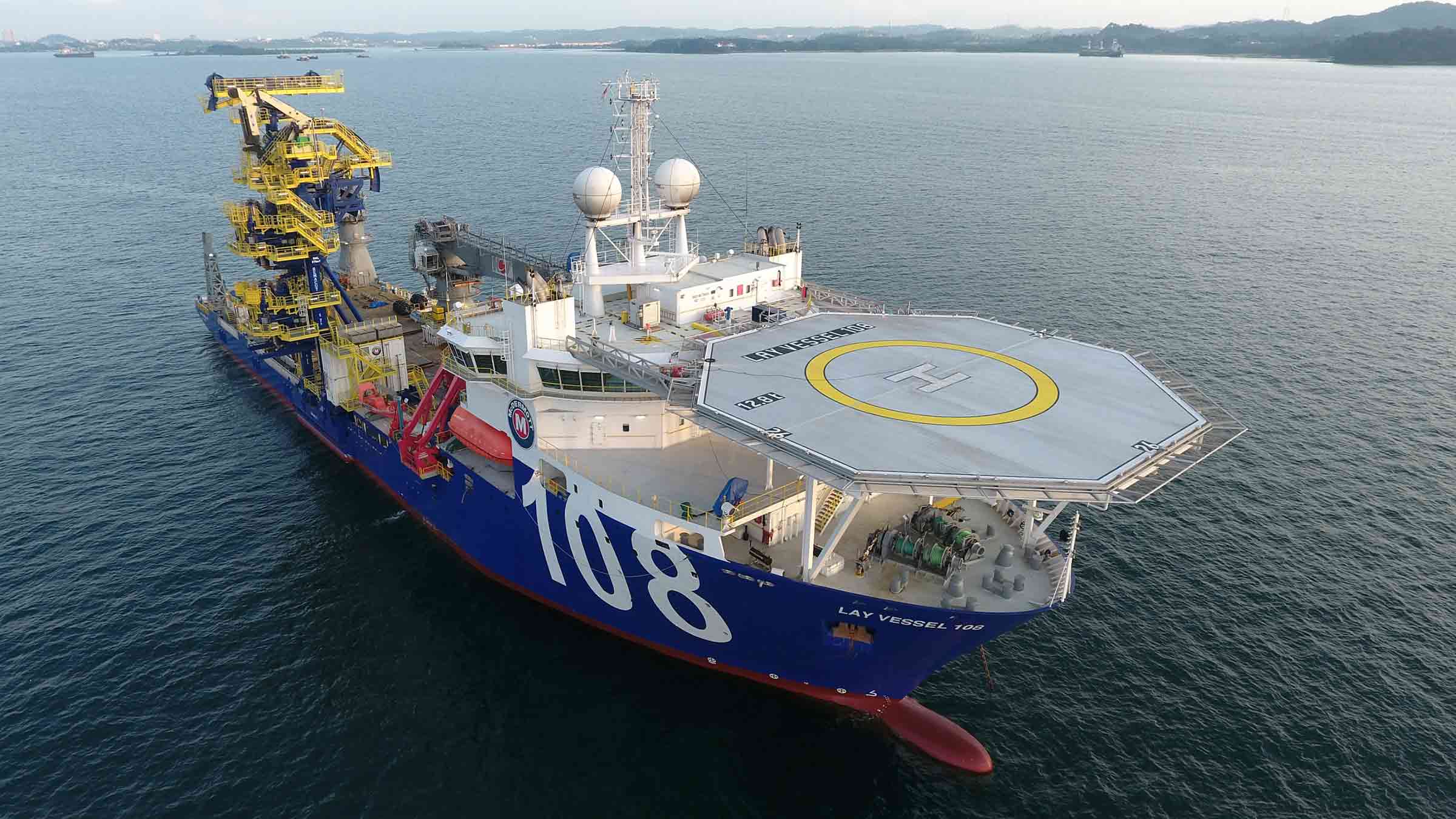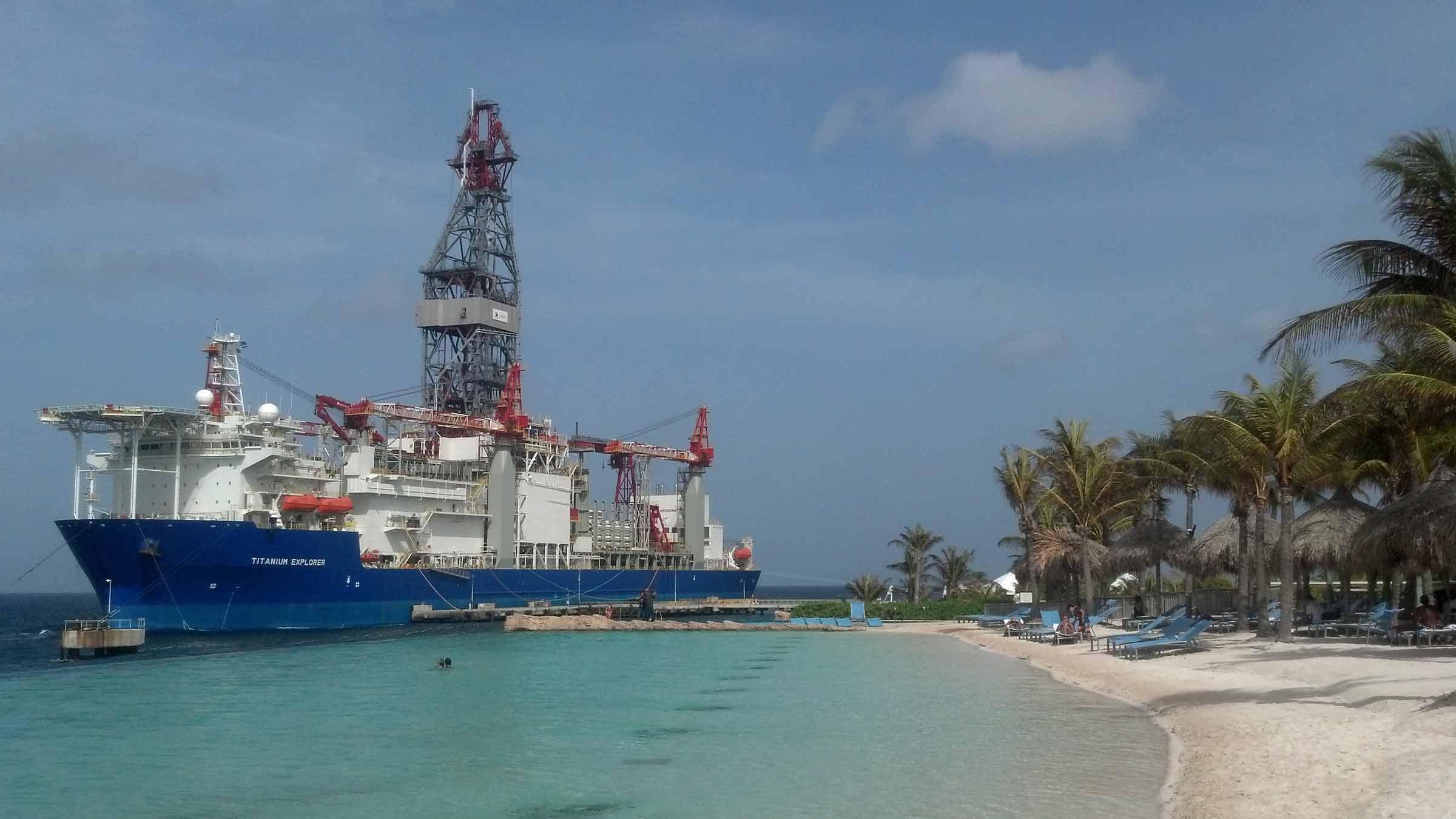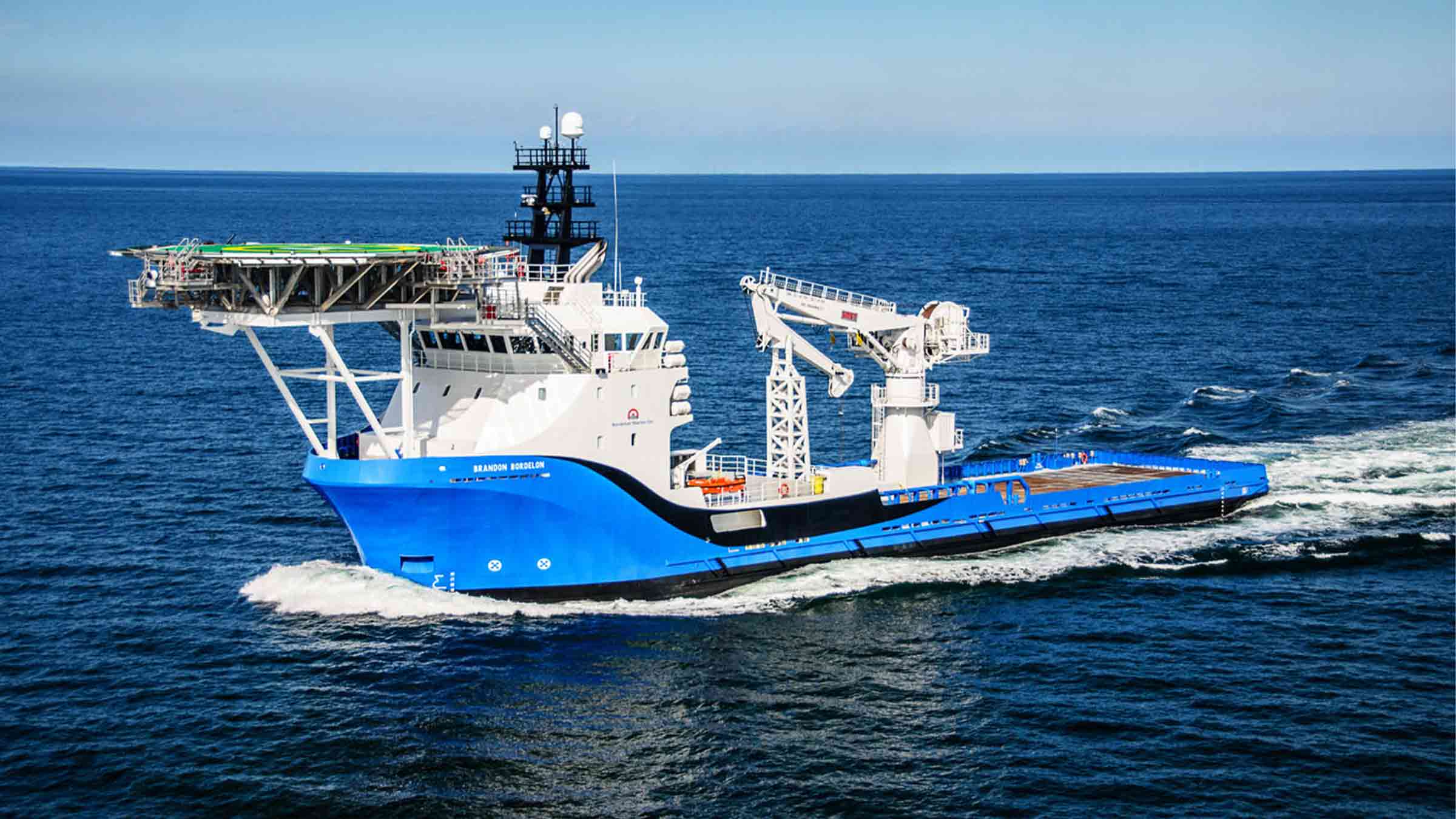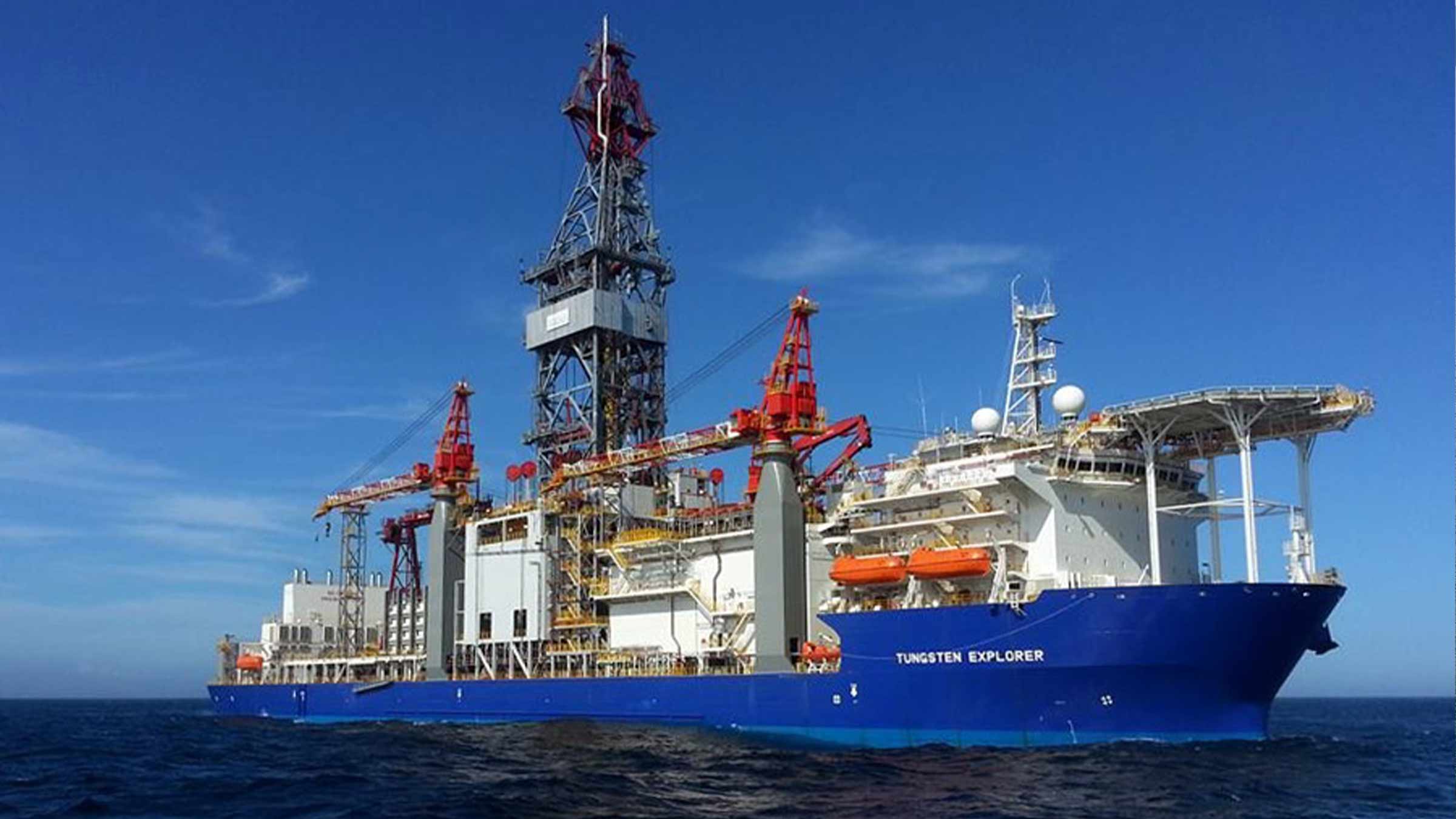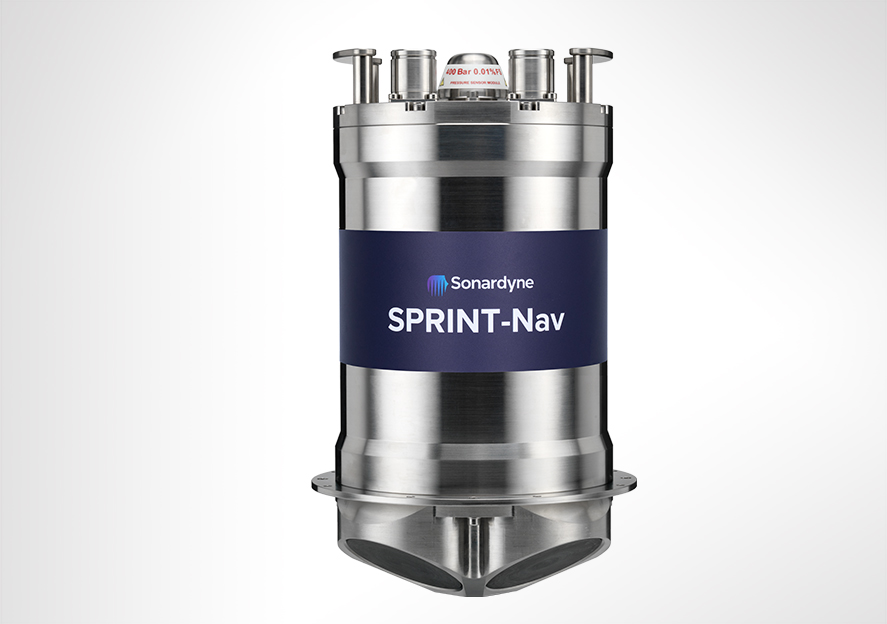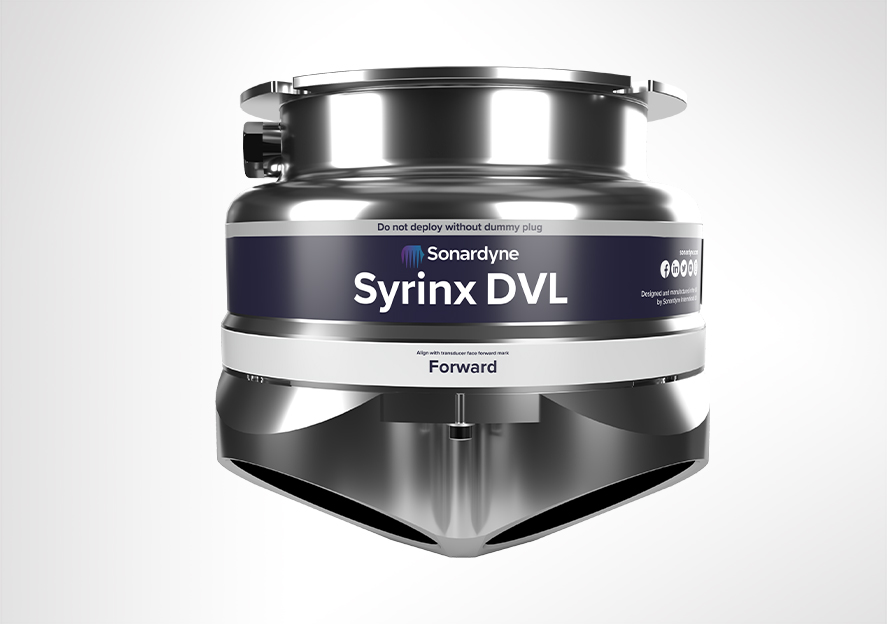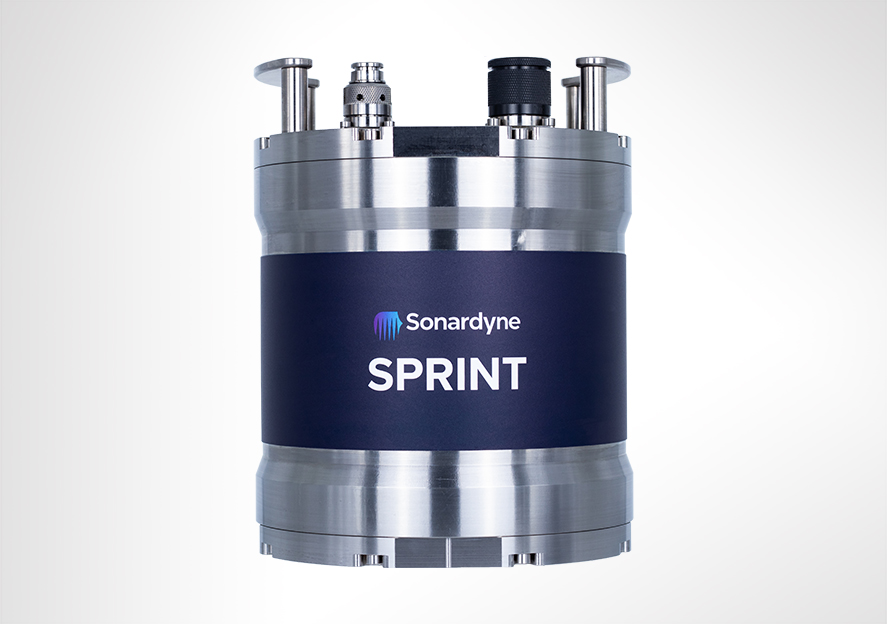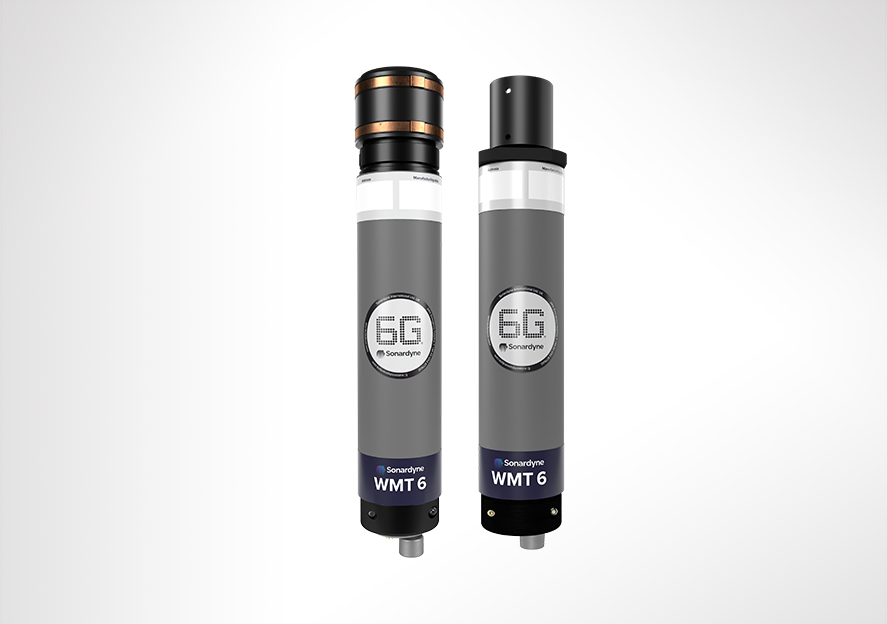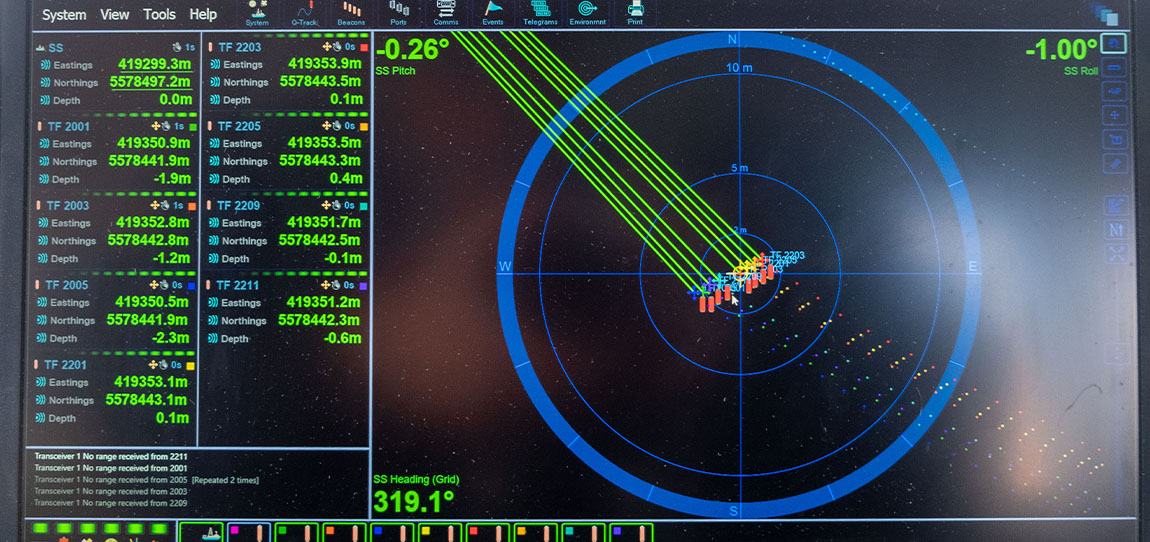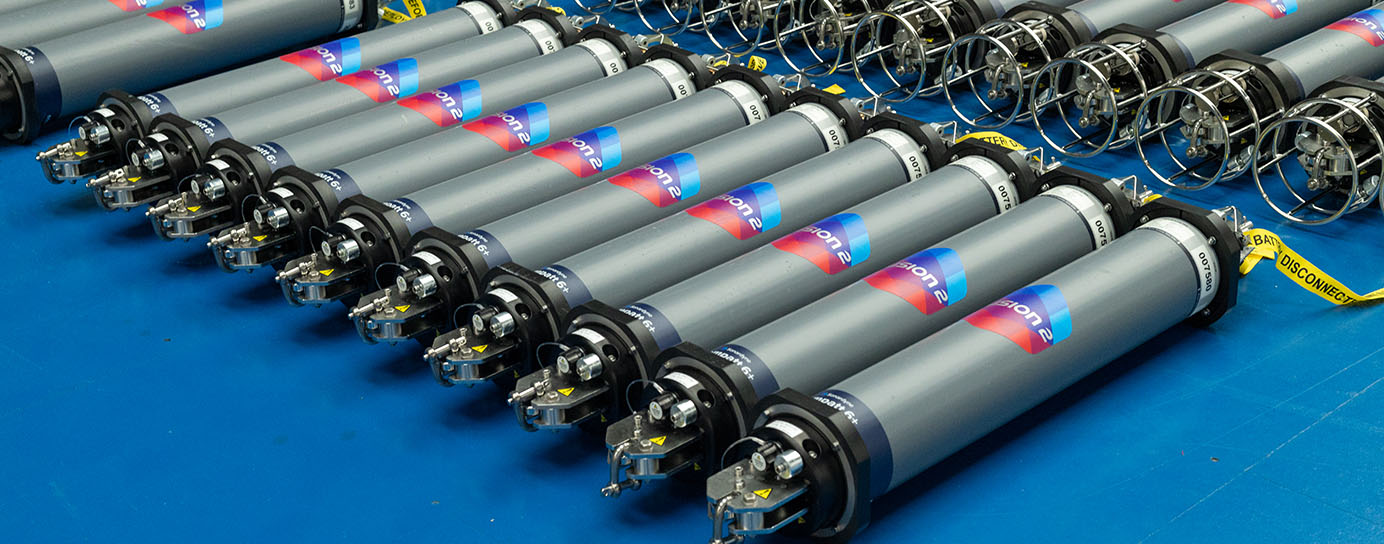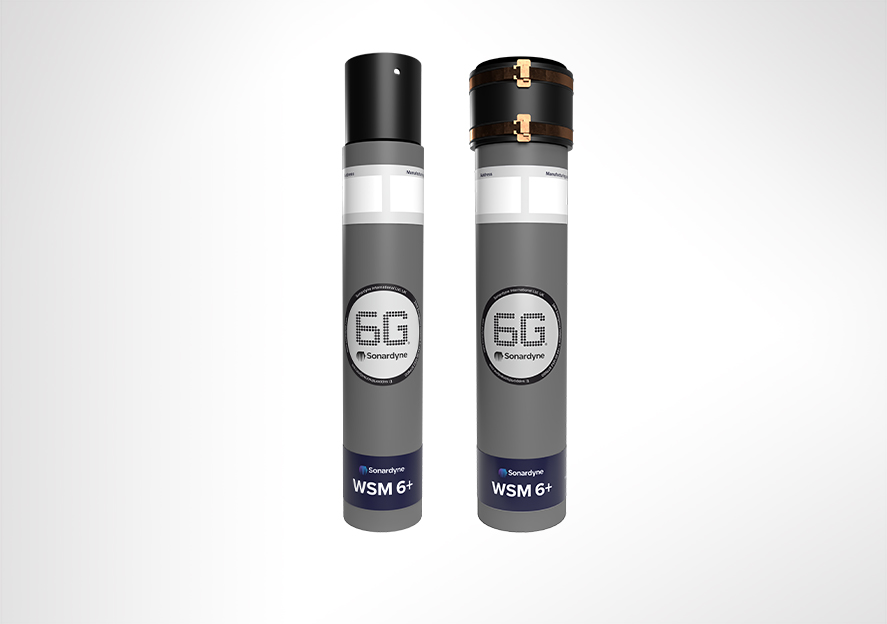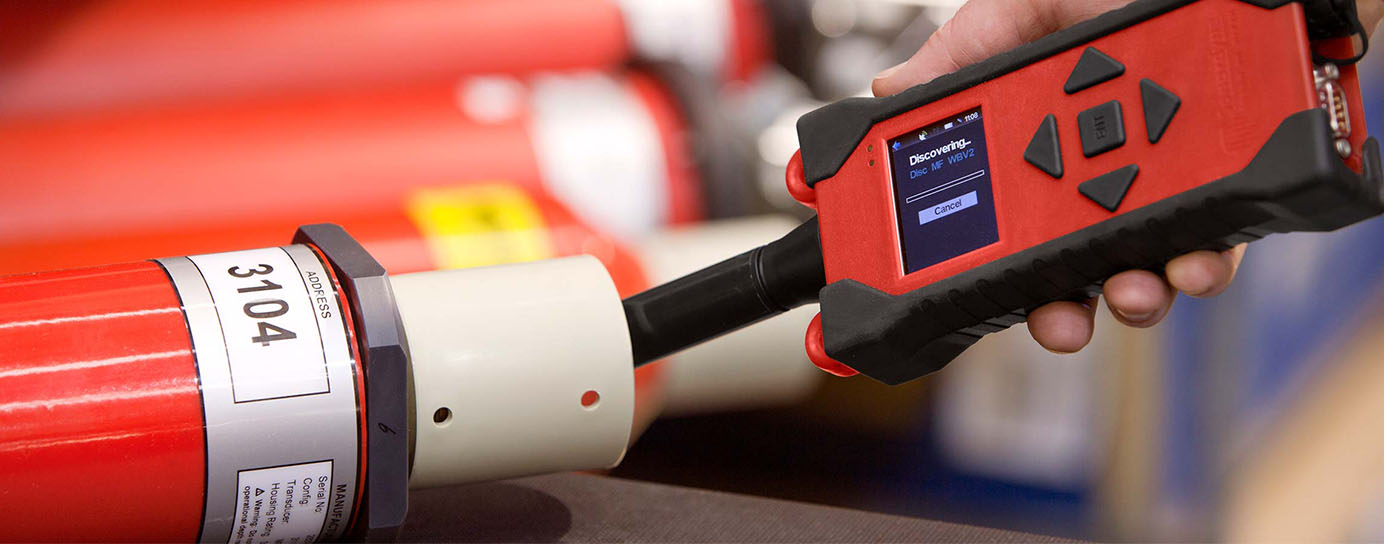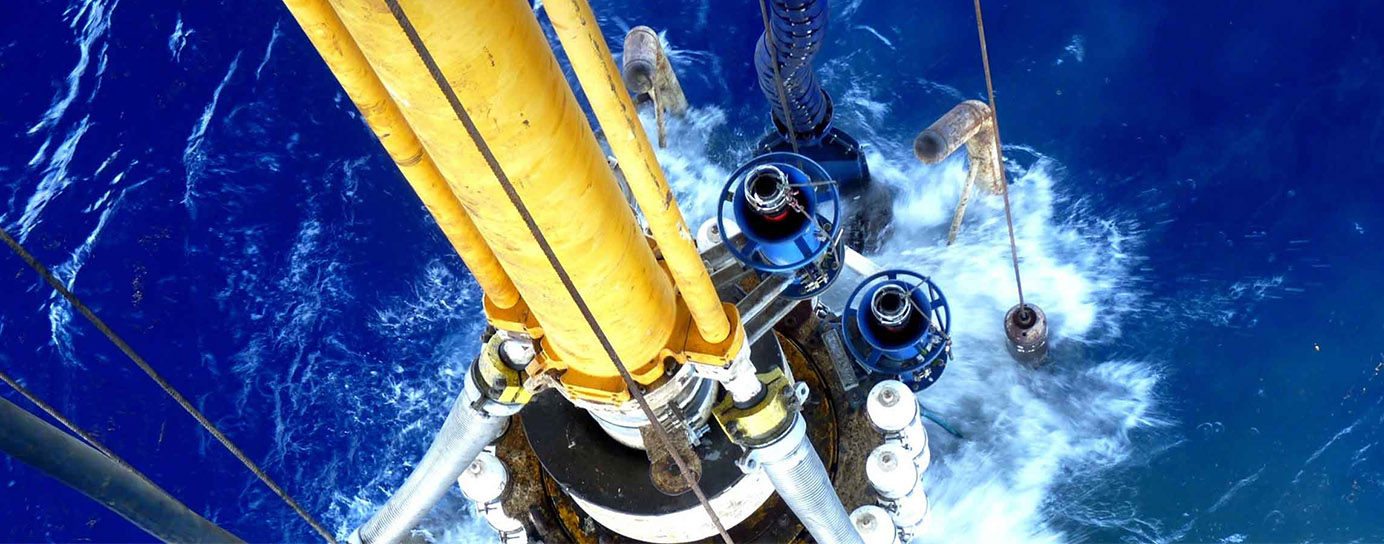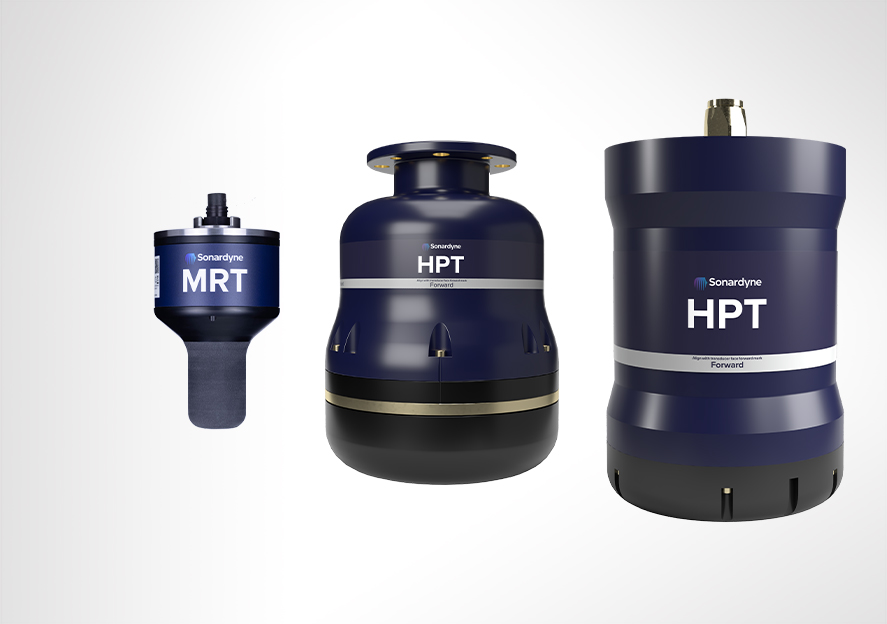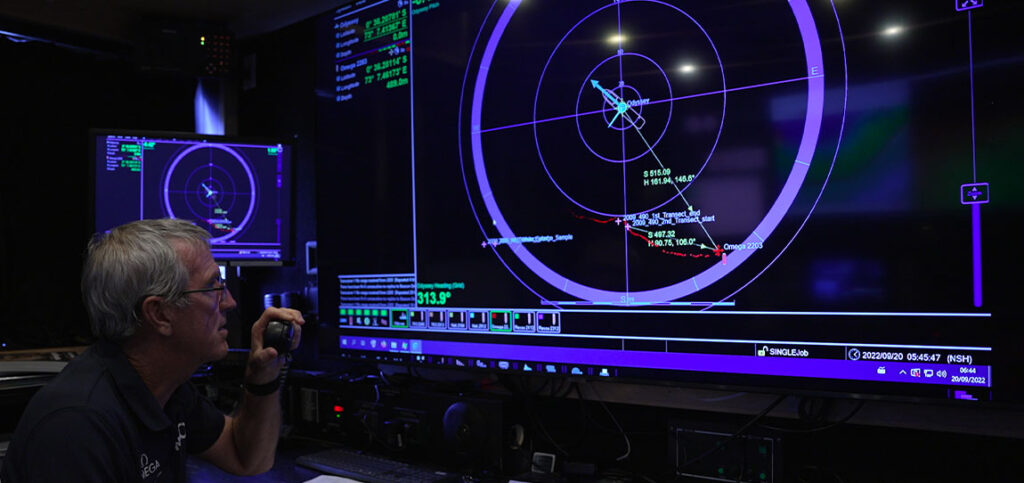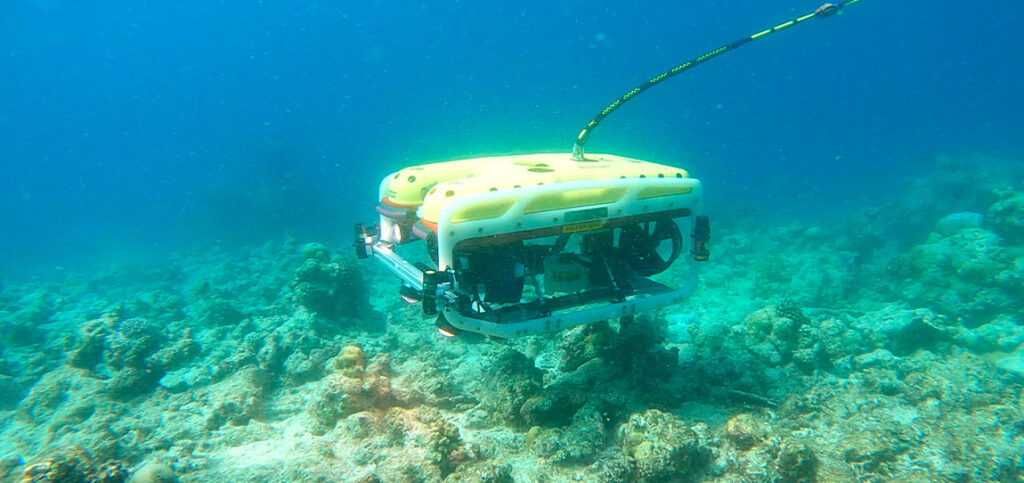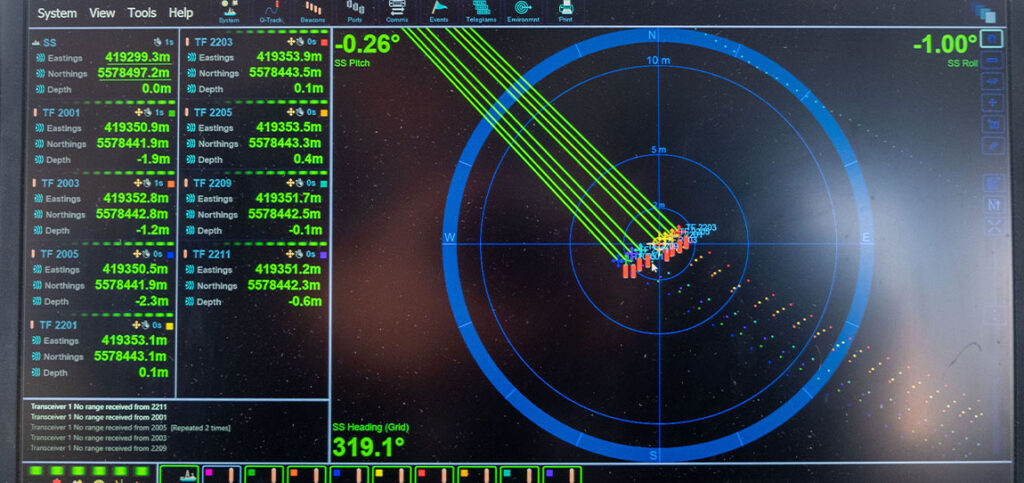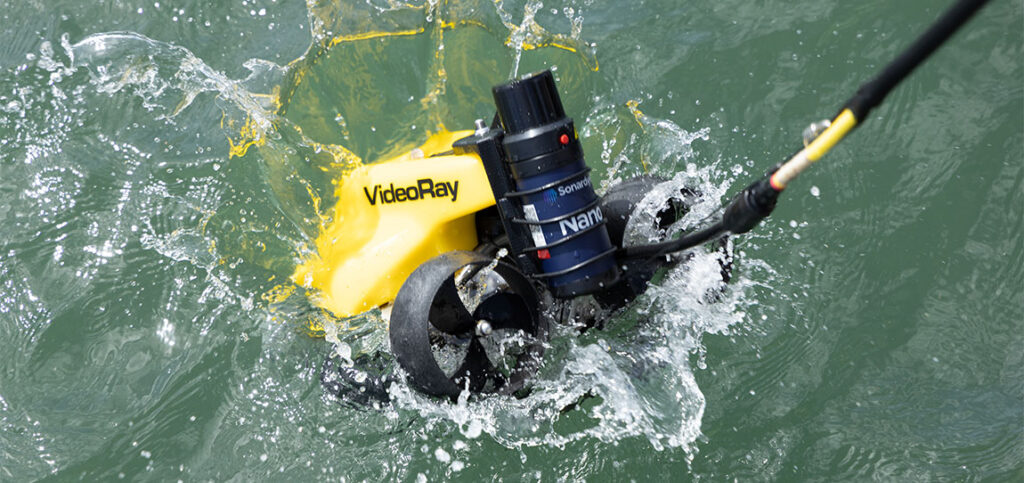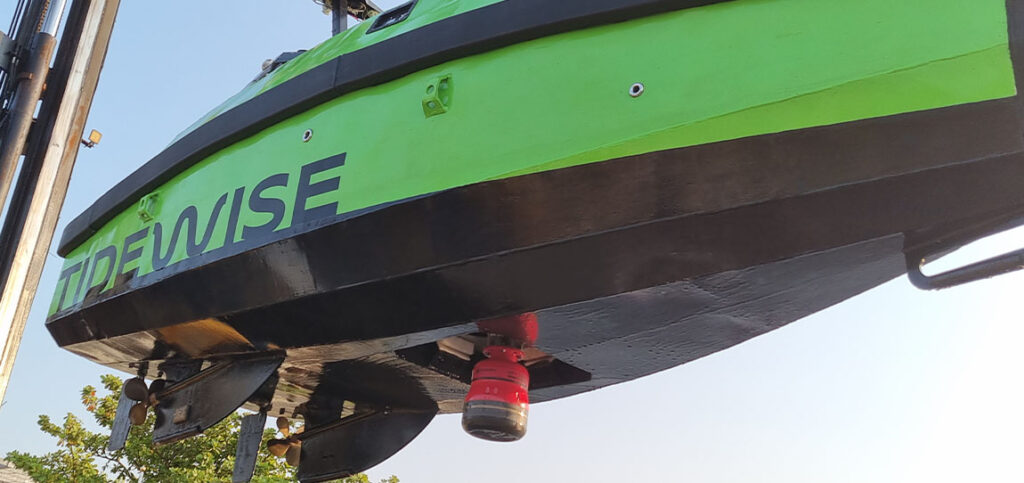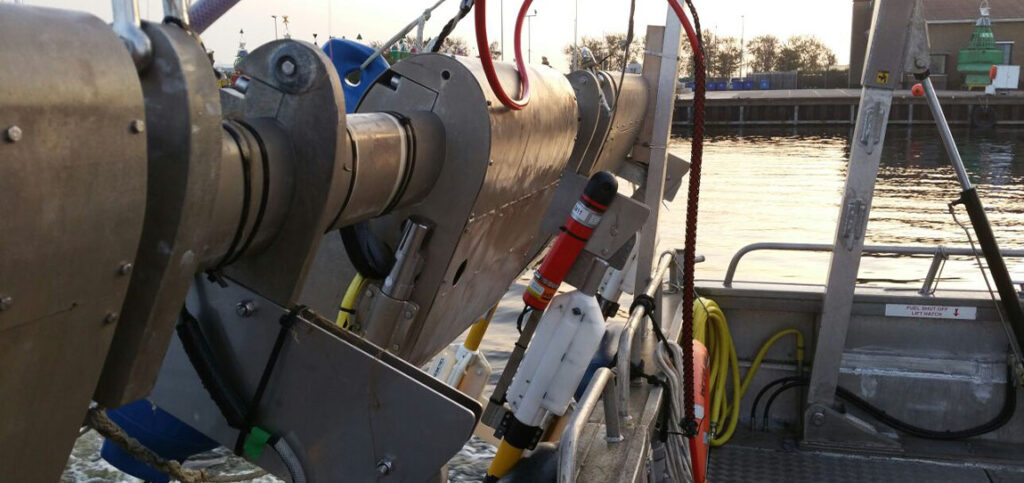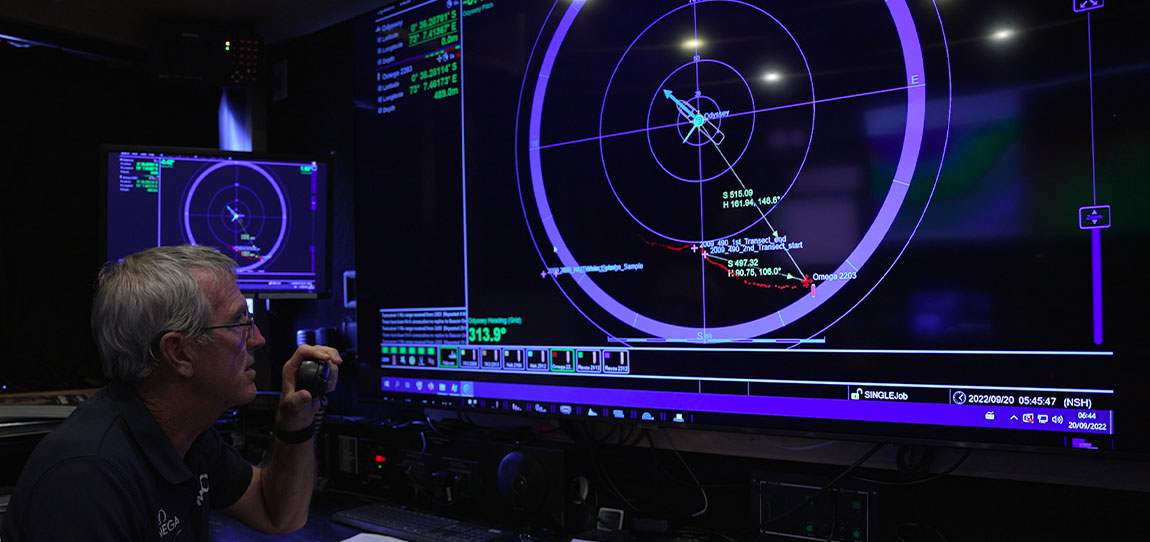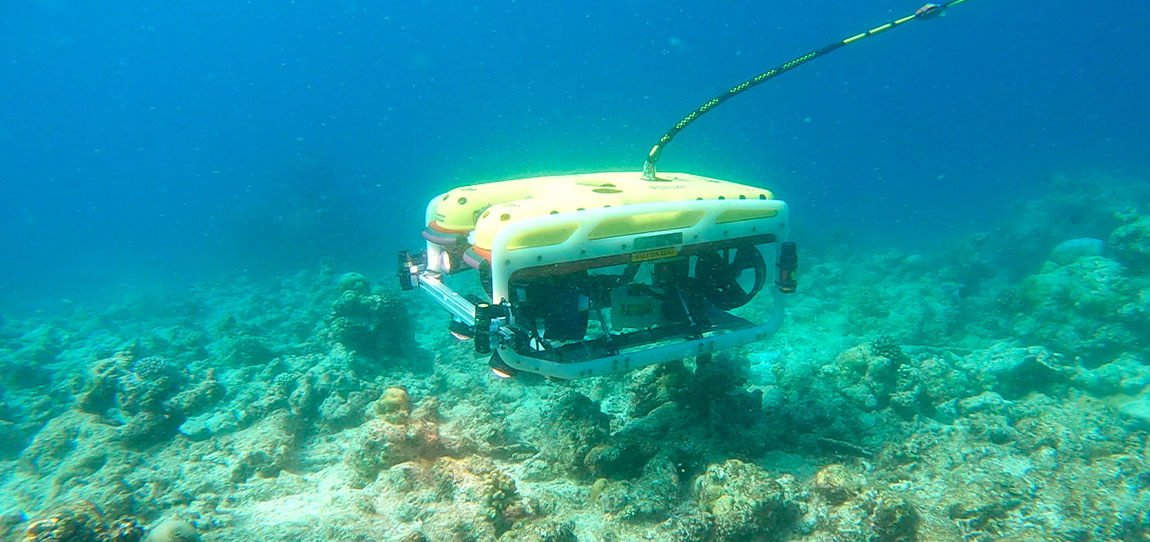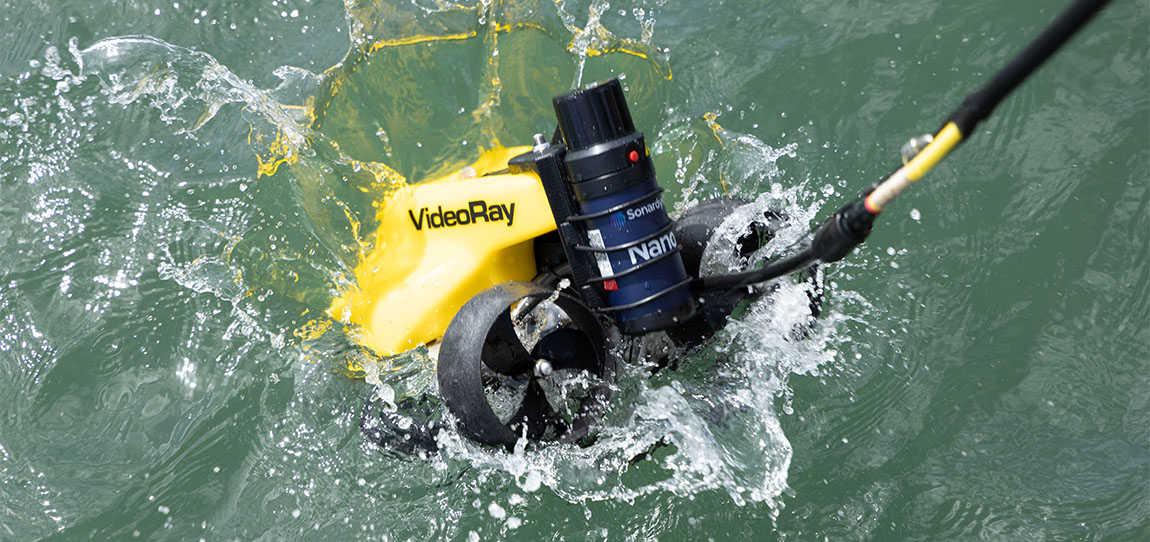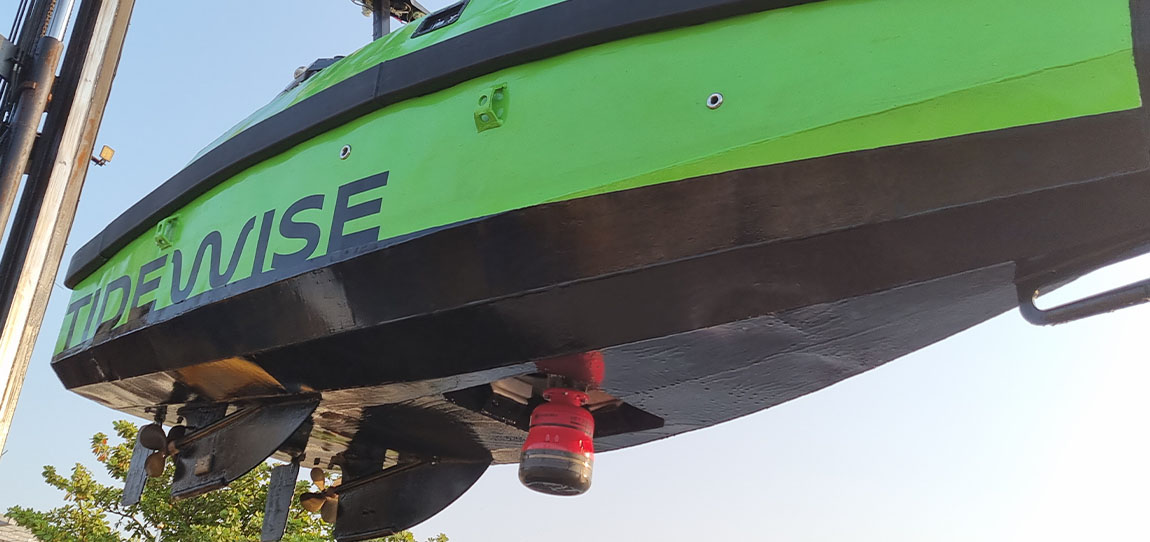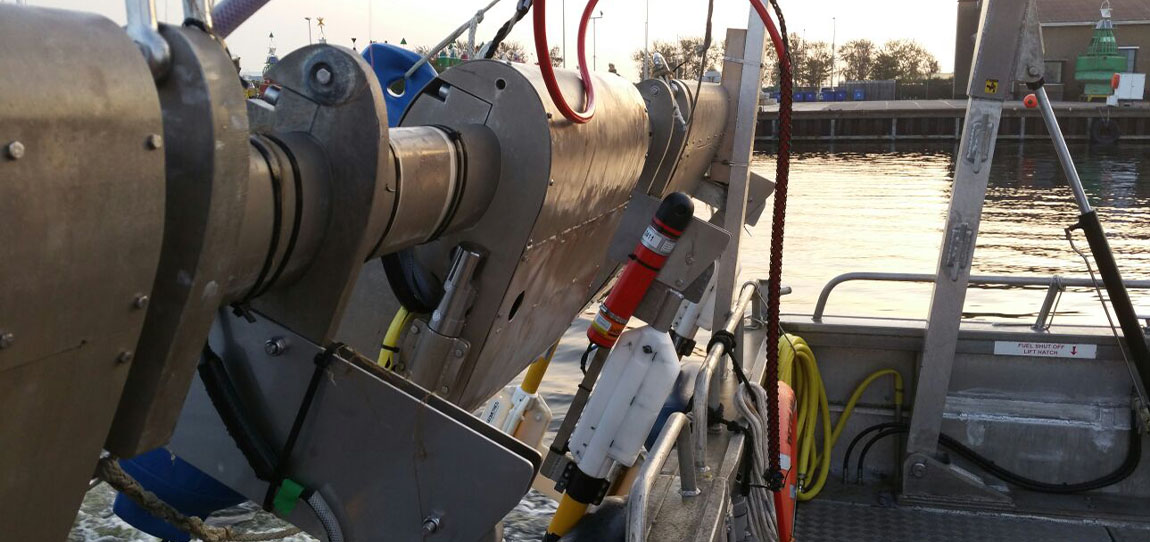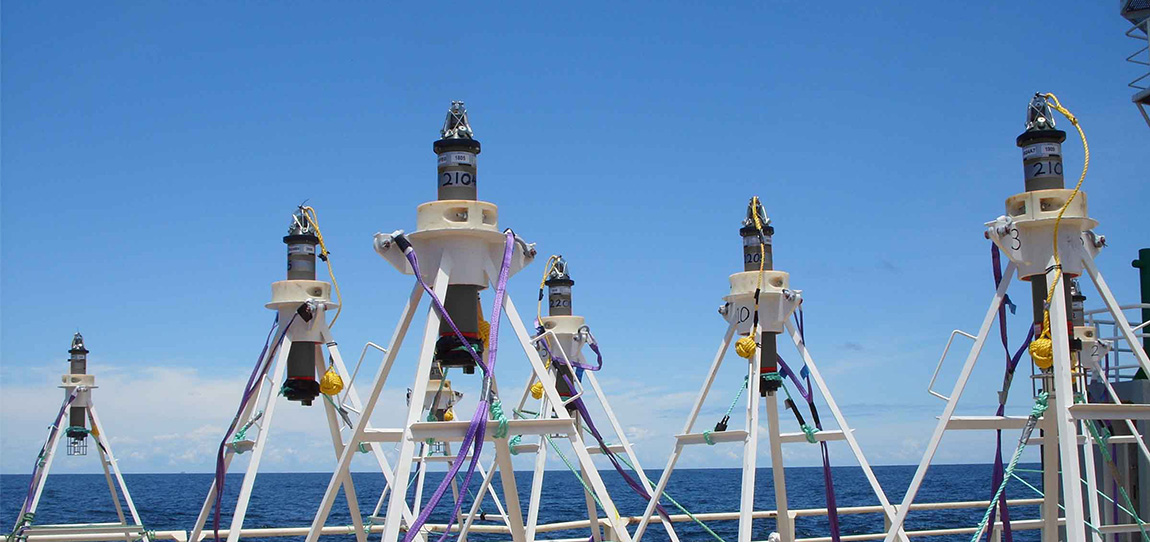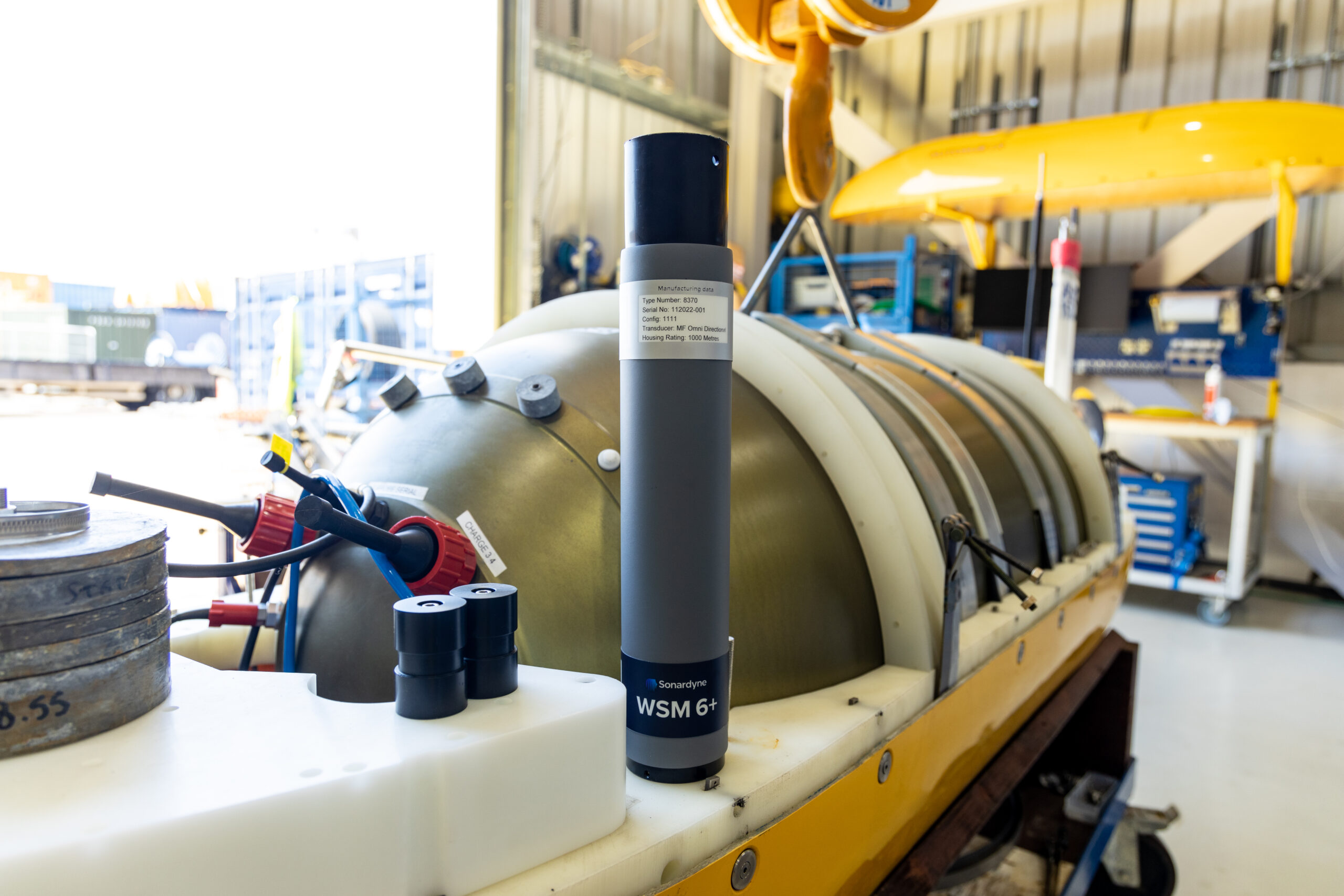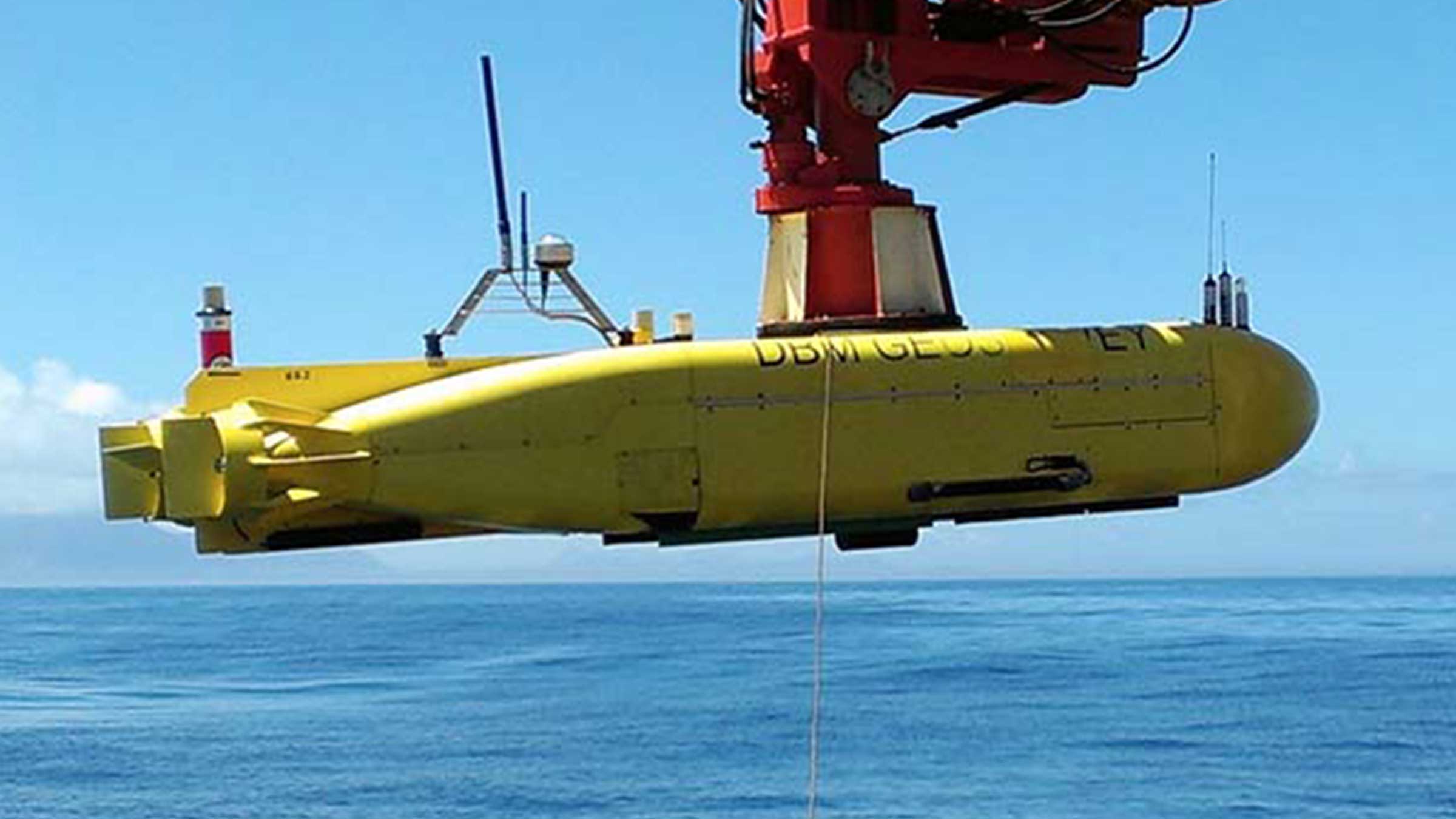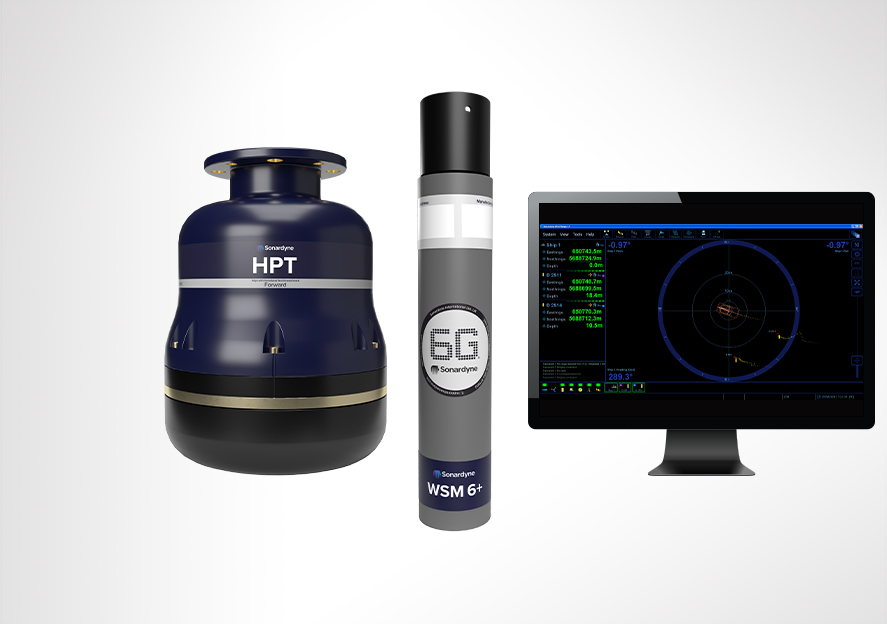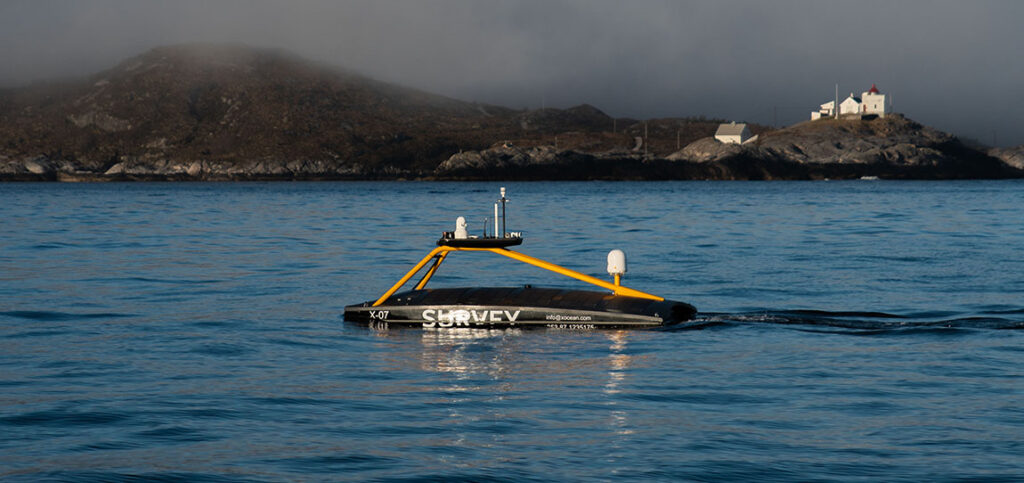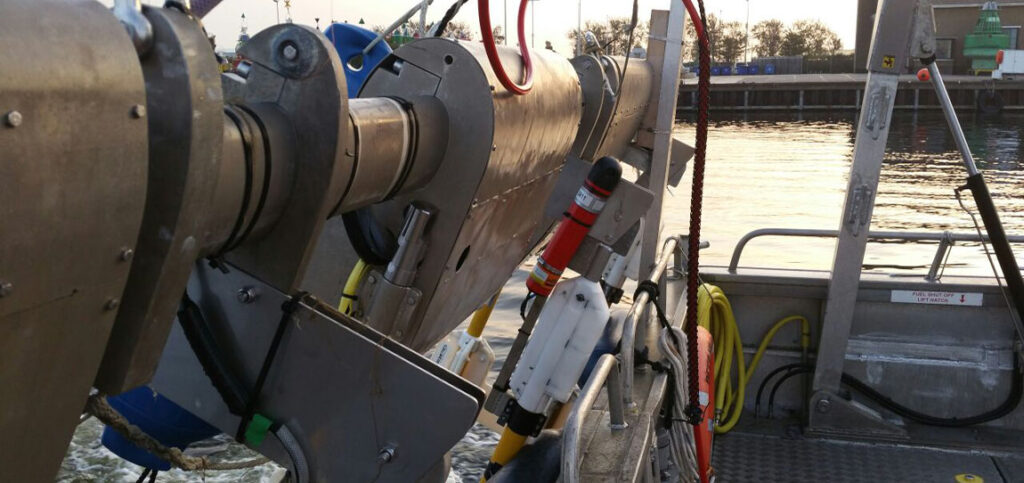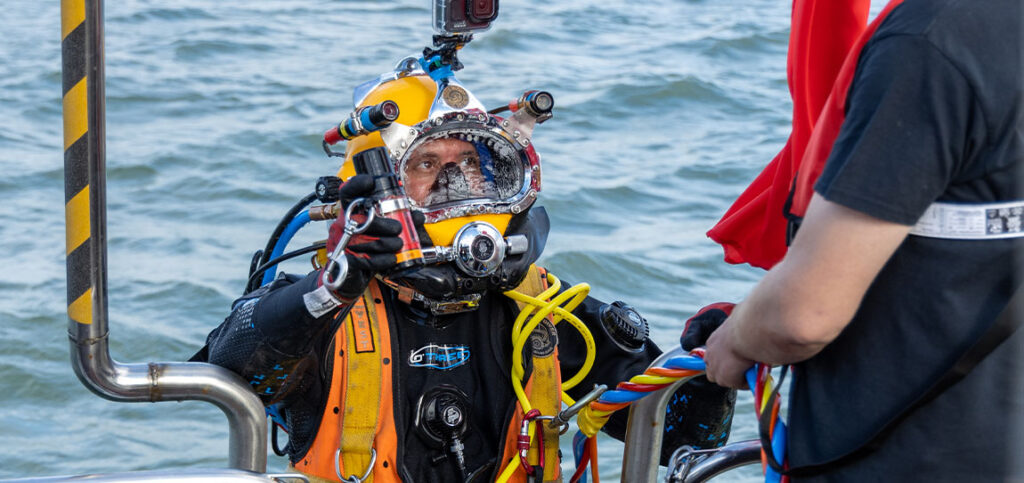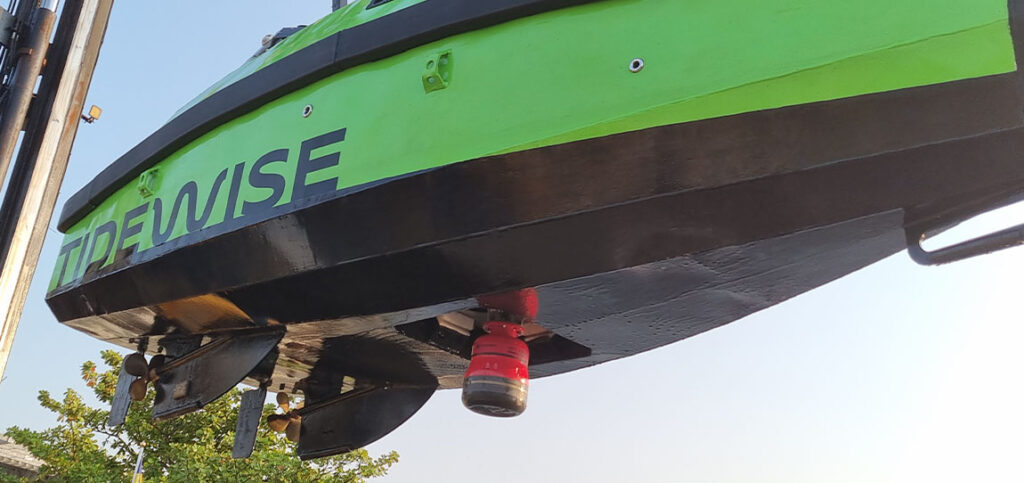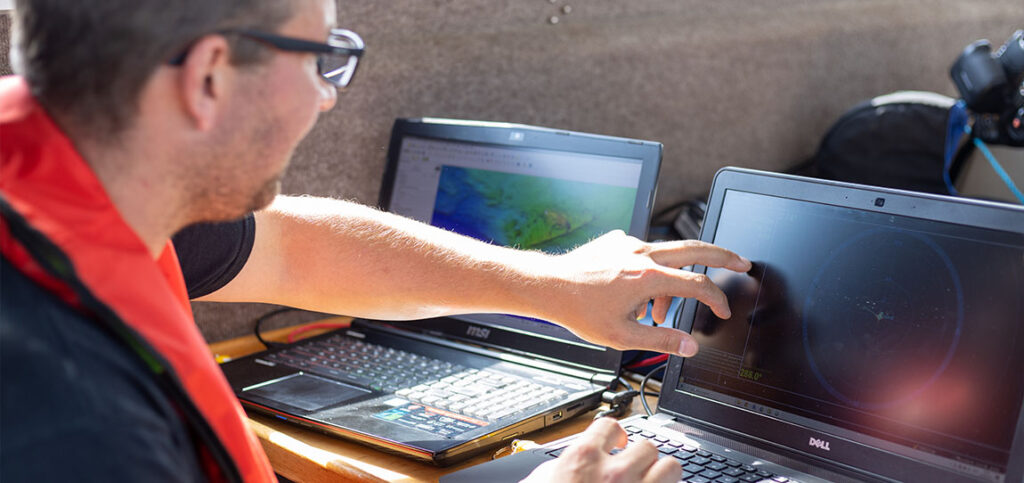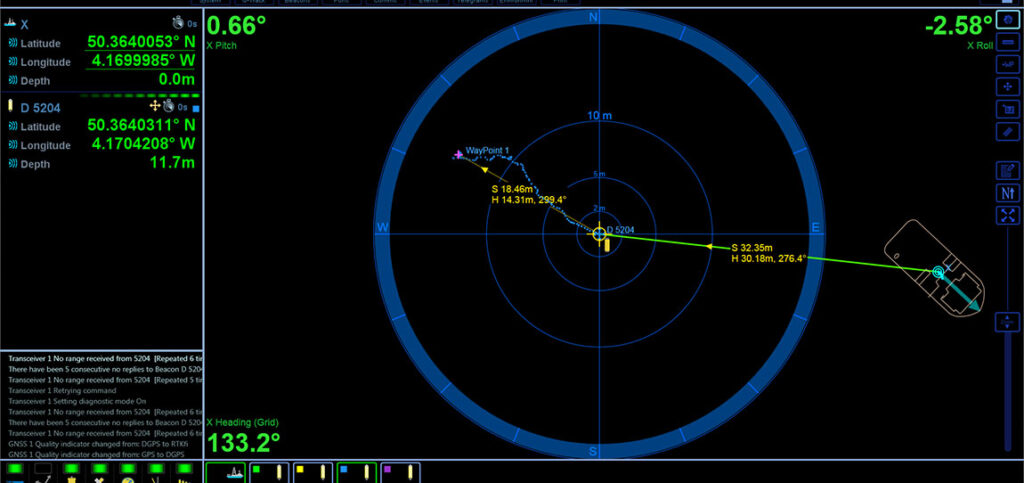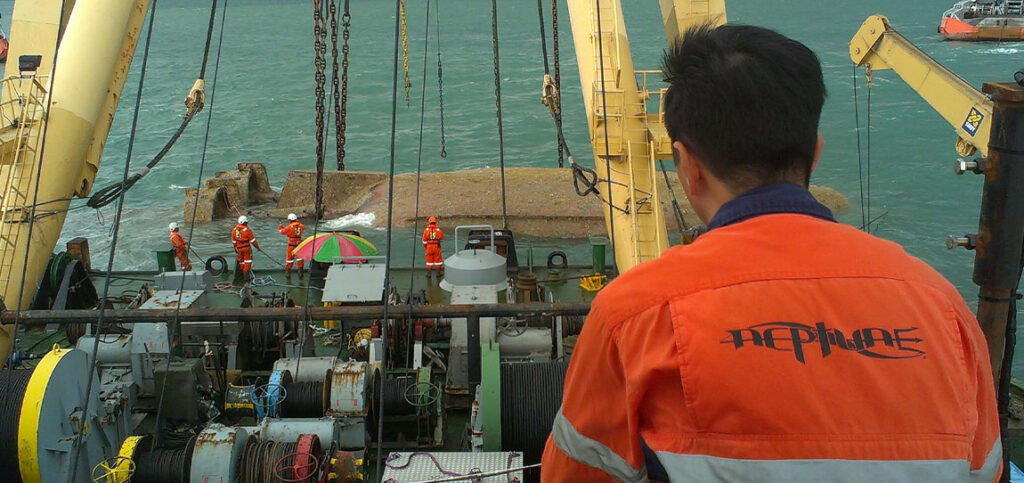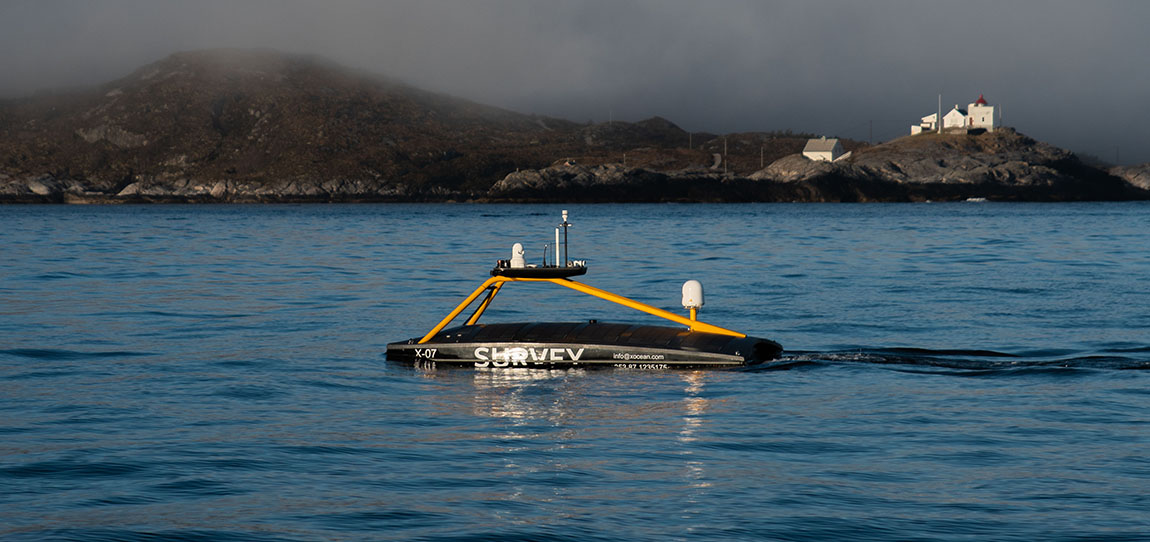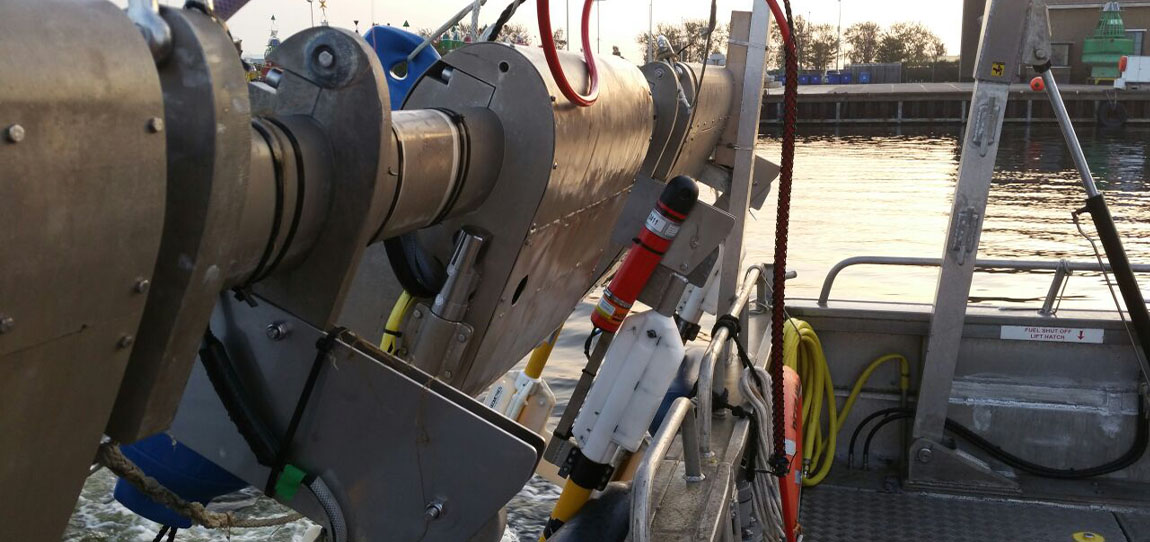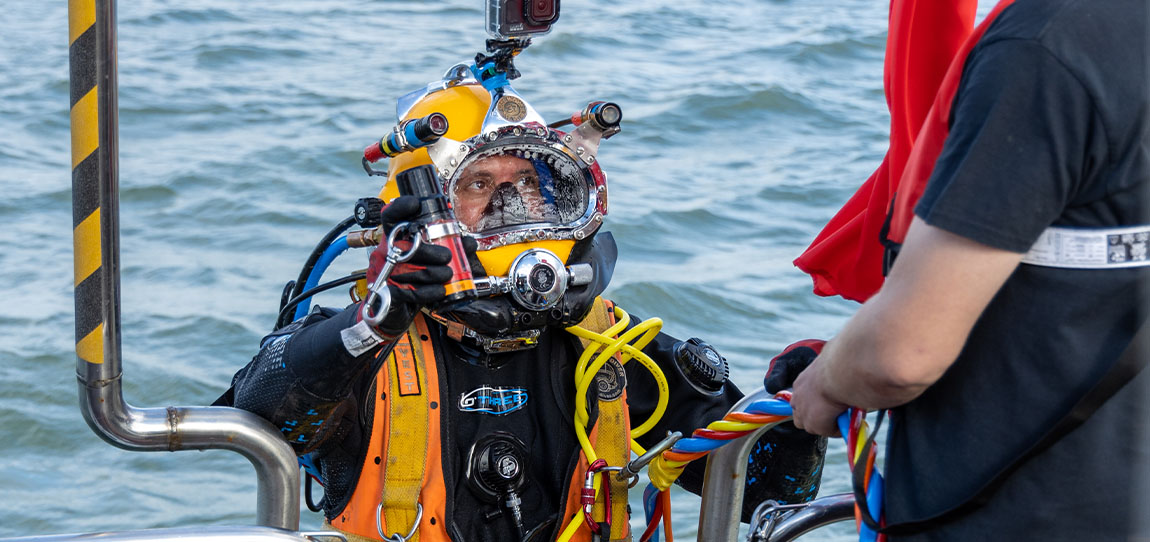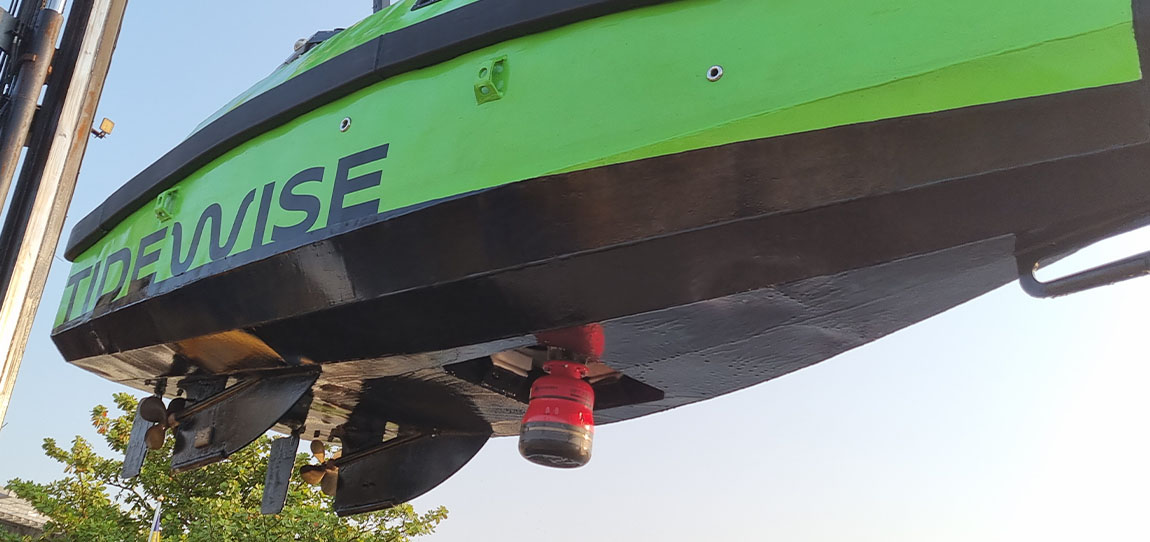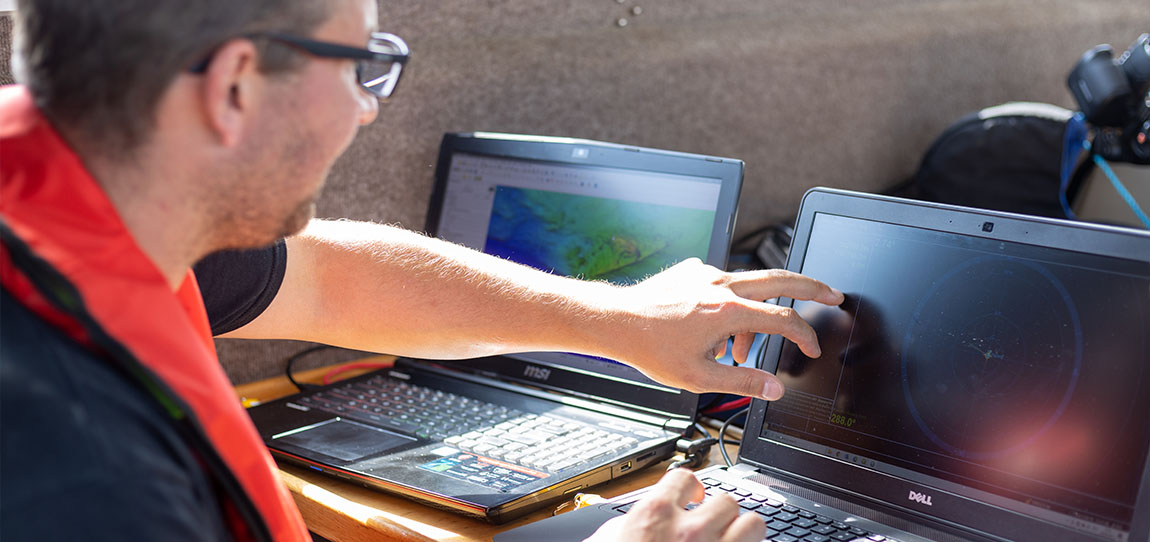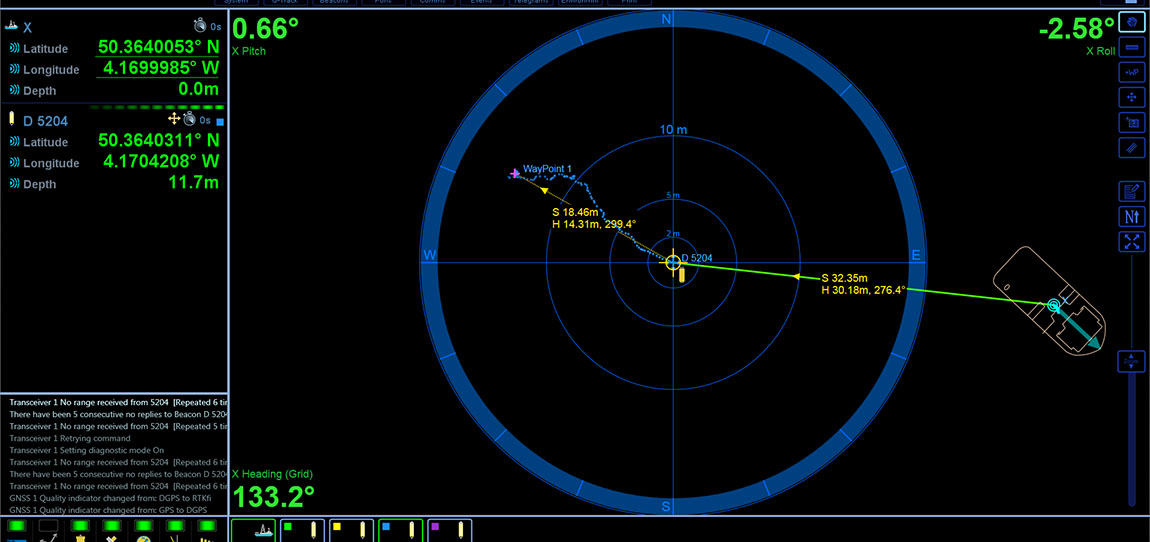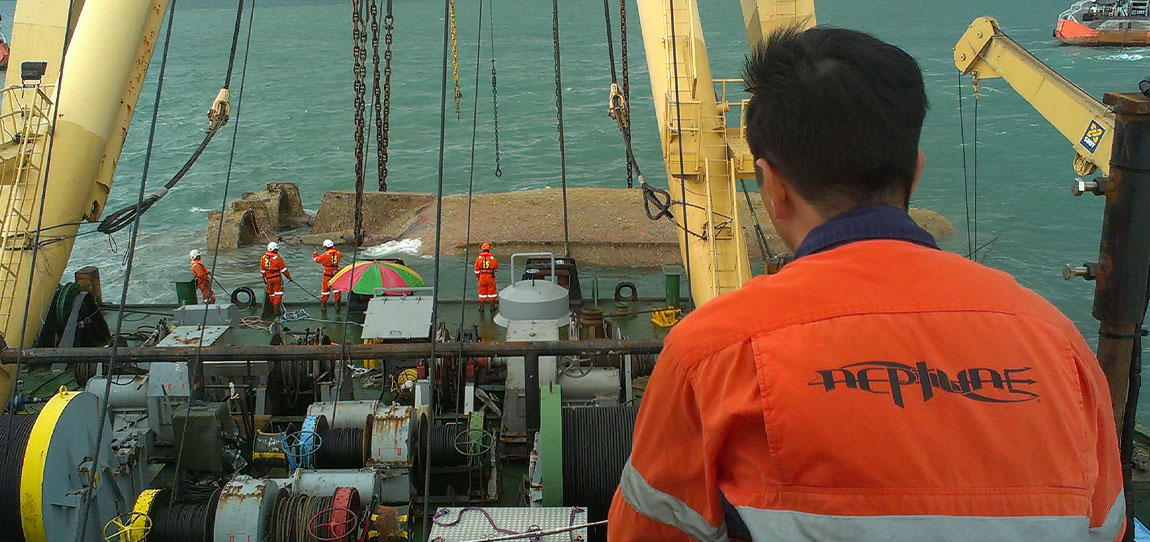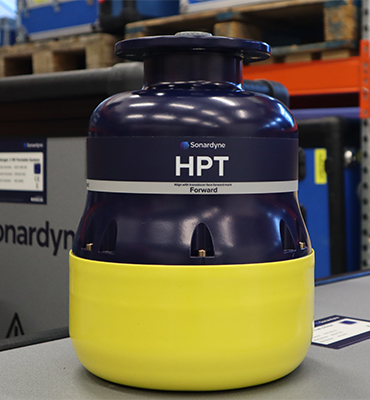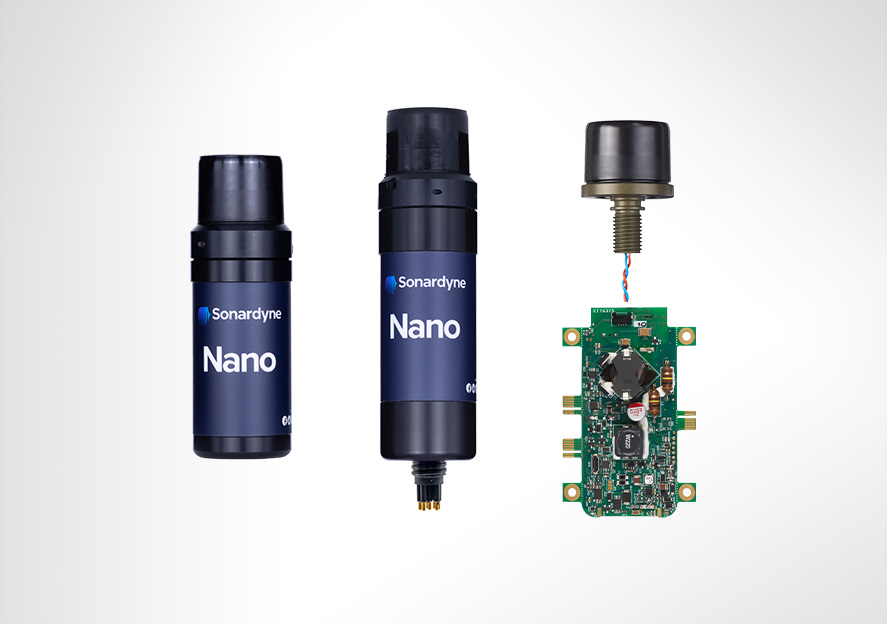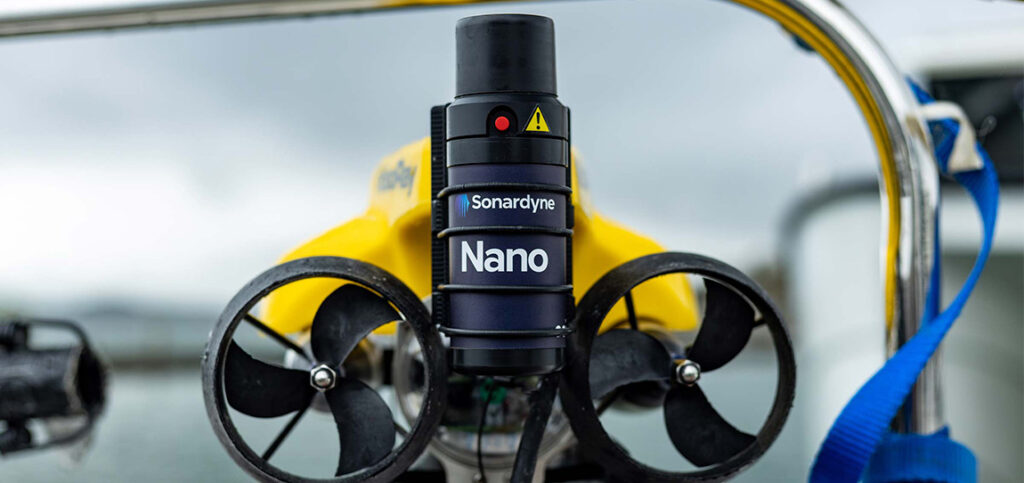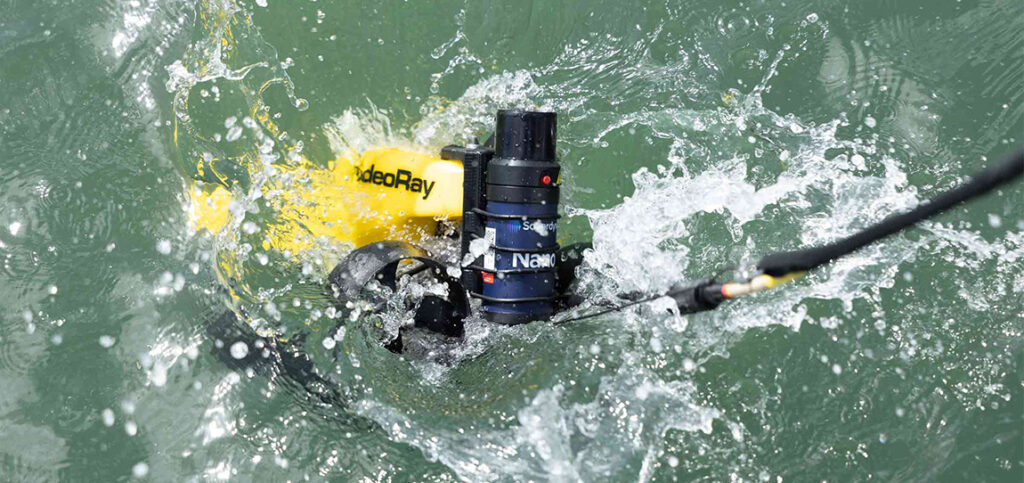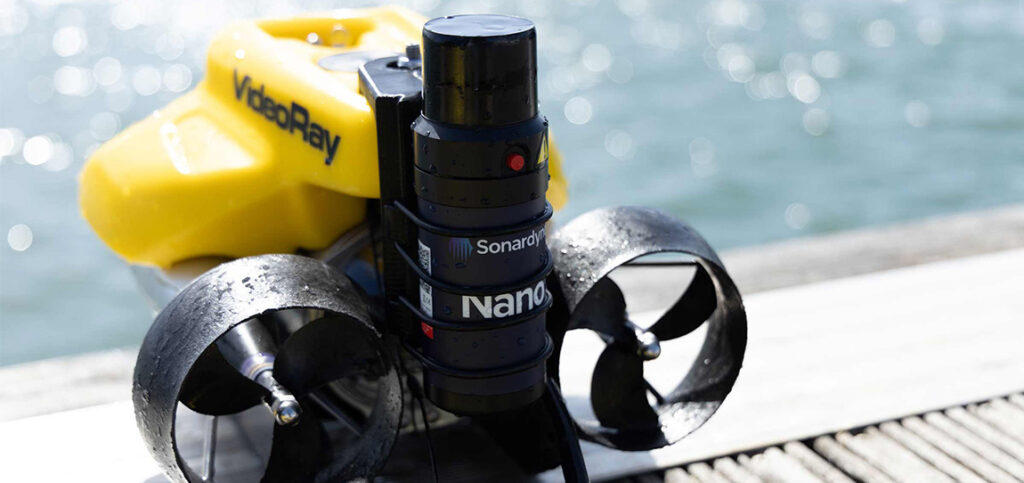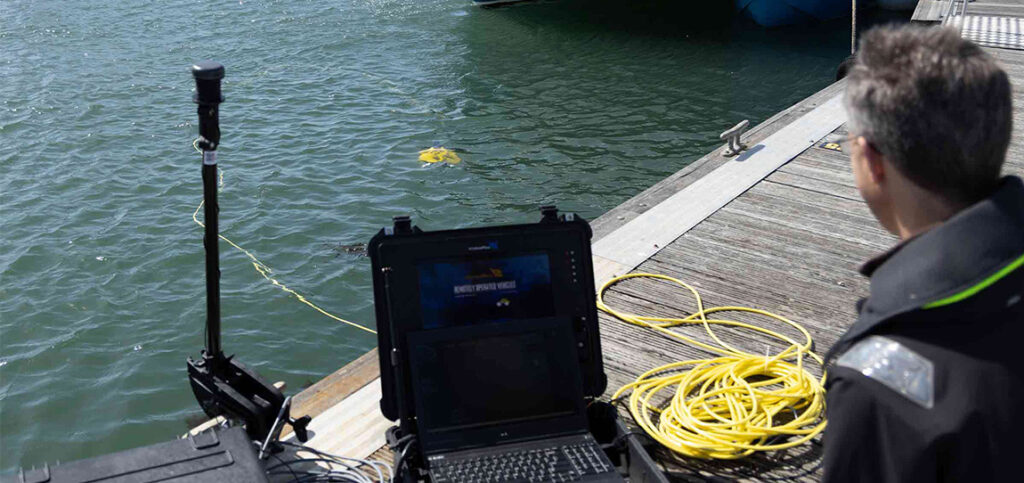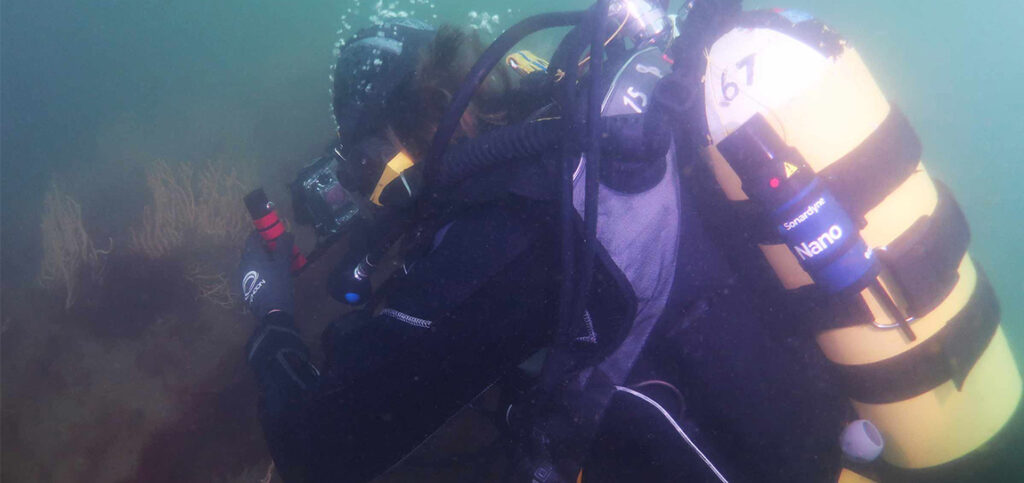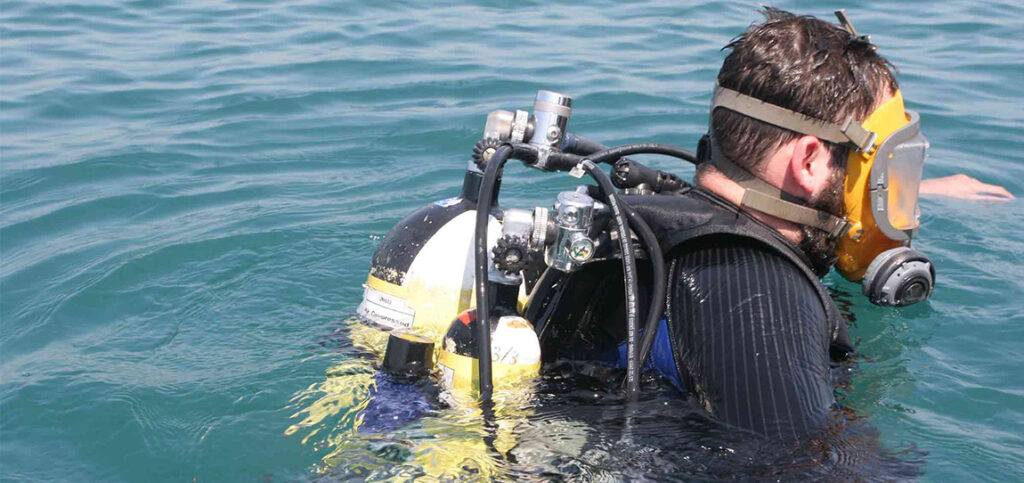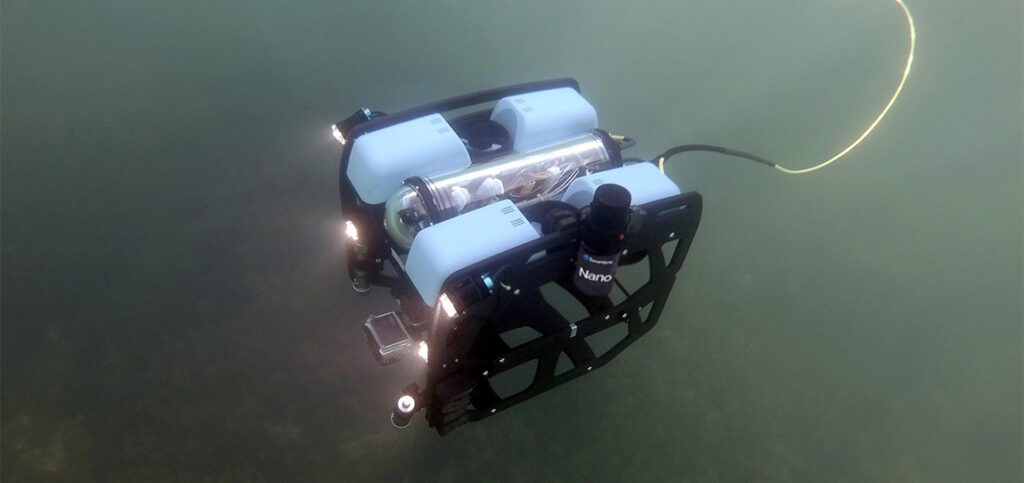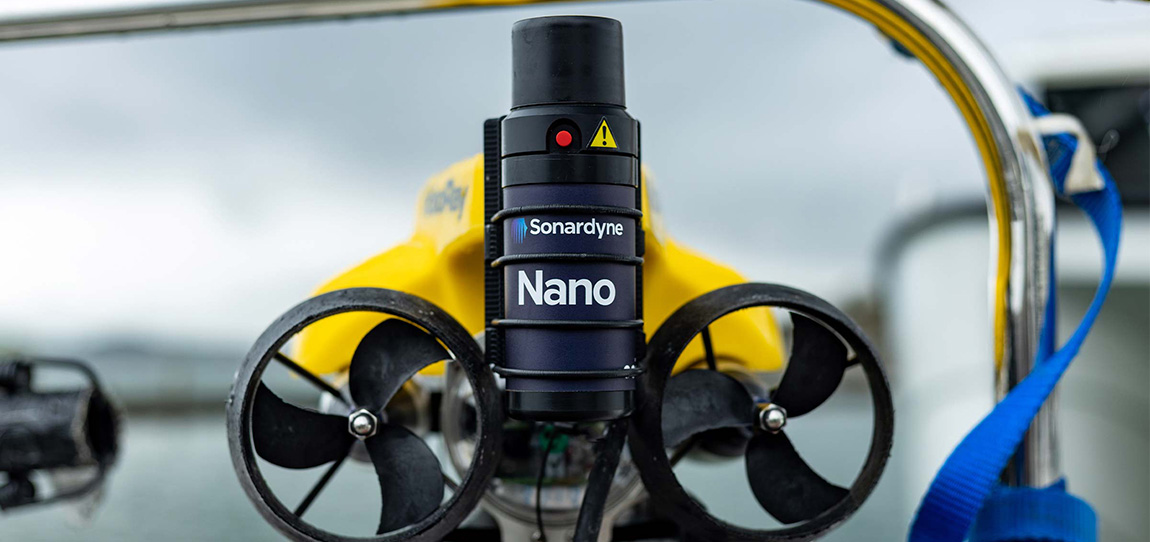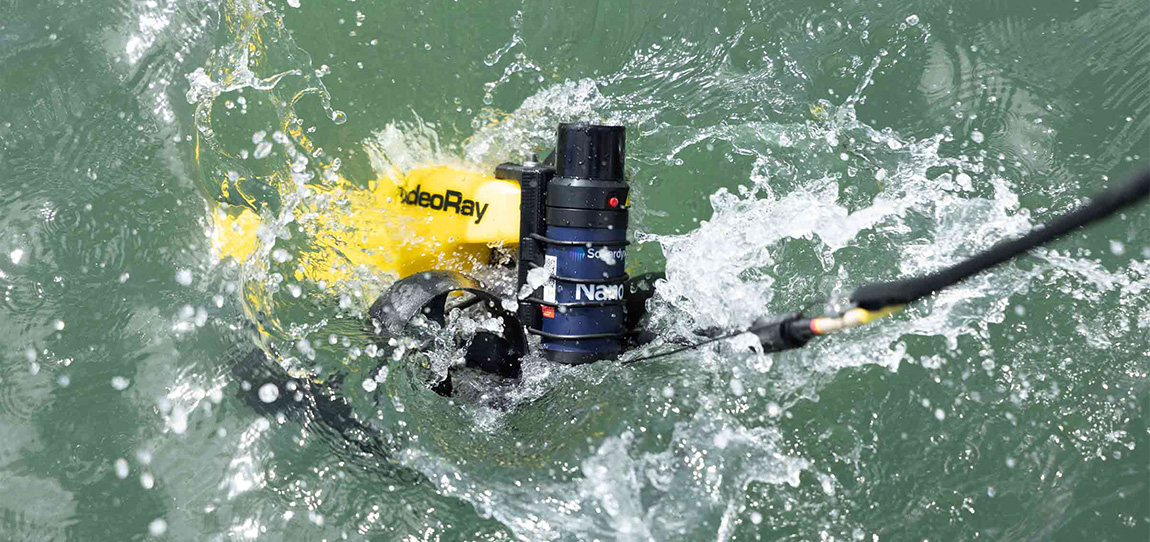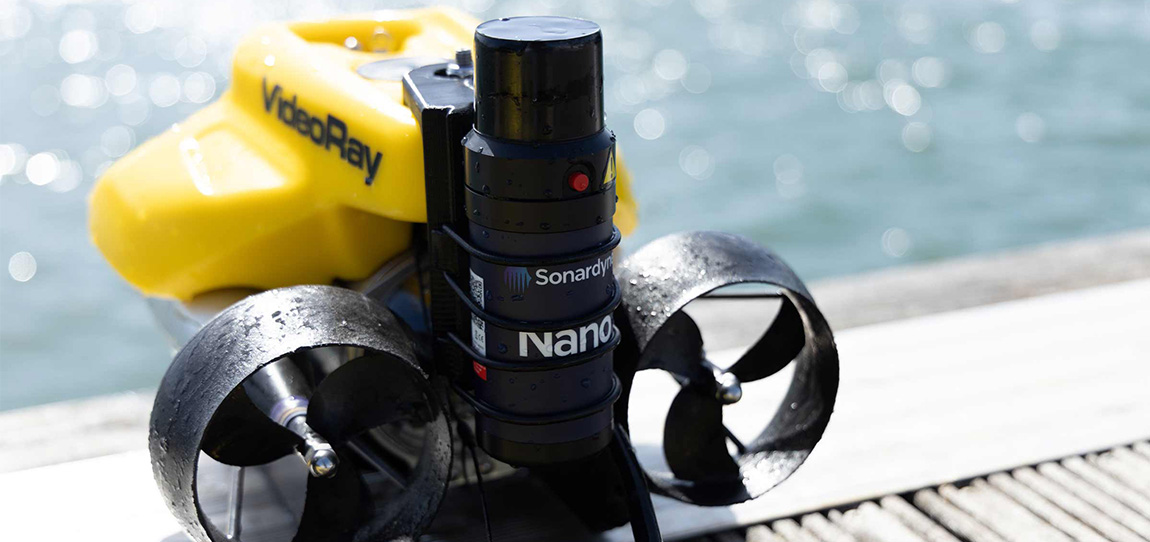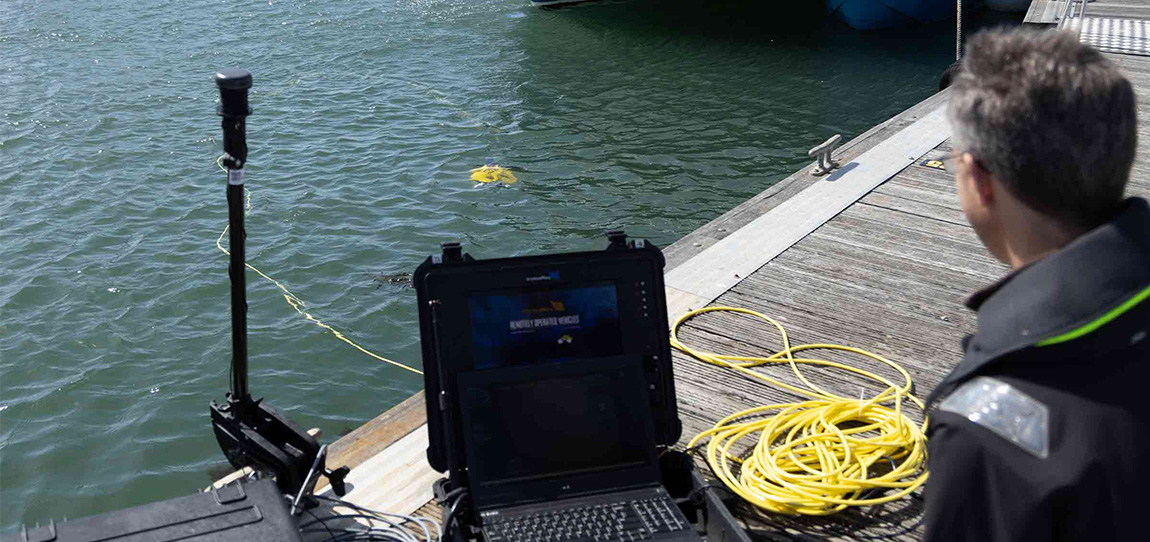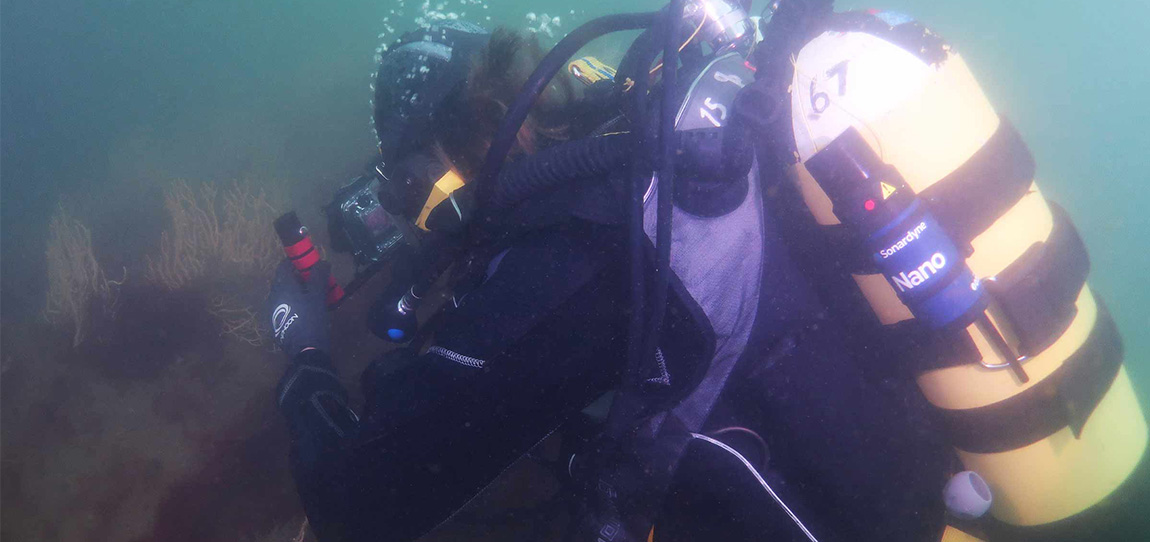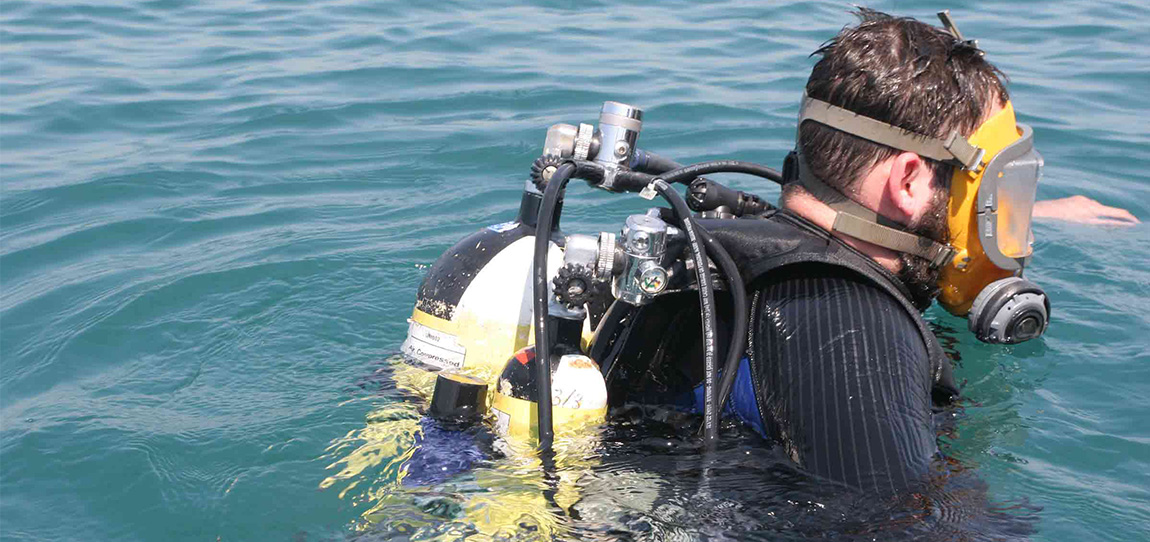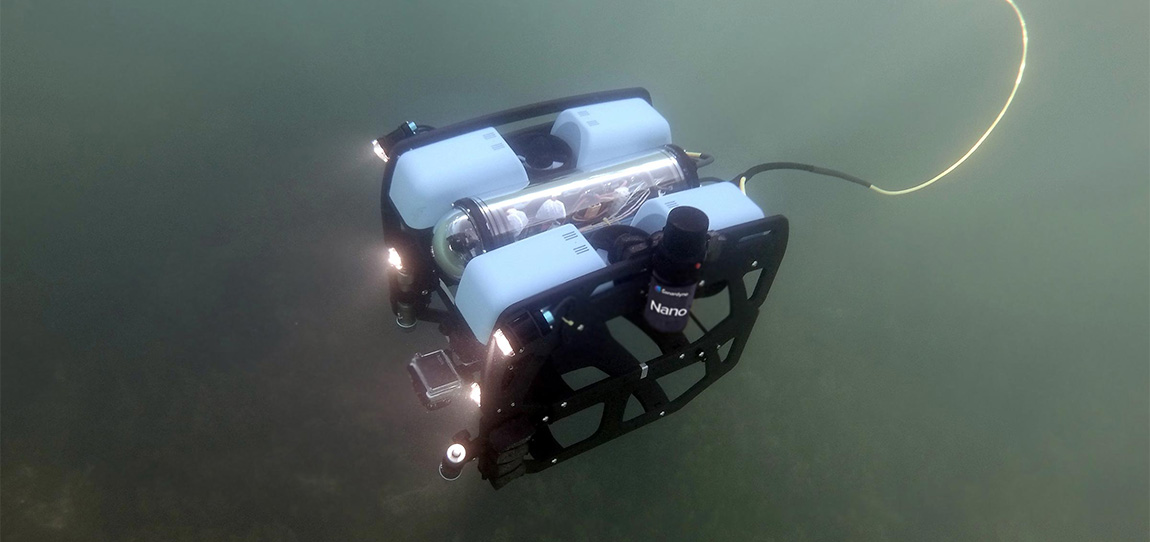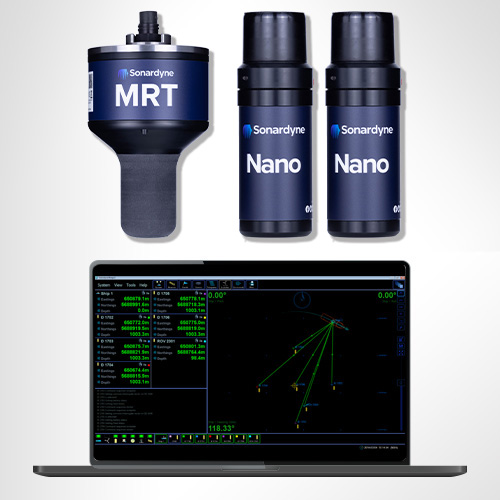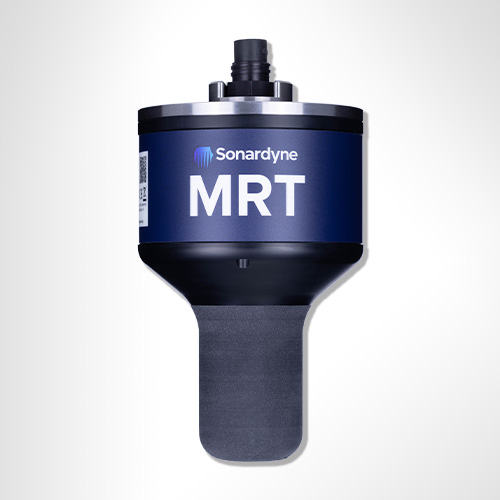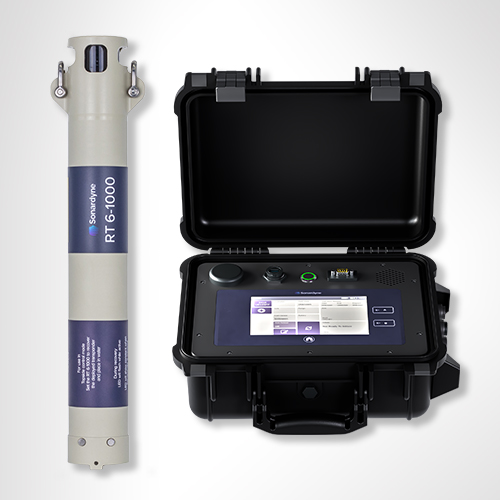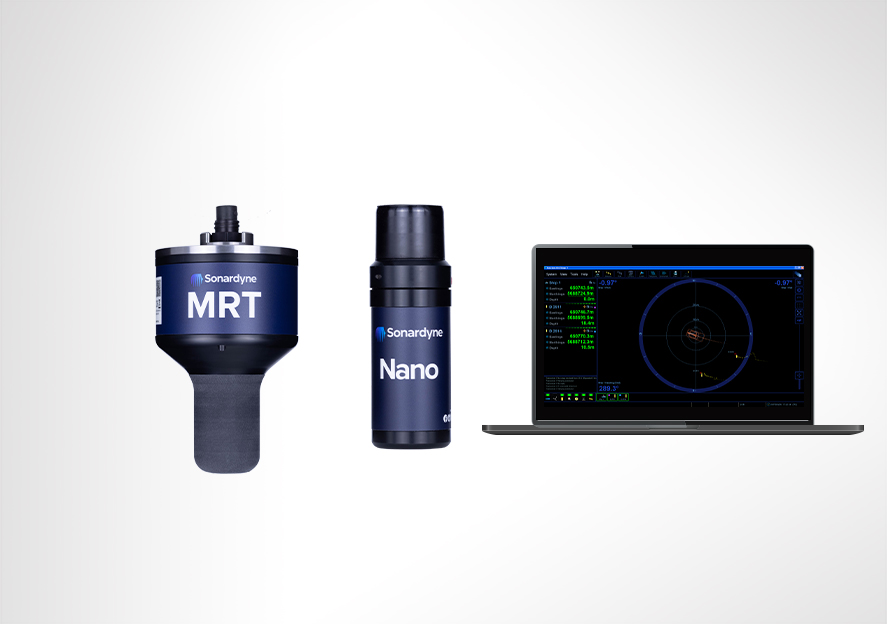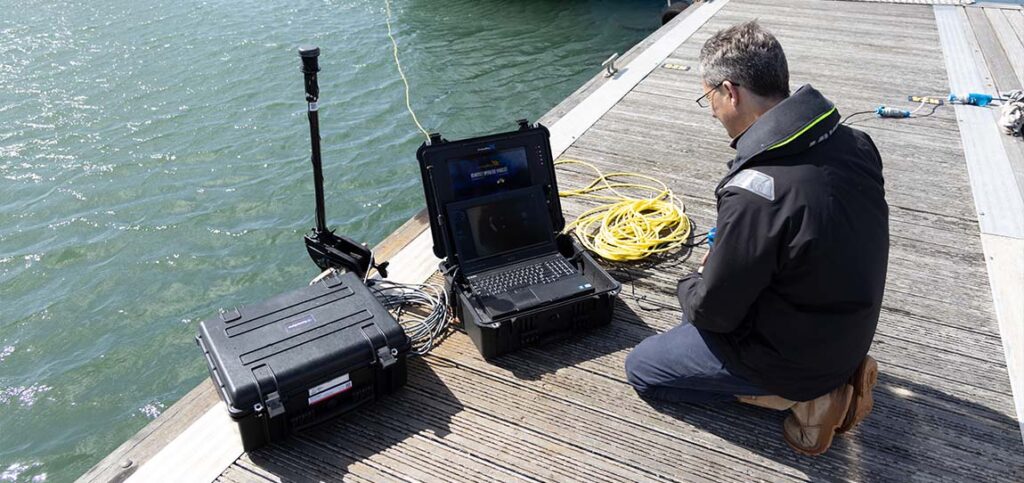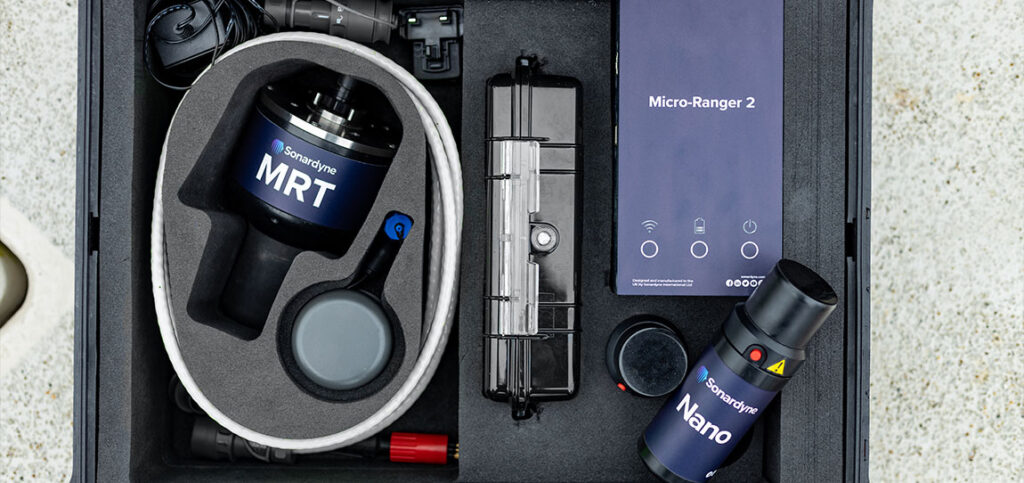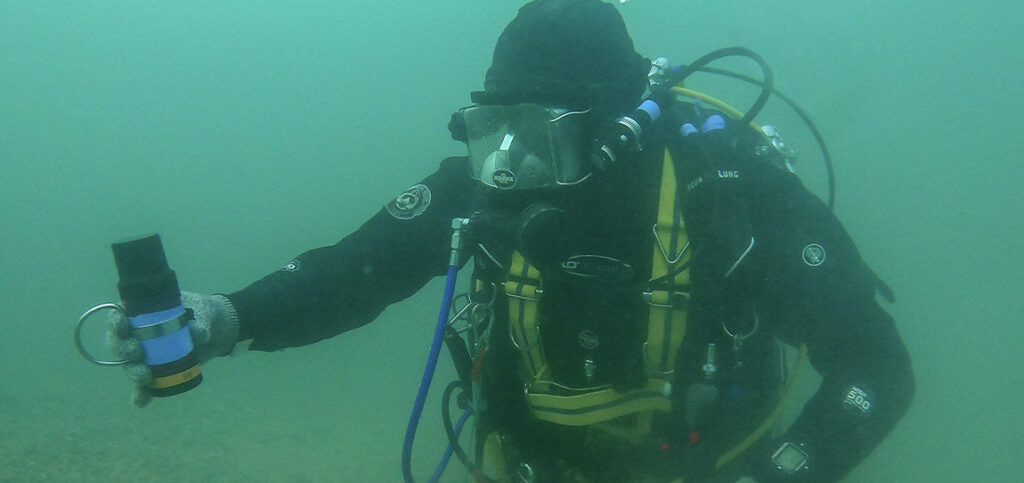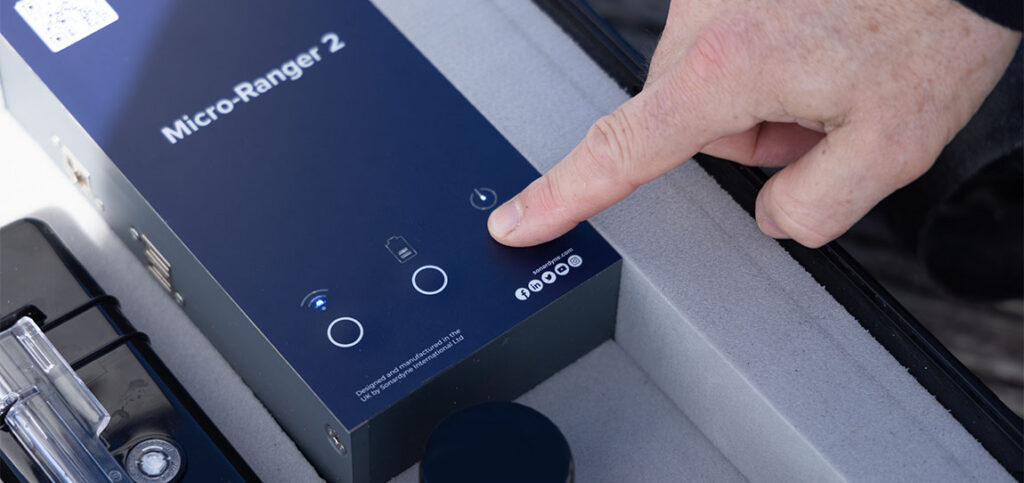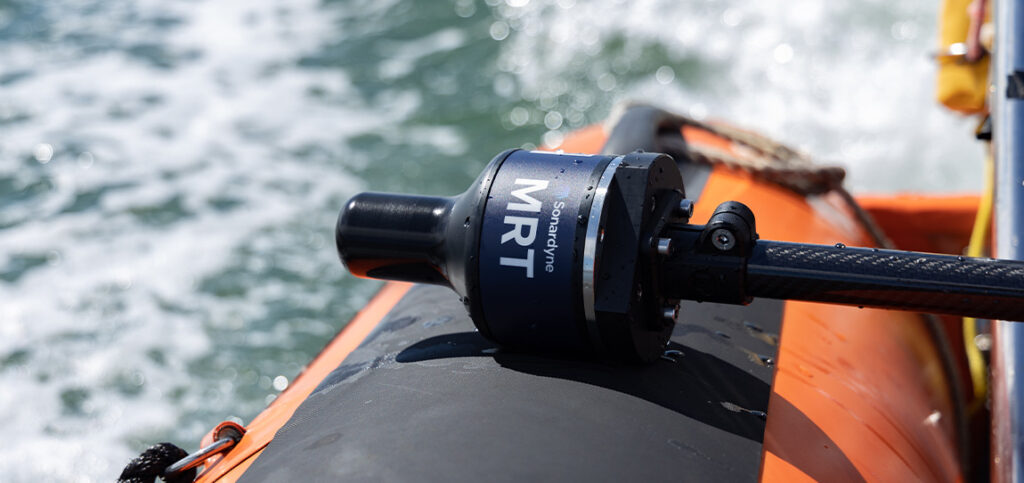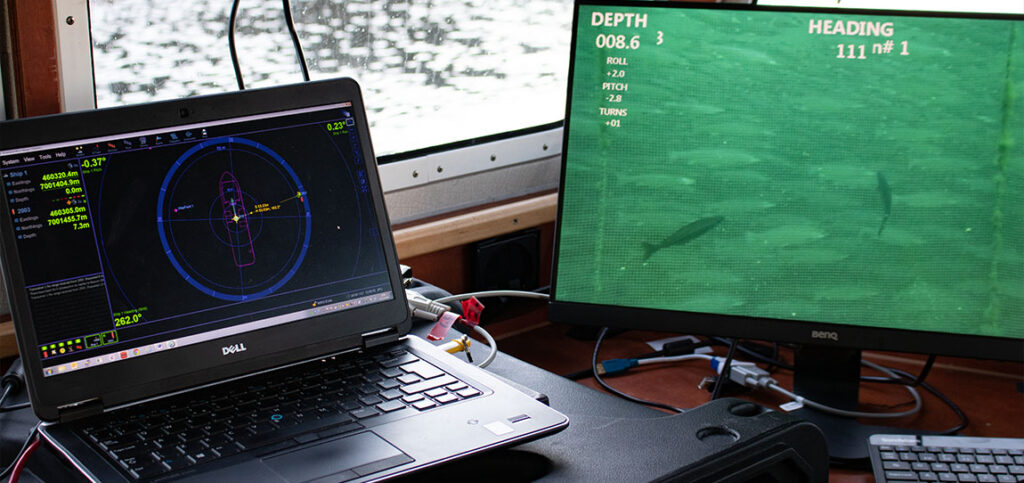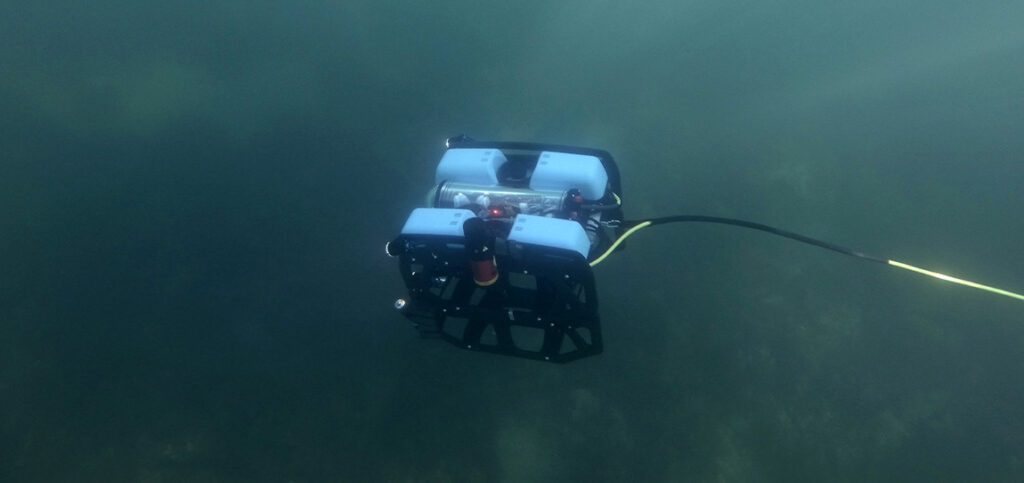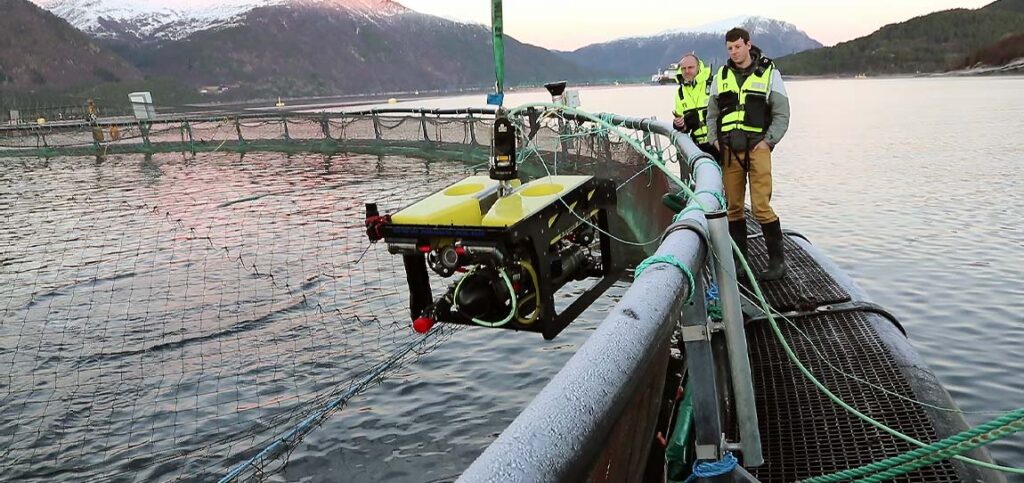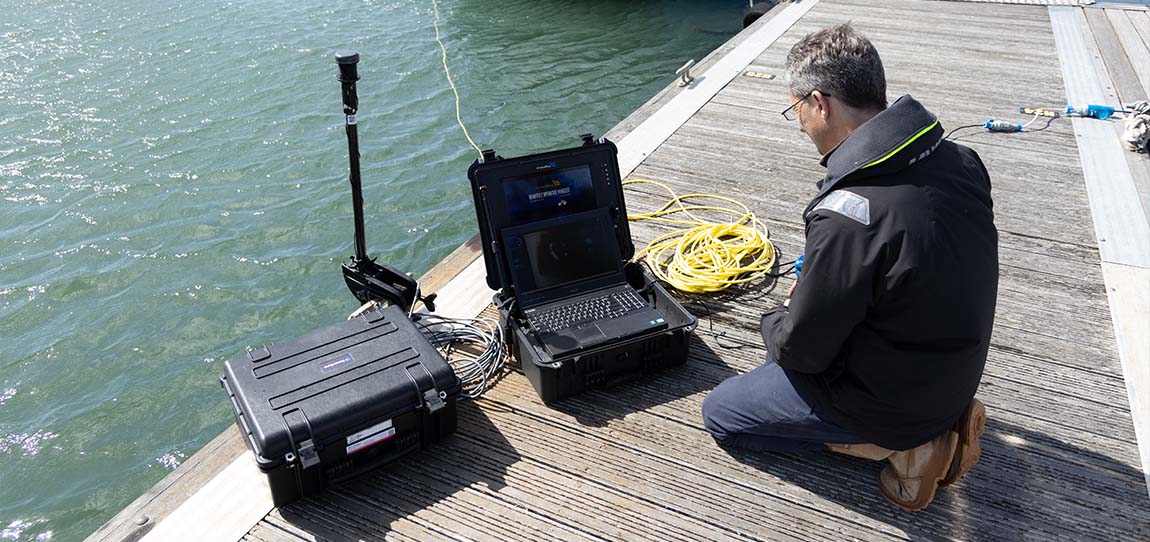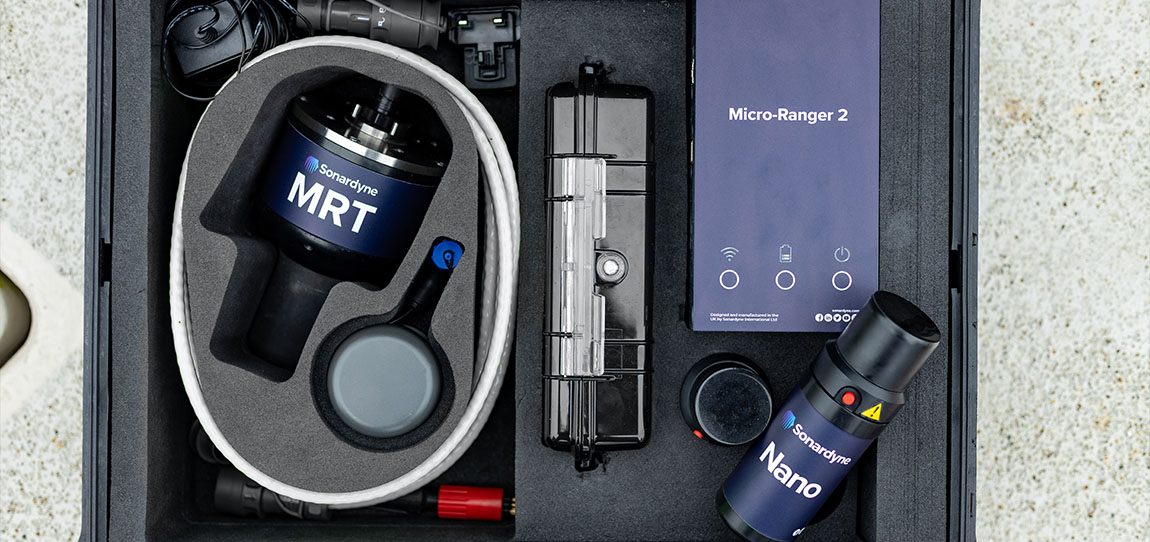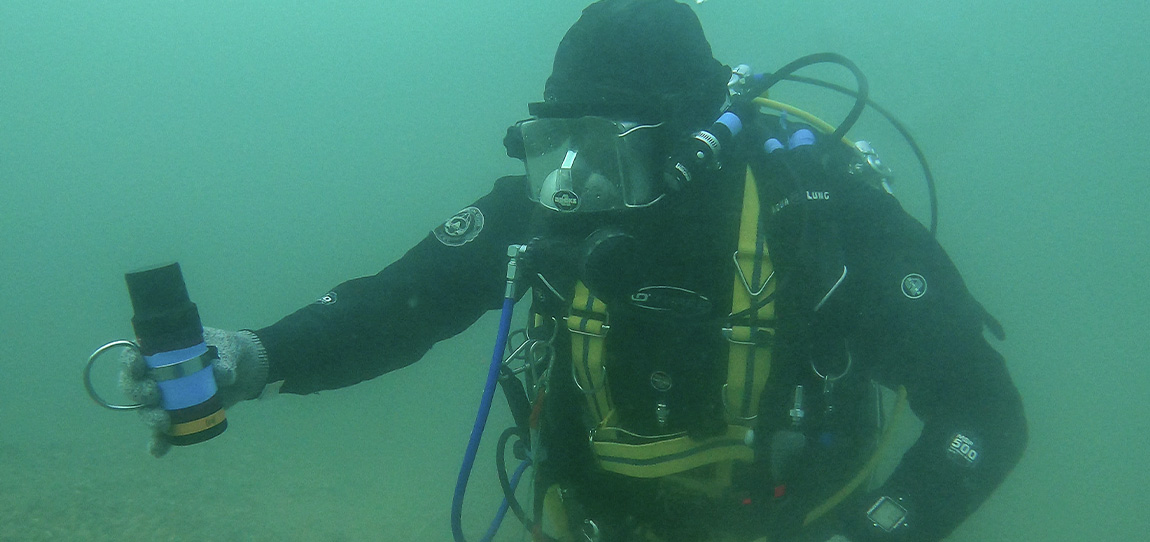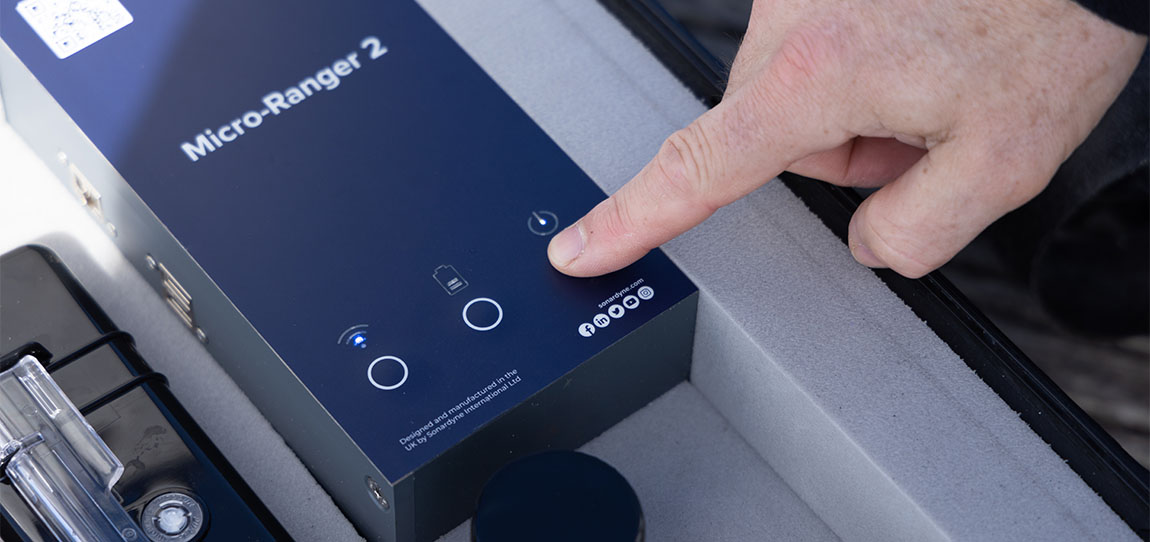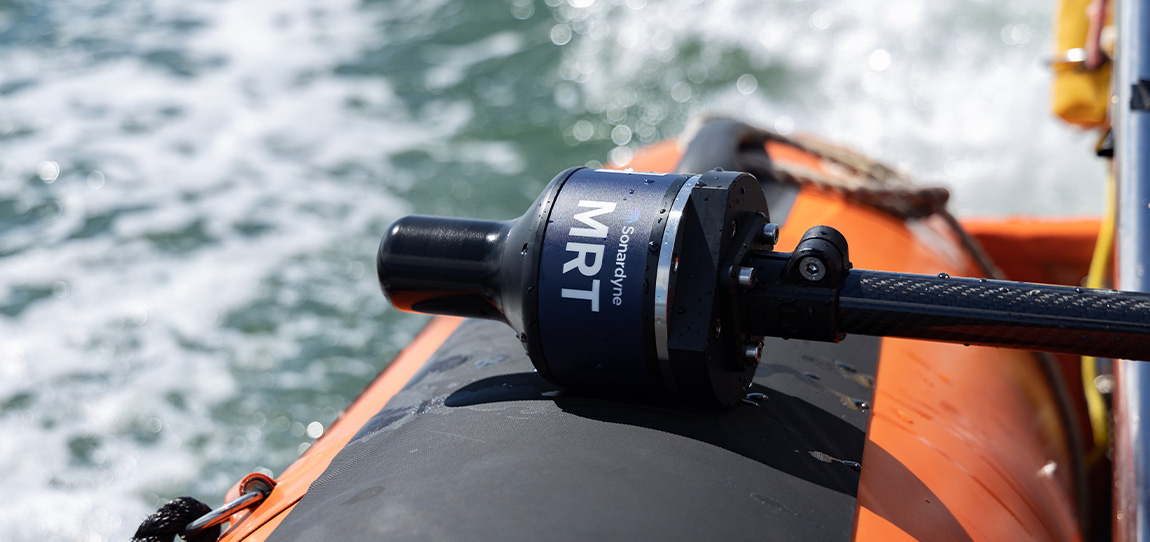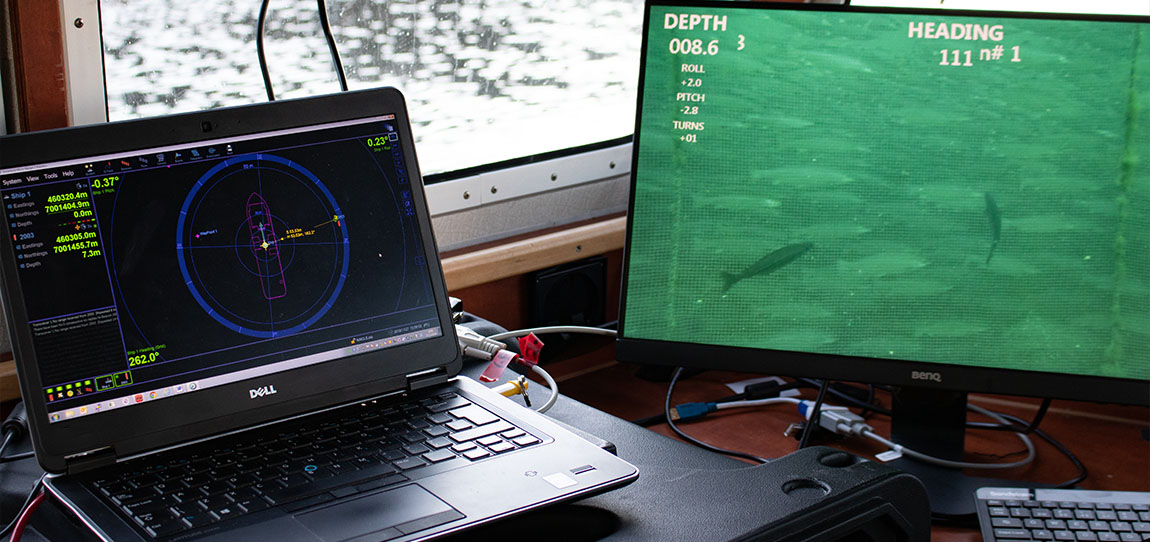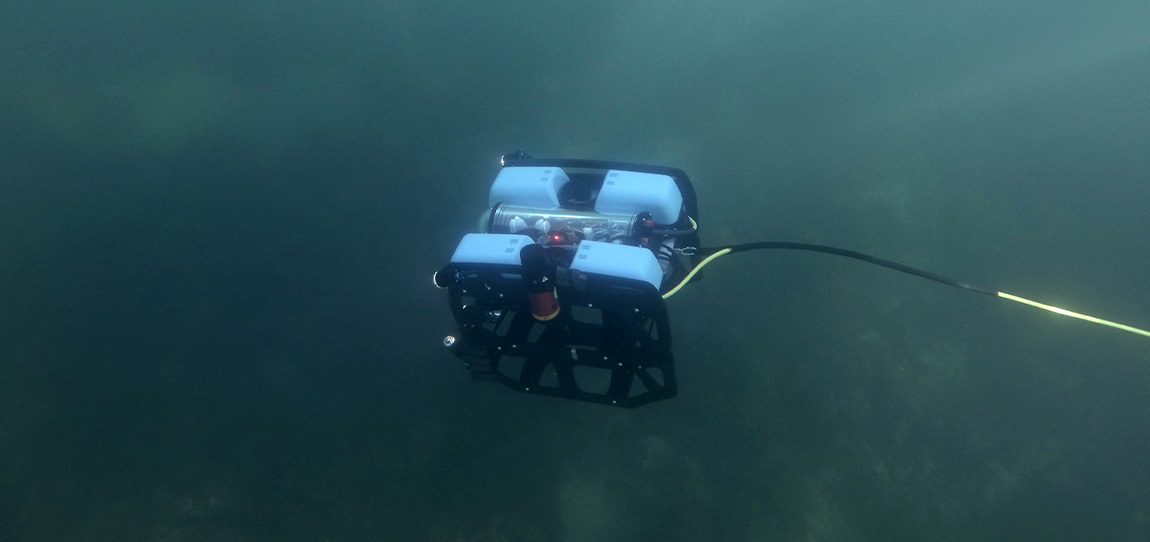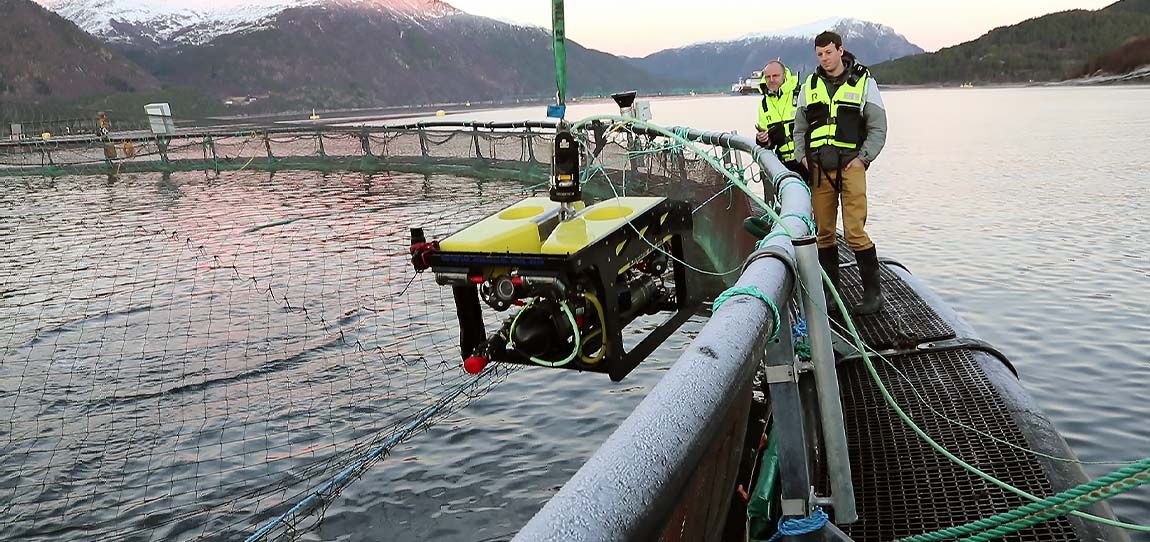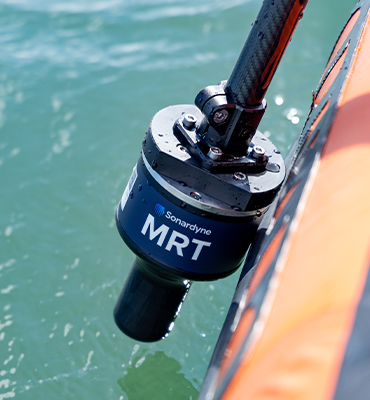Overview
Gyro iUSBL combines our generation high performance HPT Inverted USBL transceiver and a Lodestar Attitude and Heading Reference System (AHRS)/Inertial Navigation System (INS) in the same titanium pressure rated mechanical assembly capable of operating at depths of 7000 m.
With the AHRS/INS in fixed mechanical alignment to the iUSBL’s pressure balanced acoustic array, the Gyro iUSBL can be quickly deployed without need for a calibration to determine the alignment of the ship’s motion sensors to the acoustic transceiver. For many applications, this can enable significant time savings and operational costs.
At a glance
- Designed to work with Ranger 2 USBL
- Tracks your deep tow vehicle beyond 10,000 m
- Integrated USBL transceiver and SPRINT INS
- Depth rated to 7,000 m
- Offers 10x improvement in positioning precision
Specifications table
| Features | Type 8084-000-7535 | |
|---|---|---|
| Operational Frequency | MF (20–34 kHz) | |
| Transceiver Performance |
Operating Range | Up to 7,000 m |
| Pressure Rating | Up to 7,000 m | |
| Acoustic Coverage | Up to ± 90° | |
| Range Accuracy Positioning Repeatability | Better than 15 mm All transceivers tested to Better Than 0.1% of Slant Range 1 drms |
|
| Transmit Source Level (dB re 1 µPa @ 1 m) | 200 dB | |
| Tone Equivalent Energy (TEE) | 206 dB | |
| Heading | Range | 0–360° |
| Accuracy | 0.05 to 0.1° secant latitude | |
| Settle Time | <5 minutes | |
| Follow Up Speed | 500° / second | |
| Resolution | 0.01° | |
| Pitch & Roll | Range | ±180º (No physical limit) |
| Accuracy | 0.01° | |
| Resolution | 0.01° | |
| Heave | Range | ±99 m |
| Accuracy (Real Time) | 5 cm or 5% (whichever the greater) | |
| Resolution | 0.01 m | |
| Electrical | +48 V dc maximum 160 W | |
| Communication | RS485, baud rate switchable, ethernet 100 Mbps | |
| Operating Temperature | -5 to 40°C | |
| Storage Temperature | -20 to 55°C | |
| Dimensions (Length x Diameter) | 475.5 mm x 240 mm (without end connector) | |
| Weight in Air/Water | 45/24 kg |
Frequently asked questions
Software and firmware
Datasheets
Manuals and quick start guides
Did you know?
Gyro iUSBL is depth rated up to 7,000 m
Overview
The instrument is a turn-key solution comprised of carefully selected high grade and highly reliable inertial sensors integrated into in-house designed inertial measurement unit (IMU).
The selected inertial sensors are the standard for commercial aviation with a proven 20+ year track record. These sensors have a highly desirable characteristic being insensitive to vibration, temperature changes and having very limited initial errors. The result is a system which is highly suitable for the marine environment where performance, robustness and data integrity need to be available from initialisation, even during the harshest conditions.
Lodestar requires no external aiding and settles robustly in dynamic conditions in less than five minutes. On-board data storage and backup battery functionality ensures continued operation and eliminates the risk of data loss even if communications or external power are lost. Power-pass through to external aiding sensors is supported to ease integration requiring only a single cable for comms and power.
If a full INS solution is required, Lodestar can easily be field upgraded to a SPRINT system (apart from Lodestar 200). This makes the Lodestar a flexible and future-proof solution for both ROV guidance and survey applications.
Lodestar has a proven track record spanning more than 10 years in the field in diverse applications from ROV guidance and autopilot to demanding survey applications. The instrument is available in 4,000 and 6,000 metre depth ratings with a variety of connector options and configurations.
At a glance
- Designed to aid subsea vehicle guidance: AUVs, ROVs and UUVs
- Uses high quality Honeywell gyro and accelerometers
- Sensors available in three performance levels: 200, 300 and 500
- Fast settling time so you can get straight to work
- Integrated DVL option available; Lodestar-Nav
- Factory upgradeable to SPRINT INS
Lodestar-Nav 200
Lodestar-Nav 200 provides all-in-one navigation solution for subsea vehicles by combining a Lodestar 200 AHRS with our Syrinx Doppler Velocity Log (DVL) and a high accuracy pressure sensor in a single housing. This saves cost, payload space and the complexity of integrating and operating separate sensors from different vendors.
Lodestar-Nav is pre-calibrated providing the ROV pilots with a robust and reliable solution, even in the most challenging operational scenarios, without needing to worry about sensor offsets.
Syrinx DVL inside that provides a large altitude range and high precision at all altitudes; this combines the best of 300 and 1200 kHz DVLs. Each DVL transducer is fitted with a full depth rated water block to ensure protection of the internal components and easy replacement if damaged.
Lodestar-Nav can be interfaced via a single connection and/or the DVL can be interfaced separately depending on requirements. Continuous on-board data storage supports post-mission diagnostics and post-processing.
Size
Measuring just 260 mm tall, the 4,000 m rated titanium housing allows easy fitment to any subsea vehicle. 6,000 m housing option.
Long life sensors
Lodestars and SPRINTs use Honeywell-supplied RLGs and inertial sensors with 400,000 MTFB, which have been proven in over 20 years in commercial aircraft.
Connectivity
Most Lodestars can be upgraded to SPRINT in the field as your requirements grow so there’s no need to remove and re-install a different instrument.
Specifications
| Feature | Lodestar 300 | Lodestar 500 | |
|---|---|---|---|
| Depth rating | 4,000 / 6,000 m | 4,000 / 6,000 m | |
| Heading | 0.2° | 0.1° | |
| AHRS settle time | <5 minutes in dynamic conditions | <5 minutes in dynamic conditions | |
| Roll and pitch | 0.01° | 0.01° | |
| Power requirement | 20–50 V dc, 15 W nominal, 35 W maximum | 20–50 V dc, 15 W nominal, 35 W maximum | |
| Power pass through | 3 x for external aiding sensors (up to 3A per sensor) | 3 x for external aiding sensors (up to 3A per sensor) | |
| Back up battery type/life | Li-ion/5 minutes | Li-ion/5 minutes | |
| Data storage | 8 GB internal memory | 8 GB internal memory | |
| Serial ports/protocol | 4x RS232 or RS485 | 4x RS232 or RS485 | |
| Other ports | 1x Ethernet, 4 triggers | 1x Ethernet, 4 triggers | |
| Output rate | Up to 100 Hz | Up to 100 Hz | |
| Output telegrams | Industry standard AHRS/INS telegrams including acceleration and rotation rates | Industry standard AHRS/INS telegrams including acceleration and rotation rates | |
| Connectors | 4x Seacon / Seanet, 1x Seacon / Seanet | 4x Seacon / Seanet, 1x Seacon / Seanet | |
| Mechanical construction | Titanium | Titanium | |
| Dimensions (diameter x height) |
4,000 m (Seacon) | 205 x 260 mm | 205 x 260 mm |
| 6,000 m (Seacon) | 205 x 280 mm | 205 x 280 mm | |
| 4,000 m (Seanet) | 205 x 250 mm | 205 x 250 mm | |
| Weight in air/water | 4,000 m | 18.5/11.5 kg | 18.5/11.5 kg |
| 6,000 m | 22/14 kg | 22/14 kg | |
| Operating temperature | -20 to +55°C | -20 to +55°C | |
| Storage temperature | -20 to +60°C | -20 to +60°C | |
| Shock rating | 22 g, 11 ms half sine | 22 g, 11 ms half sine |
Frequently asked questions
SPRINT, SPRINT-Nav, Lodestar and Lodestar-Nav troubleshooting
How to connect to the Lodestar within a Gyro USBL via an NSH
How to enter Transceiver & Lodestar Offsets for Optimised USBL
What cables do I need for my Lodestar?
How do I mate and calibrate a DVL to my Lodestar?
Can I power my subsea instruments with Lodestar or SPRINT?
How do I mate and calibrate a SPRINT or Lodestar to my Syrinx DVL?
What’s the difference between FOG and RLG?
STP files
Software and firmware
Software and control hardware
Manuals and quick start guides
Technical bulletin
Did you know?
Lodestar is highly optimised for cost, size, weight and power (C-SWaP)
Overview
WMT is a 6G compatible, high acoustic output power USBL transponder available in two depth versions: 3,000 m and 7,000 m. The 7,000 m version has a higher acoustic output power level for improved long-range operation.
For ROV and towfish tracking, WMT supports responder trigger for faster position updates, an integrated rechargeable Li-Ion battery pack that is charged from the ROV’s power supply and full RS232 communications enabling channel set up, power and gain etc. to be changed from the surface.
At a glance
- Use it with Ranger 2 for deep water, long layback tracking tasks
- High power acoustic output and directional transducer
- Responder mode for fast position updates
- Full two-way Sonardyne Wideband 2 interrogation and reply
- Li-Ion rechargeable battery pack
- Optional remote transducer
An on/off switch (3,000 m only) helps to ensure the battery pack is not discharged when not in use. If an umbilical trigger is not available, then the full Wideband transponder mode provides excellent USBL performance in a small, lightweight package.
Remote omni or directional transducers are available for WMT. These make installation on a ROV easier as the remote transducer can be installed where there is good line-of-sight and is easily replaced if damaged. The main body of the transponder can then be installed within the ROV frame where it is well protected from damage.
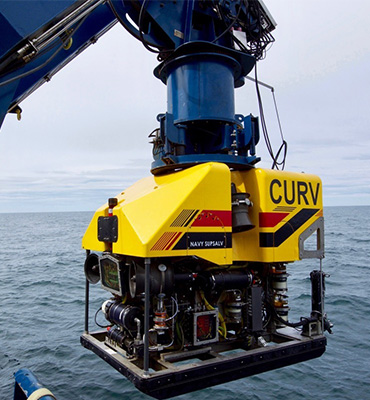
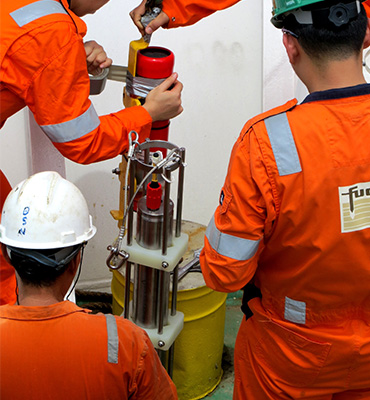
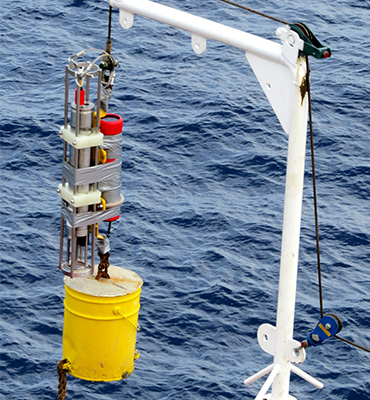
Specifications table
| Feature | Type 8190-3111 | Type 8190-3112 | Type 8190-7212 | |
|---|---|---|---|---|
| Depth Rating | 3,000 m | 3,000 m | 7,000 m | |
| Operating Frequency | MF (20–34 kHz) | MF (20–34 kHz) | MF (20–34 kHz) | |
| Transducer Beam Shape | Omni-directional | Directional | Directional | |
| Source Level (re 1 µPa @ 1 m) |
High Power | 187 dB | 193 dB | 199 dB |
| Low Power | 181 dB | 187 dB | 193 dB | |
| Tone Equivalent Energy (TEE) WBv2+ |
High Power | 193 dB | 199 dB | 205 dB |
| Low Power | 187 dB | 193 dB | 199 dB | |
| Range Precision | Better than 15 mm | Better than 15 mm | Better than 15 mm | |
| Depth Sensor | ± 0.5% full scale | ± 0.5% full scale | ± 0.5% full scale | |
| Communications Interface | RS232 (9,600–115,200 baud) | RS232 (9,600–115,200 baud) | RS232 (9,600–115,200 baud) | |
| External Supply Voltage | 24 or 48 V dc (± 10%) | 24 or 48 V dc (± 10%) | 24 or 48 V dc (± 10%) | |
| External Power | Sleep | ~650 mW | ~650 mW | ~650 mW |
| Wideband Listening | ~1 W | ~1 W | ~1 W | |
| Battery Charging | 6 W | 6 W | 6 W | |
| Peak (During Transmission) |
<50 W | <50 W | <50 W | |
| External Power Switch | Yes | Yes | No | |
| Battery Life (Li-ion 15 V) |
Listening | 30 days | 30 days | 30 days |
| Continuous 5 Seconds Interrogation |
Approx. 6 days at low power | Approx. 6 days at low power | Approx. 6 days at low power | |
| Mechanical Construction | Anodised aluminium alloy and plastics | Anodised aluminium alloy and plastics | Anodised aluminium alloy and plastics | |
| Operating Temperature | -5 to 40°C | -5 to 40°C | -5 to 40°C | |
| Storage Temperature | -20 to 55°C | -20 to 55°C | -20 to 55°C | |
| Dimensions (Diameter x Length) | 94 x 501 mm | 94 x 513 mm | 98 x 513 mm | |
| Weights in Air/Water | 5.1/2.2 kg | 7.0/3.5 kg | 7.0/3.5 kg | |
| Options | Remote, Cable Connected Transducer (see separate datasheet) |
Remote, Cable Connected Transducer (see separate datasheet) |
None |
Frequently asked questions
Software and firmware
Software and control hardware
Datasheets
Manuals and quick start guides
Technical bulletin
Did you know?
WMT is used with Ranger 2 USBL for tracking and communications
Overview
WSM 6+ is one our most popular USBL transponders, selected by customers for its small size, value and dependable performance in all environments, shallow or deep.
It’s the perfect choice for fitting to observation and work-class ROVs, towfish, submersibles and equipment being deployed onto the seabed for short durations.
WSM 6+ is compatible with all of our Ranger 2 USBL systems and we even include one with every Ranger 2 Standard – as standard.
The compact and rugged design is based on the field proven mechanics from previous generation designs and is available with omni-directional or directional transducers. The omni version is depth rated to 1,000 m and the directional is depth rated to 4,000 m.
At a glance
- Rechargeable USBL transponder designed for tracking ROVs, towfish and equipment
- Choice of 1,000 m (omni-directional) and 4,000 m (directional) depth ratings
- Compatible with our family of Ranger 2 USBL systems: Micro, Mini and Standard
- Transponder or responder operating modes
- Depth sensor for improved USBL positioning performance
- External on/off switch for battery saving
Both versions support transponder and responder operating mode if an external trigger from your platform is available. Responder mode provides significantly faster position updates than transponder mode.
WSM 6+ supports Wideband 2 acoustic signals and legacy Wideband 1 and HPR 400. The configuration is programmable using supplied software and a serial link or it can be configured acoustically via our back deck handheld test unit – iWand. This allows the WSM 6+ to be configured for use with all of the popular MF frequency acoustic navigation systems.
Both types of WSM 6+ are also fitted with a depth sensor fitted as standard to aid USBL positioning accuracy and an external on/off switch to save battery power when not in use.
WSM 6+ variants are available with acoustically controlled output lines suitable for external motor drive, burnwire or contact closure releases.
Watch our youtube video to learn more
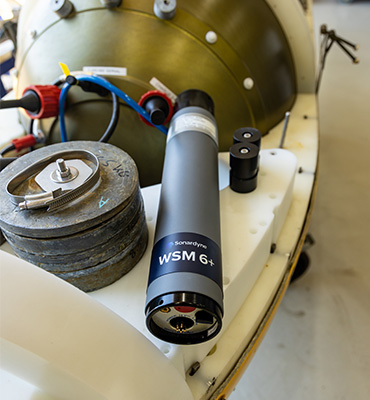
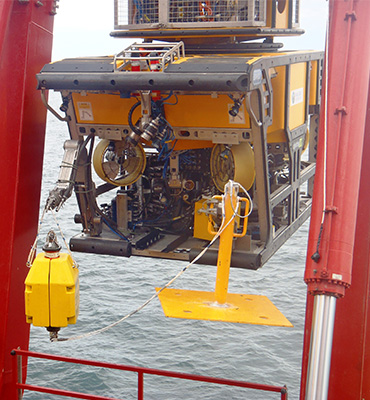
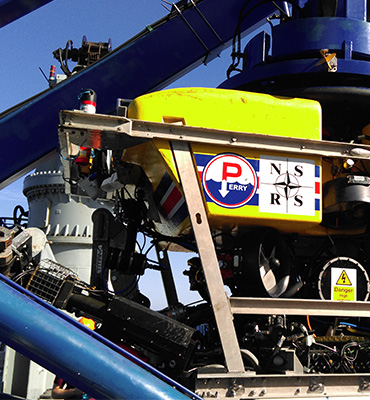
Specifications table
| Feature | Type 8370-1111 | Type 8370-4112 |
|---|---|---|
| Depth rating | 1,000 m | 4,000 m |
| Operational frequency | MF (20–34 kHz) | MF (20–34 kHz) |
| Transceiver beam shape | Omni-Directional | Directional |
| Transmit source level (dB re. 1 µPa @ 1 m) (external power/battery) | 187 dB/ 184 dB |
196 dB/ 193 dB |
| Tone Equivalent Energy (TEE) (external power) | 193 dB | 202 dB |
| Receive Sensitivity (dB re 1 μPa) | <85 dB | <80 dB |
| Power supply | Rechargeable NiMH battery or ext. 24 V via ROV umbilical | Rechargeable NiMH battery or ext. 24 V via ROV umbilical |
| Operating channels | All Sonardyne Wideband HPR 400 Channels | All Sonardyne Wideband HPR 400 Channels |
| Depth sensor | ±0.5% Full Scale (100 Bar) | ±0.5% Full Scale (400 Bar) |
| Operating life (1 s update rate, max. power, Wideband 2 ) |
>6 days | >3 days |
| Update rate (maximum) | >2 Hz | >2 Hz |
| Quiescent life (battery) | >35 Days | >35 Days |
| Connector (5-Way (standard)/ 8-Way (burnwire/motor release)) |
Subconn MCBH5M/ Subconn MCBH8F |
Subconn MCBH5M/ Subconn MCBH8F |
| Operating temperature | -5 to 40ºC | -5 to 40ºC |
| Storage temperature | -20 to 55ºC | -20 to 55ºC |
| Mechanical construction | Anodised aluminium alloy | Anodised aluminium alloy |
| Dimensions (length x diameter) | 420 x 75 mm | 429 x 96.5 mm |
| Weight in air/water | 3.2/1.3 Kg | 5.5/3.2Kg |
| Battery charger | 8370-011-01 | 8370-011-01 |
Frequently asked questions
STP files
Software and firmware
Software and control hardware
Transponders
Datasheets
Manuals and quick start guides
Technical bulletin
Did you know?
WSM 6+ is compatible with our Ranger 2 family of USBL systems: Micro, Mini and Standard
Reassuringly reliable Ranger 2
Ranger 2 is more than just an acoustic tracking and positioning system. It goes way beyond tracking; it can be part of a dynamic positioning system, it supports robust two-way data communication with a range of seafloor sensors to collect data, it can support AUV command and control and will even release seabed moorings.
Ranger 2 can even be run from an uncrewed surface vehicle (USV) enabling truly remote, autonomous operations. Whether your mission involves seabed surveys, offshore energy site inspections or commanding a fleet of AUV’s, Ranger 2 can help you expand them over the horizon and to the edges of your imagination.
It comes with an impressive list of standard features, our award-winning 6G (sixth generation) acoustic hardware platform and Sonardyne Wideband 2 digital signal architecture. The flexibility of the Ranger 2 family is further extended by our range of 6G transponders to support a wide variety of applications.
Why should you invest?
Our Ranger 2 family gives you the versatility you need, at the investment level you can afford, to get your project completed quickly and efficiently. It’s engineered like no other USBL on the market. Adaptable, scalable and always compact, there is a Ranger 2 USBL to suit any size vessel or project. As your needs grow, bolt-on software packs unlock additional capability and protect your investment. Whichever size suits you best, they will always be compatible with our full range of 6G transponders and many other vessel systems.
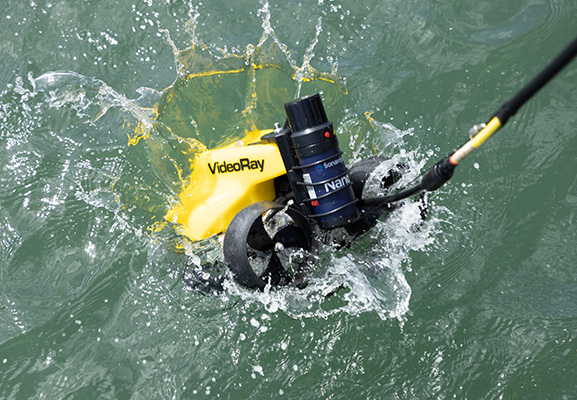
Micro-Ranger 2 USBL
The ‘baby’ of the Ranger 2 family and the ideal entry-level USBL, Micro-Ranger 2’s compact size contradicts its impressive performance. It may be our smallest underwater tracking system to date, but it will have a big impact on your operations.
Never used a USBL system before? No problem. Micro-Ranger 2 is simple to setup and use.
Need to know where your targets are? Micro-Ranger 2 has them covered. Precision, ease of use and versatility come as standard. It’s built around the same market-leading hardware and digital acoustic technology you’ll find in our family of deep water USBL systems, but for significantly less cost and complexity.
For the full picture of what your Micro-Ranger 2 USBL is capable of, please visit its dedicated product page.
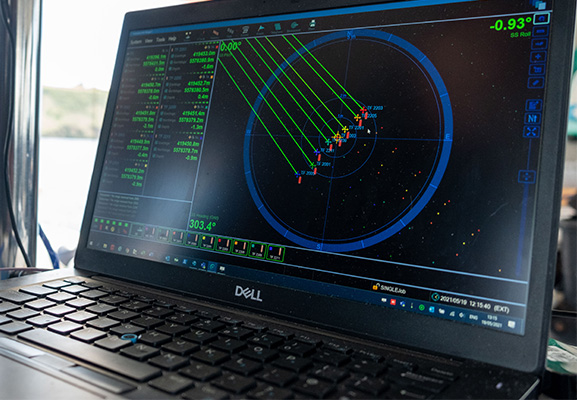
Mini-Ranger 2 USBL
Mini-Ranger 2 is our mid-level USBL target tracking system, perfect for nearshore operations; UXO surveys, search and recovery and structure inspections. With a 995 m operating range, extendable to 4,000 m, it can track up to ten underwater targets simultaneously, including divers, towed instruments, ROVs and AUVs.
Choose to add the Marine Robotics software pack and it will communicate with subsea robotic platforms, sharing positions and exchanging data.
A compact, easily installed, system it’s your ideal choice for temporary installation on small survey vessels, as well as USVs.
For the full picture of what your Mini-Ranger 2 USBL is capable of, please visit its dedicated product page.

Ranger 2 USBL
Ranger 2 is the largest USBL in the family and the most powerful USBL on the market. Able to simultaneously track up to 99 targets with up to 11,000 m range, it is anything but standard.
Recommended for installation on large vessels and USVs, Ranger 2 incorporates over 30 years of our USBL innovation and know-how. It has a global vessel track record and is used for offshore energy, research, cable-lay, salvage and naval operations, to name but a few.
Sharing a common platform with other Sonardyne USBLs, Ranger 2 supports all industry standard DP telegrams and acoustically aided inertial navigation systems (INS).
For the full picture of what your Ranger 2 USBL is capable of, please visit its dedicated product page.
6G
Our 6th generation (6G) technology provides faster, secure and robust data communications from seabed to surface . This gives you speedier updates on the location of your assets and access to your vital data.
Wideband
Our wideband technology enables digital high-throughput data, range resolution and accuracy with low latency. Teamed with our 6G it gives you fast, reliable, accurate data over greater distances.
Robotics
Uncrewed, autonomous surface and underwater vehicles are increasingly used for coastal, deep sea and over-the-horizon operations, reducing costs, risks and carbon footprint. Thats why we have a dedicated “bolt on” pack for our Ranger 2 to enhance your robotics operations.
Dynamic positioning
We’ve been engineering high integrity position reference systems for dynamically positioned vessels since the early 1990s. Our USBL, LUSBL and SPRINT- INS products provide dynamic positioning solutions for a range of vessels and environments.
What is possible
As our mainstay USBL system for nearshore operations, Mini-Ranger 2 is a tracking, positioning and communications system with robotic capability. Straight out of the box it can track and communicate up to 995m. With an extension pack, this can be extended to 4,000m making it suitable for any AUV, diver, ROV, towfish, USV or vessel in shallow to mid-depth waters across many operational areas.
For ocean science and environmental campaigns, its survey-grade accuracy adds precision to your operations whether they involve; environmental surveys, aquaculture, coastal science, research vessels, sensor tracking or site survey and characterisation for offshore renewable energy.
For Naval test ranges and military diving – Mini-Ranger 2 allows you to track up to ten divers simultaneously, bringing precision and safety to maneuvers.
It offers more than just tracking – with the addition of a robotics pack – Mini-Ranger 2 allows you to communicate with, command and control up to ten vehicles simultaneously within your marine robotics fleet.
Technology Focus – Mini-Ranger 2 USBL for renewables
USBL tracking without the complexity – when micro is too small, but Ranger 2 is too big – mini is just right
Why choose it?
- Portable and quick to mobilise; a great choice for small survey vessels, moored barges and uncrewed vessels
- 995 m operating range; extendable to 4,000 m (requires export license)
- System accuracy 0.2%–1.3% of slant range, depending on system configuration
- Optional Marine Robotics software feature pack provides command and control of AUVs
- Works with a wide range of 6G transponders including RT 6 acoustic releases
- Simple to configure and easy to use, even with no experience of acoustic tracking technology
- Developed and supported by a company with over 50 years of experience in innovative underwater technology
The kit
HPT 3000
HPT 3000 is the highly capable surface deployed USBL transceiver at the heart of the Ranger 2 system. It’s suitable for all your operations, whether they involve shallow water, high elevation, long lay back operating scenarios, or data telemetry.
You can choose to deploy it over the side of your vessel on a simple pole arrangement or under the hull of a USV. If your operations demand a permanent deployment, a through-hull deployment setup is possible. Simply fit a transponder to each target you want to track and you’re ready to go!
HPT 3000 simply connects to your PC running the Ranger 2 software – the same process and software applies across the whole Ranger 2 family. As standard, it enables data harvesting from seafloor instruments, using crewed or uncrewed vessels, and works with a wide range of 6G transponders including RT 6 acoustic releases.
Transponder options
A wide range of our 6G transponders can be used with Mini-Ranger 2, allowing you to select the right one for your operations. If you’re tracking divers, small to medium sized AUVs or micro-class ROVs, Nano is a popular choice. When tracking larger targets such as a towfish, a crane wire lowering a structure, or an observation-class ROV, WSM 6+ will meet your requirements. If you need to release and retrieve seabed assets, our RT 6 allows you to deploy, track and recover seafloor equipment – all in one instrument.
Mini-Ranger 2 in action
Bringing special order accuracy to small diameter AUVs
Read moreMini-Ranger 2 for the next-level USV operations
Read moreL3Harris takes USBL-aided AUV navigation to the next level
Read morePerformance
• 0.2% positioning repeatability using external MRU
• 1.3% positioning repeatability using internal MRU
• Up 10 targets tracked, simultaneously
• 995 m maximum tracking range, extendable to 4,000 m
• 3 Hz position update rate
Acoustics
• MF frequency (19–34 kHz)
• Supports Sonardyne Messaging Service for data exchange
• Transceiver optimised for high elevation tracking in quiet environments
• Sonardyne Wideband 2 acoustics for reliable performance in both shallow and deep water
Ownership
• ITAR Controlled: No
• Warranty: 1 year return to Sonardyne service centre
• What’s in the box: HPT 3000, SIU, deck cables, software, manual
• UK Export Licence: Not required for 995 m version. Required for extended range (4,000 m) version
Overview
• Whatever you want to track, it adds survey-grade precision and accuracy to your operations
• Mini Ranger 2 opens up the possibilities for your marine robotics fleet to communicate, command and control them
• Provides flexibility to your underwater operations without compromising performance
Specifications table
| Feature | Specification |
|---|---|
| Design | Powerful features for commercial users |
| Easy to transport, hardware comes in one box | |
| Configurable for manned or unmanned vessel operations | |
| Quick to mobilise, configure and uninstall | |
| Shares common platform with other Sonardyne USBLs | |
| Performance | 0.2% positioning repeatability using external MRU |
| 1.3% positioning repeatability using internal MRU | |
| Up 10 targets tracked, simultaneously | |
| 995 m tracking range; extendable to 4,000 m | |
| Uo to 3 Hz position update rate | |
| Acoustics | MF frequency (20–34 kHz) |
| Sonardyne Wideband 2 digital acoustics for reliable performance in both shallow and deep environments | |
| Supports Sonardyne Messaging Service for data exchange | |
| Transceiver optimised for high elevation tracking |
Frequently asked questions
Planning 6G beacon deployments
CASIUS calibration recommendations
What is a USBL and how does it work?
How to use Auto Discover to scan the water for unknown transponder addresses
How to mount and extract an ISO image
Mini-Ranger 2 and Micro-Ranger 2 software installation
MF Beacon Positioning for Transition Zone and Ocean Bottom Cable Applications
HF Beacon Positioning for Transition Zone and Ocean Bottom Cable Applications
How to change your Mini-Ranger 2 IP address
Opening a .DJF file on Sonardyne De Novo Job Viewer
How to download or upload files using Filezilla
How do I mark where my RT 6-1000 is deployed?
Can I get USBL position updates from my AUV with Ranger 2/ Mini-Ranger 2?
Has anyone ever installed an echosounder and Ranger 2 USBL transceiver directly beside each other? Would this work?
Can I perform a USBL verification in shallow water without an ROV to deploy or recover the beacon?
How quickly can I start tracking beacons with Mini-Ranger 2
How do USBLs work?
How do I perform an LBL calibration in Fusion 2?
Advantages of using Ranger 2 for ROV tracking
When to use Depth Aiding
What to consider when mounting acoustic transducers
What acoustic address should I use for my USBL transponder
How to interface Ranger 2 into a 3rd party survey system
How can an uncrewed system interact with Ranger 2 software?
How can I synchronise a clock on my AUV to a GNSS reference using Ranger 2?
What is Telemetry Tracking, and why would I need it?
How to release an RT 6 acoustic release transponder using Ranger 2
How to set up an update rate in Ranger 2
How to set the operating range in Ranger 2
How to configure sound speed in Ranger 2
STP files
Software and firmware
Software and control hardware
Top tips
Manuals and quick start guides
Technical bulletin
Overview
Nano operates in the Medium Frequency (MF) band, so it’s compatible with our family of Ranger 2 USBL topside systems; Micro, Mini and Standard.
Measuring in around 160 mm in length, 55mm in diameter and weighing in at under 200 grams in water – depending on the exact version you’re using – Nano is small enough to fit on the smallest of vehicles and light enough for a diver to barely know they’re carrying one.
Nano’s built using the same signal technology platform you’ll find in our award-winning 6G product line – Wideband 2. So you can expect reliable acoustic communications in all operating environments, accurate position fixes and a continuous stream of location updates.
At a glance
- 2nd generation design, extended battery life and 500 m depth rating
- NFC, connector and OEM housing options
- NFC version is just 160 mm long by 55 mm in diameter. USBL transponders don’t get much smaller than this
- Depth rated to 500 m
- Easy to fit to divers, ROVs, equipment and AUVs
Nano features a 90-day quiescent battery life, ideal for long-term deployments and recovering lost assets. Nano’s battery lasts up to 12 hours, even when being actively tracked with one second position update rate.
The NFC Nano features a unique connector-less design that is recharged and programmed via the Nano Docking Station. The NFC technology allows full configuration of the Nano whilst maintaining its rugged “strap on and go” form factor.
The cabled Nano features an industry standard Subconn connector allowing the Nano to be permanently powered, and can also be used in Responder mode.
When purchasing a Micro-Ranger 2 USBL system, we include two Nanos as standard. You’re able to choose between the NFC or connector version at no additional cost.
For vehicle programs and integrators, the Nano OEM when paired with an OEM transducer provides all the functionality of the housed transponders, in a form factor that can be mounted in any system.
Nano has an inbuilt depth sensor and is a 500 m depth rated unit.
Performance
500 m depth rated
995 m slant range
12 hours battery life (at 1 second update rates)
90-day listening life
6G
Our 6th generation (6G) technology provides faster, secure and robust data communications from seabed to surface. This gives you speedier updates on the location of your assets and access to your vital data.
Wideband
Our wideband technology enables digital high-throughput data, range resolution and accuracy with low latency. Teamed with our 6G it gives you fast, reliable, accurate data over greater distances.
Design
160mm x 55mm, 149 grams weight in water (NFC version)
192mm x 55m, 162 grams weight in water (connector version)
Credit card sized OEM version available
Polymer housing construction. Lightweight and robust. ROHS compliant.
Specifications table
| Feature | Type 8262 Nano NFC | Type 8262 Cabled | Type 8262 Nano OEM | |
|---|---|---|---|---|
| Operating Range | 995 m | 995 m | 2,000 m | |
| Depth Rating | 500 m | 500 m | n/a | |
| Transducer Depth Rating | n/a | n/a | 3,000 m | |
| Operating Frequency | MF (20–34 kHz) | MF (20–34 kHz) | MF (20–34 kHz) | |
| Transducer Beam Shape | Omni-directional ±130º | Omni-directional ±130º | Omni-directional ±130º | |
| Source Level (re 1 µPa @ 1 m) | 184/175 dB | 184/175 dB | 175 dB | |
| Range Precision | Better than 15 mm | Better than 15 mm | Better than 15 mm | |
| Communication Interface | USB in dock | RS232, 3V3 TTL | RS232 (2,400–115,200 baud), 3V3 TTL | |
| Depth Sensor | 50 bar abs +/-0.7% FS | 50 bar abs +/-0.7% FS | 50 bar abs +/-0.7% FS | |
| Power Supply | USB dock | 12–28 V dc | 12–28 V dc | |
| Power Consumption | Wideband Listening (Battery) | n/a | 5 mW | 5 mW |
| Wideband Listening (Ext. Power) | n/a | 20 mW (including trickle charge) | 20 mW (including trickle charge) | |
| Battery Charging | n/a | 60 mW to 2.5 W (depending on battery charge state) | 60 mW to 2.5 W (depending on battery charge state) | |
| Peak (During Transmission) | n/a | <30 W SMS, <20 W Modem | <30 W SMS, <20 W Modem | |
| Battery Life | Quiescent Listening | >90 days | >90 days | >90 days |
| 1 Sec Ping Rate | >12 hours | >12 hours | >12 hours | |
| Battery Charge Time | 12 Hours | 12 Hours | 12 Hours | |
| External Connections | n/a | Subconn MCIL8M | Molex Microfit | |
| Mechanical Construction | Polymer | Polymer | n/a | |
| Transducer Wire Length | n/a | n/a | 150 mm (6”) | |
| Operating Temperature | -10 to 45°C | -10 to 45°C | -10 to 45°C | |
| Storage Temperature | -20 to 55°C | -20 to 55°C | -20 to 55°C | |
| Dimensions | Length x Diameter | 160 x 55 mm | 192 x 55 mm | n/a |
| Transducer (Length x Diameter) | n/a | n/a | 72 x 49 mm | |
| PCB Board Assembly (Length x Width x Height) | n/a | n/a | 95 x 43 x 42.5 mm | |
| Hole Centres (M2 clearance – Length x Width) | n/a | n/a | 71.5 x 35 mm | |
| Weight in Air/Water | 486/149 g | 584/162 g | n/a | |
| Weight (OEM) | PCB in Air | n/a | n/a | 138 g PCB + 12 g cable |
| Transducer in Air/Water (Estimated) | n/a | n/a | 200/150 g |
Frequently asked questions
How to connect and configure a Nano Transponder using NFC Configurator
6G Terminal Lite Range Test
What’s new in Micro Ranger 2?
What to consider when mounting acoustic transducers
Tips for tracking ROVs with Micro-Ranger 2
Tips for tracking Divers with Micro-Ranger 2
How can I quickly and easily track a towed body using Micro-Ranger 2?
How to set up an update rate in Ranger 2
STP files
Software and firmware
Software and control hardware
Top tips
Datasheets
Manuals and quick start guides
Did you know?
Nano can be used as part of Micro-Ranger 2 USBL
Maximum efficiency with the best value underwater tracking system on the market
It’s built on the same tried and tested cutting-edge hardware and digital acoustic technology found in the rest of our Ranger USBL family, so you can expect unrivalled performance without the complexity or cost. Its robust and compact format is ideal for your shallow coastal water and inland waterway operations thanks to its ultra-portable design. Track your divers and autonomous underwater vehicles at up to 995 m range.
Whether you’re a first-time user of USBL technology or a seasoned professional, you’ll find Micro-Ranger 2 incredibly easy to use – it’s a one box solution, make a few simple connections and your operation is ready to go!
We’ve engineered everything to fit in a robust carry case. Apart from your laptop to run the software, nothing else is needed and it’s so compact you can carry it on a plane. A built-in battery provides more than 10 hours of continuous use, enough for a full day of activity out on the water. The case can also take external power from a boat or shore supply.
Why choose it?
- Portable, everything you need comes in one box
- Quick to connect up and deploy
- Easy to use, no training needed
- Shares common platform with other Sonardyne USBLs
- Light and compact, attach to divers and small vessels without restricting their operations
- Developed and supported by a company with over 50 years of experience in innovative underwater technology
The kit
Transceivers
Ideal for tracking targets in shallow water up to the surface, the omni-directional acoustic tracking transceiver (MRT) is small and light enough to deploy on its cable from a pontoon, over the side of a vessel or on the sensor spar of a USV.
Micro-Ranger 2 software has many of the innovative features from our other larger Ranger 2 USBL systems to ensure you have everything you need to track underwater targets.
If your operations need to track and communicate with small AUVs or subsea drones, an optional Marine Robotics feature pack is available.
Transponders
What every diver, small towfish and micro ROV / AUV should be wearing, our Nano transponders are the perfect size and weight for tracking your important assets in shallow water without interfering with their movement. The two you will receive with Micro-Ranger 2 are second generation units offering extended battery life and depth rating. A connector-equipped Nano is also available allowing it to operate continuously via an external power source.
Simply choose the type of Nano transponder to suit your operation at the time of ordering. Micro-Ranger 2 can also be used with other Sonardyne 6G transponders including WSM 6+ and WMT.
Integrator/Marine robotics kit
If your operation needs you to both track and communicate with targets, the Micro-Ranger 2 integrator system kit is available. It comes complete with our add-on Marine Robotics software pack and AvTrak 6 Nano, which support two-way messaging, vehicle control and tracking in one small instrument.
Micro-Ranger 2 and MSDS Marine
Performance
• Up 10 targets tracked, sequentially
• 995 m maximum tracking range
• 3 Hz position update rate
• Up to 5% of slant range system accuracy
Acoustics
• MF frequency (20–34 kHz)
• Omni-directional coverage for wide area tracking
• Sonardyne Wideband 2 acoustics for reliable performance in shallow water
• Supports Sonardyne Messaging Service for data exchange (200 to 9,000 bps)
Ownership
• IP67-rated ruggedised carry case
• ITAR Controlled: No
• UK Export Licence: Not required
• Warranty: 1 year return to Sonardyne service centre
• What’s in the box: MRT with 10 m of cable, command unit, 2 x Nanos (gen 2), charger, ancillary cables, external GNSS antenna, software (PC not supplied)
Overview
• Portable and quick to mobilise
• Ideal for supporting science operations conducted in rivers, lakes and coastal waters.
• Can be configured for installation on a uncrewed surface vessel for remote missions.
Specifications table
| Feature | Specification |
|---|---|
| Design | Portable, everything you need comes in one box |
| Quick to connect up and deploy | |
| Easy to use, no training needed | |
| Shares common platform with other Sonardyne USBLs | |
| Performance | Up to 5% of slant range system accuracy |
| Up 10 targets tracked, sequentially | |
| 995 m maximum tracking range | |
| 3 Hz position update rate | |
| Acoustics | MF frequency (20–34 kHz) |
| Sonardyne Wideband 2 acoustics for reliable performance in shallow water | |
| Supports Sonardyne Messaging Service for data exchange (200 to 9,000 bps) | |
| Omni-directional coverage for wide area tracking |
